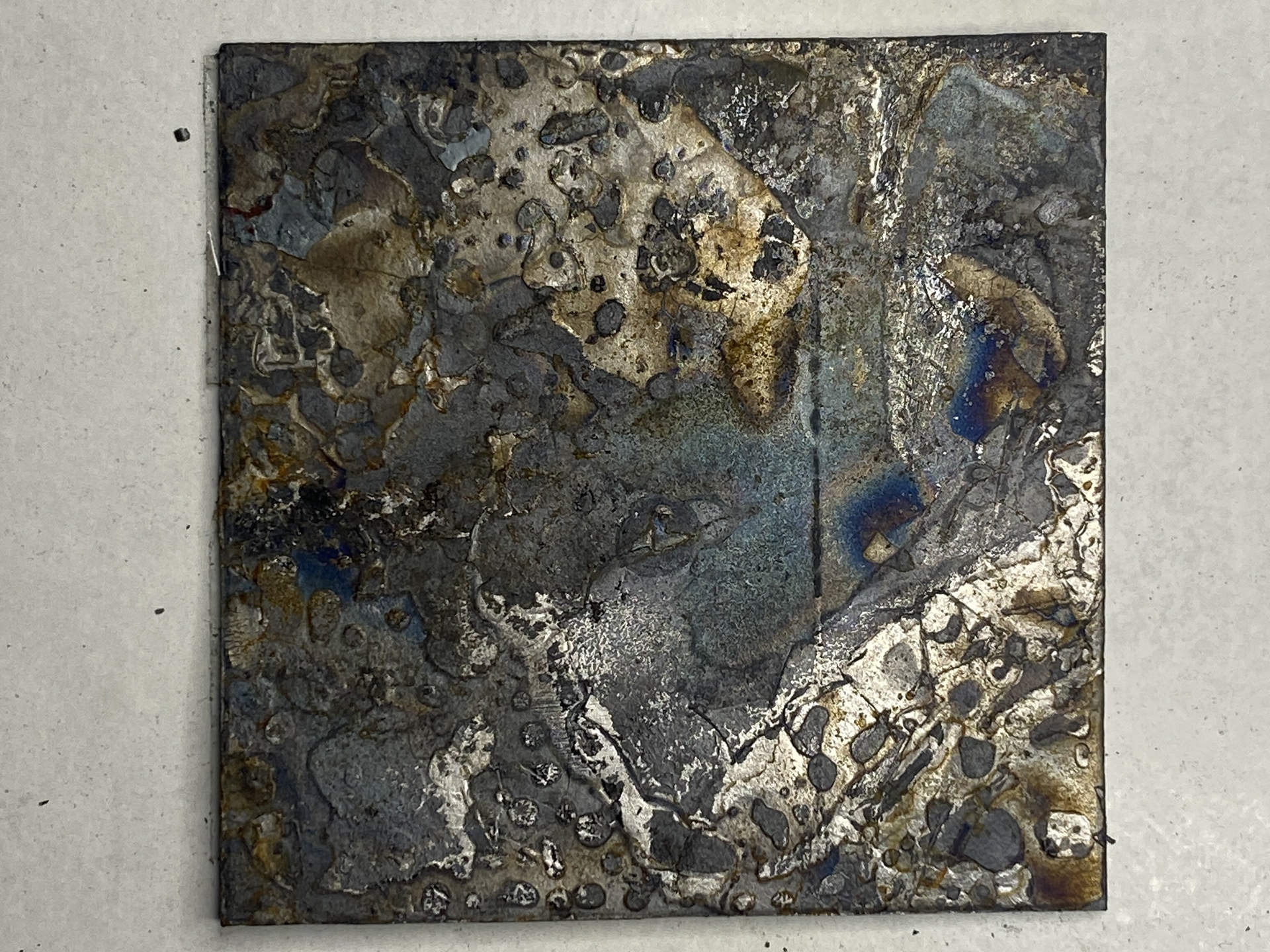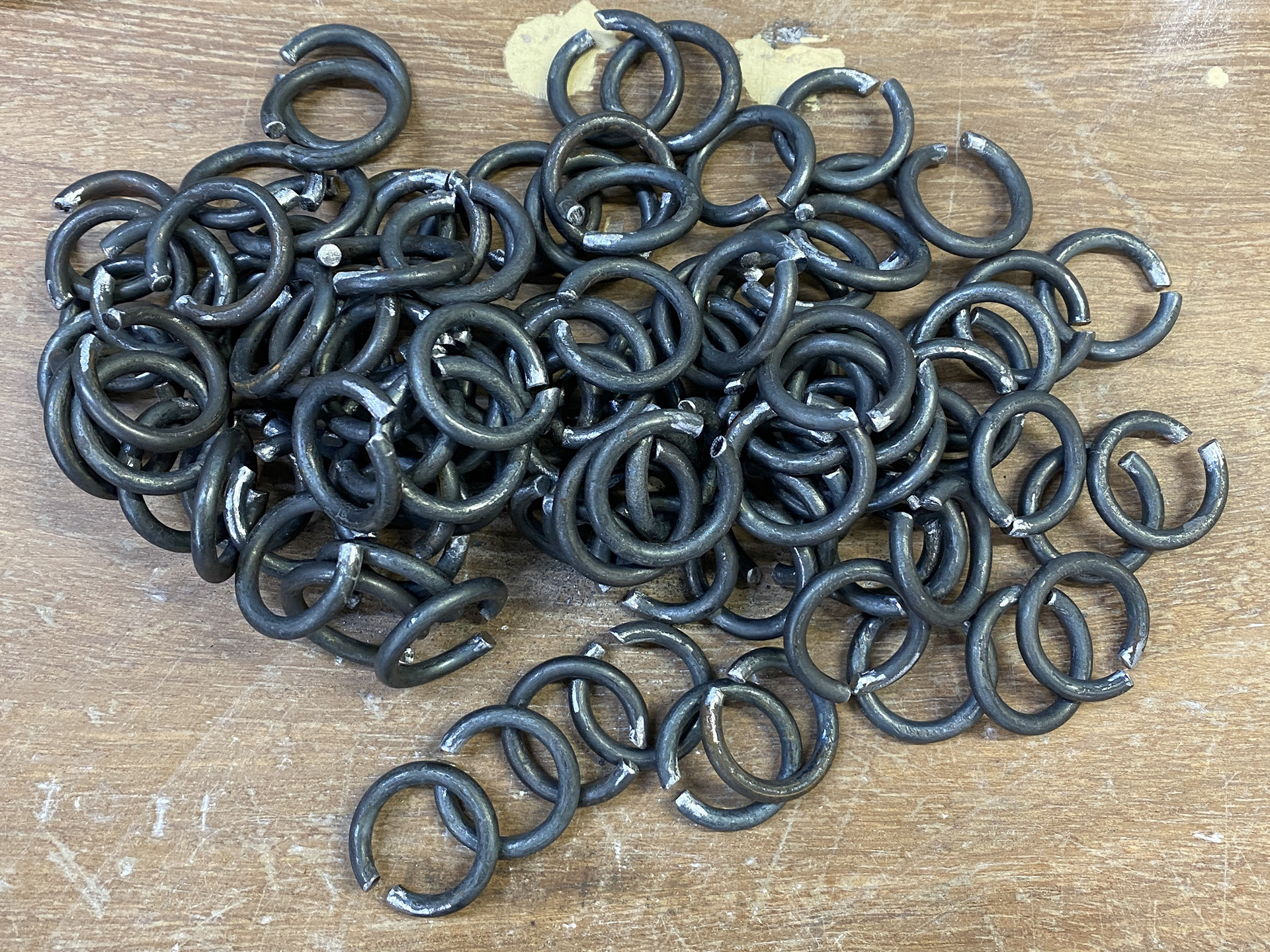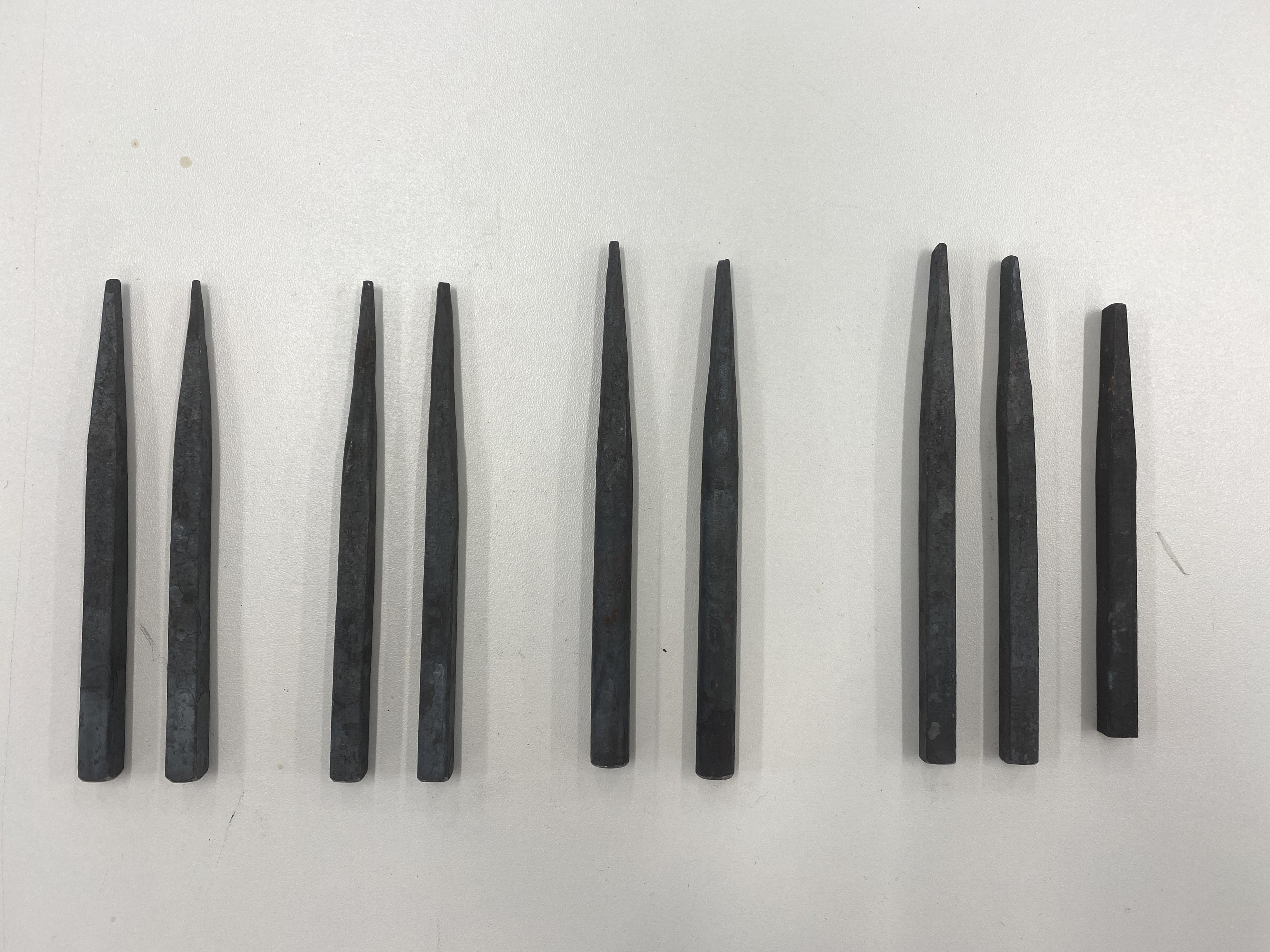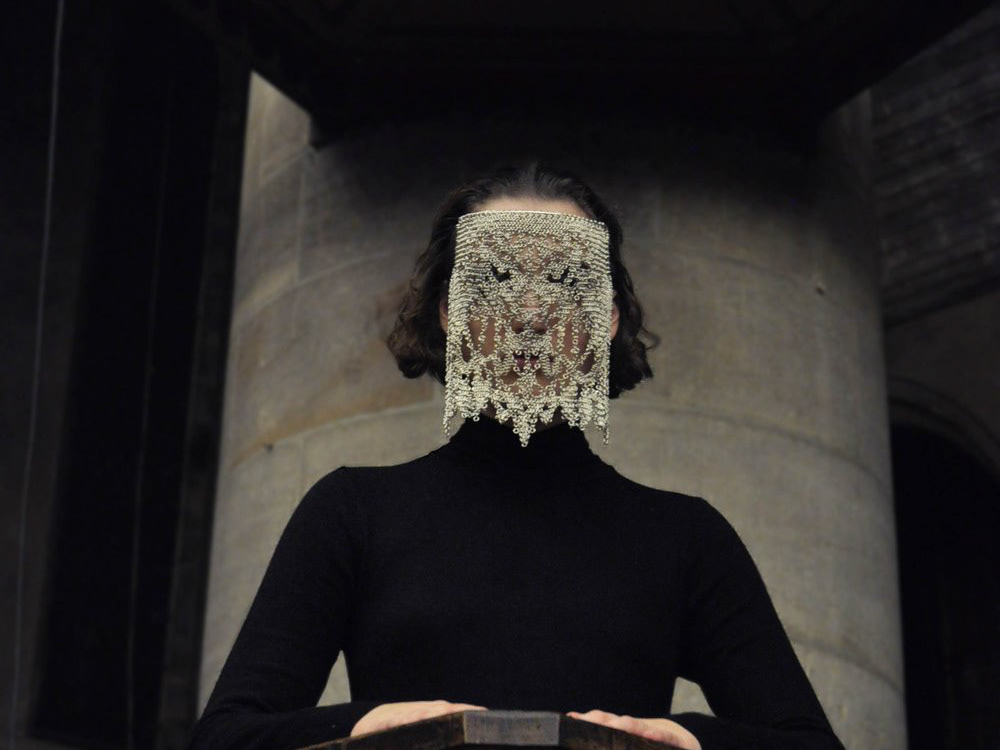During my gallery visits I sought to capture a wide range of forms and details. I looked at the different styles and historical advancements of similar pieces or location on the body. This broad approach gives me a wide breadth of inspiration which I can pull from and narrow down my scope during the designing phase. Additionally, looking across the body at different pieces helps me to understand the methods of production and technical aspects of how these suits of armour were constructed, so that I can extract it and apply it into my own work.

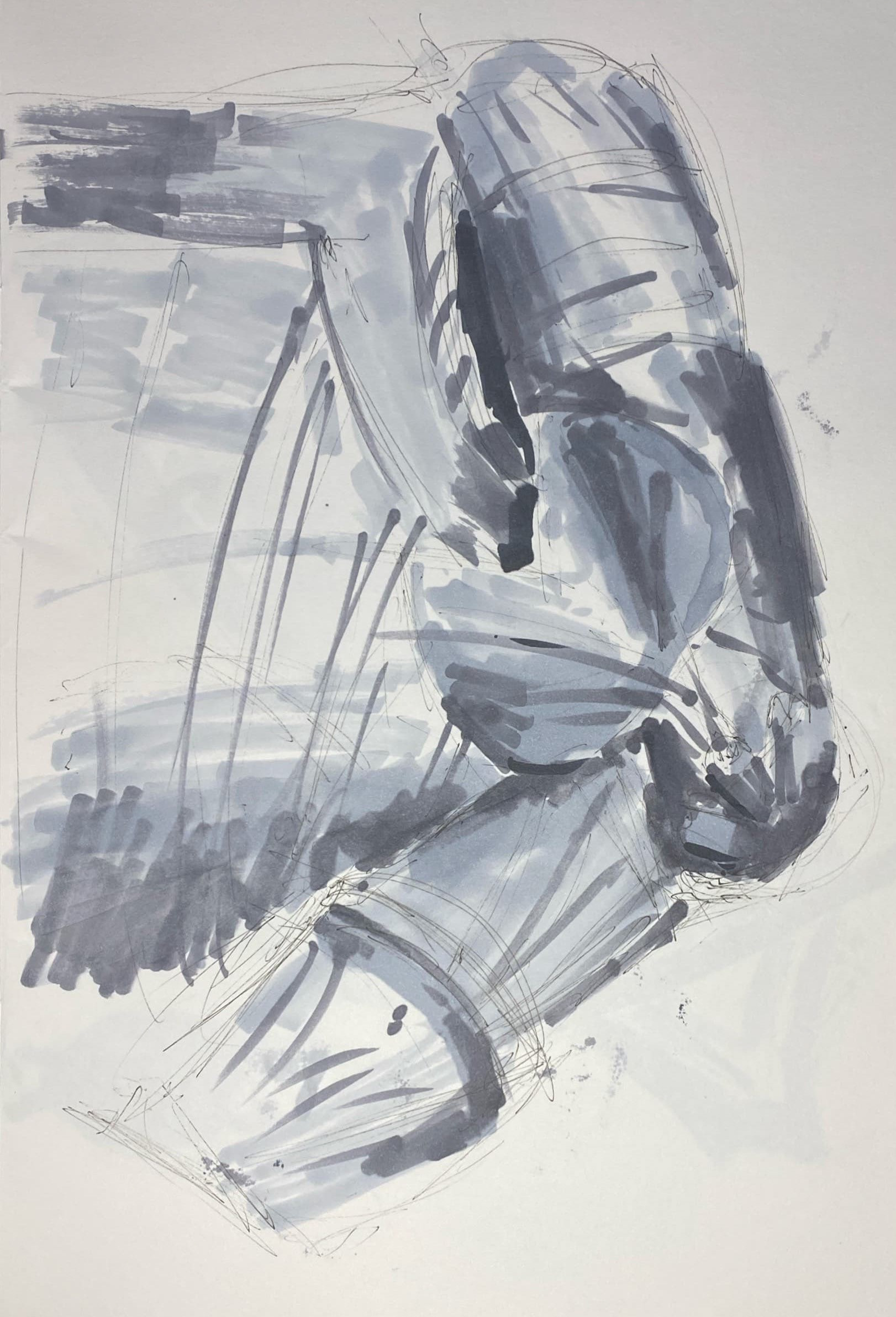

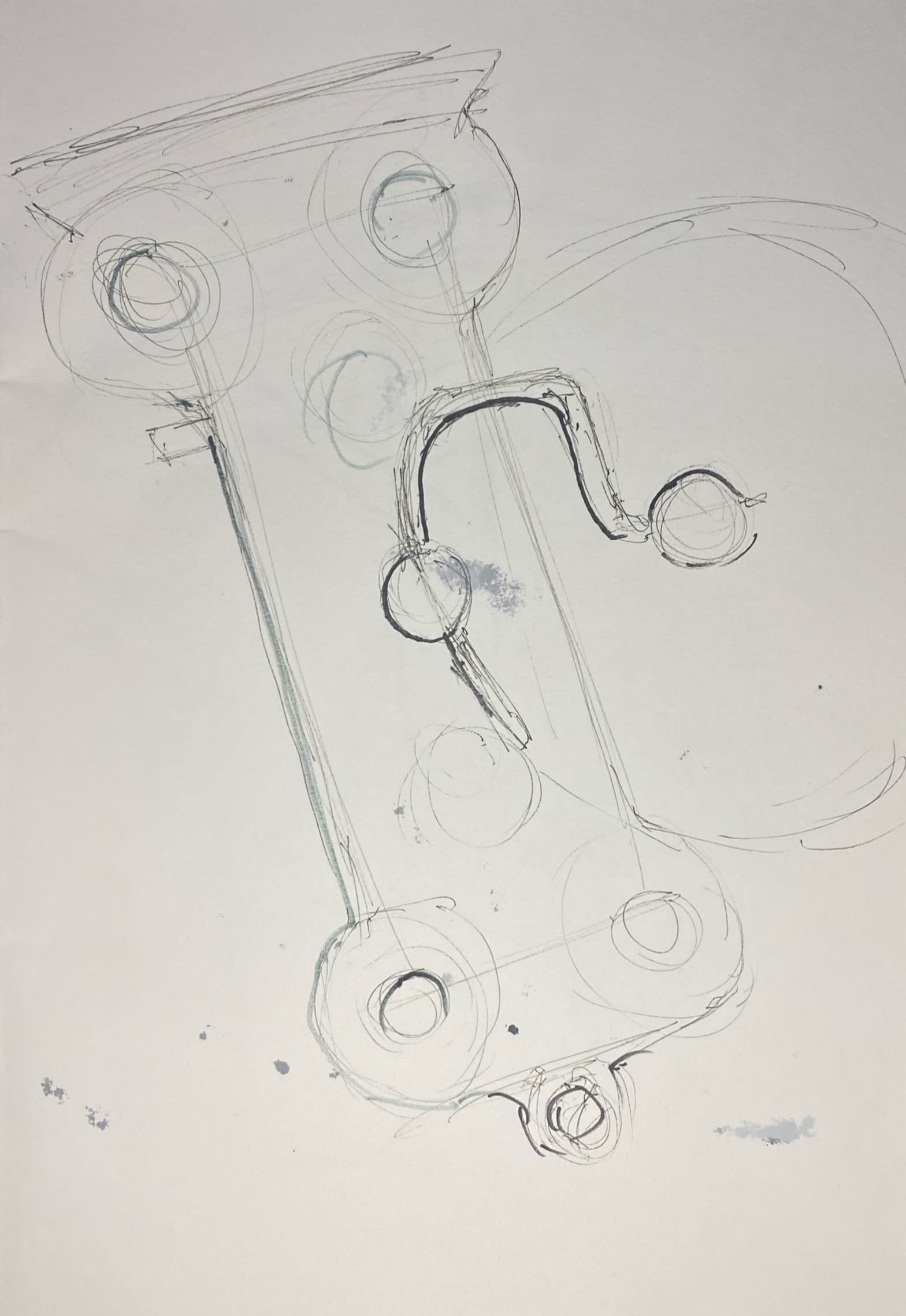
At the Tower of London
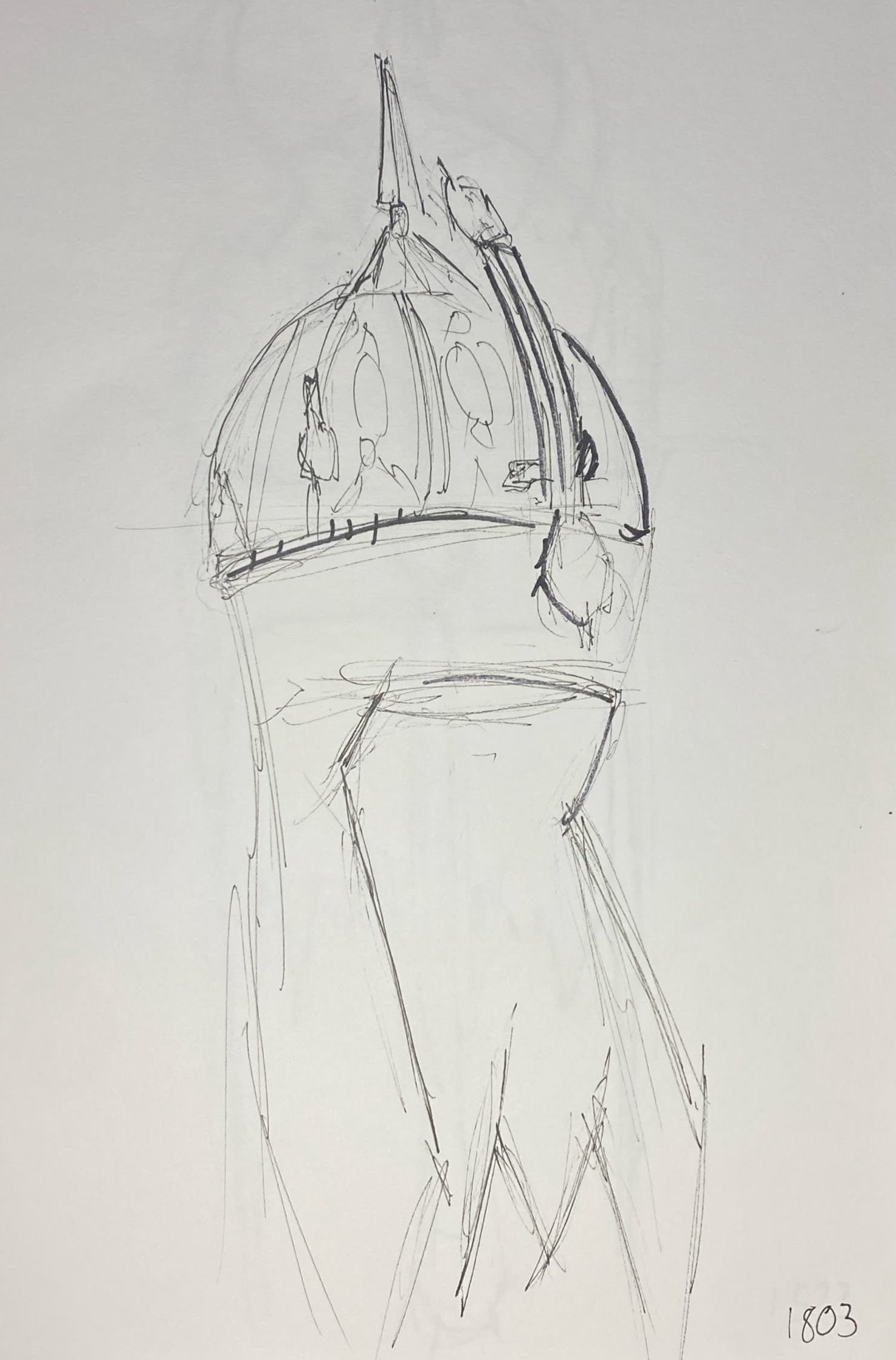


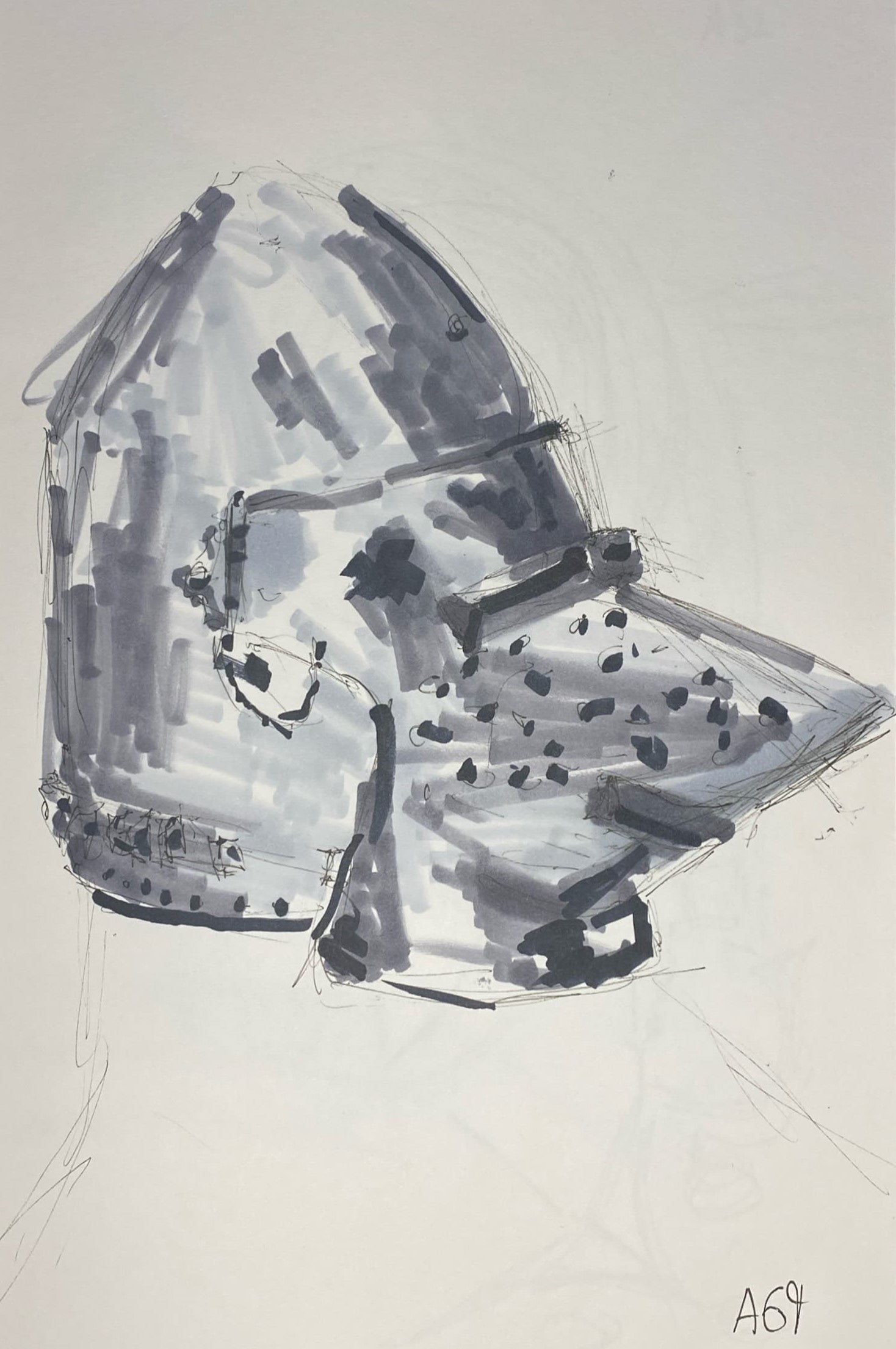

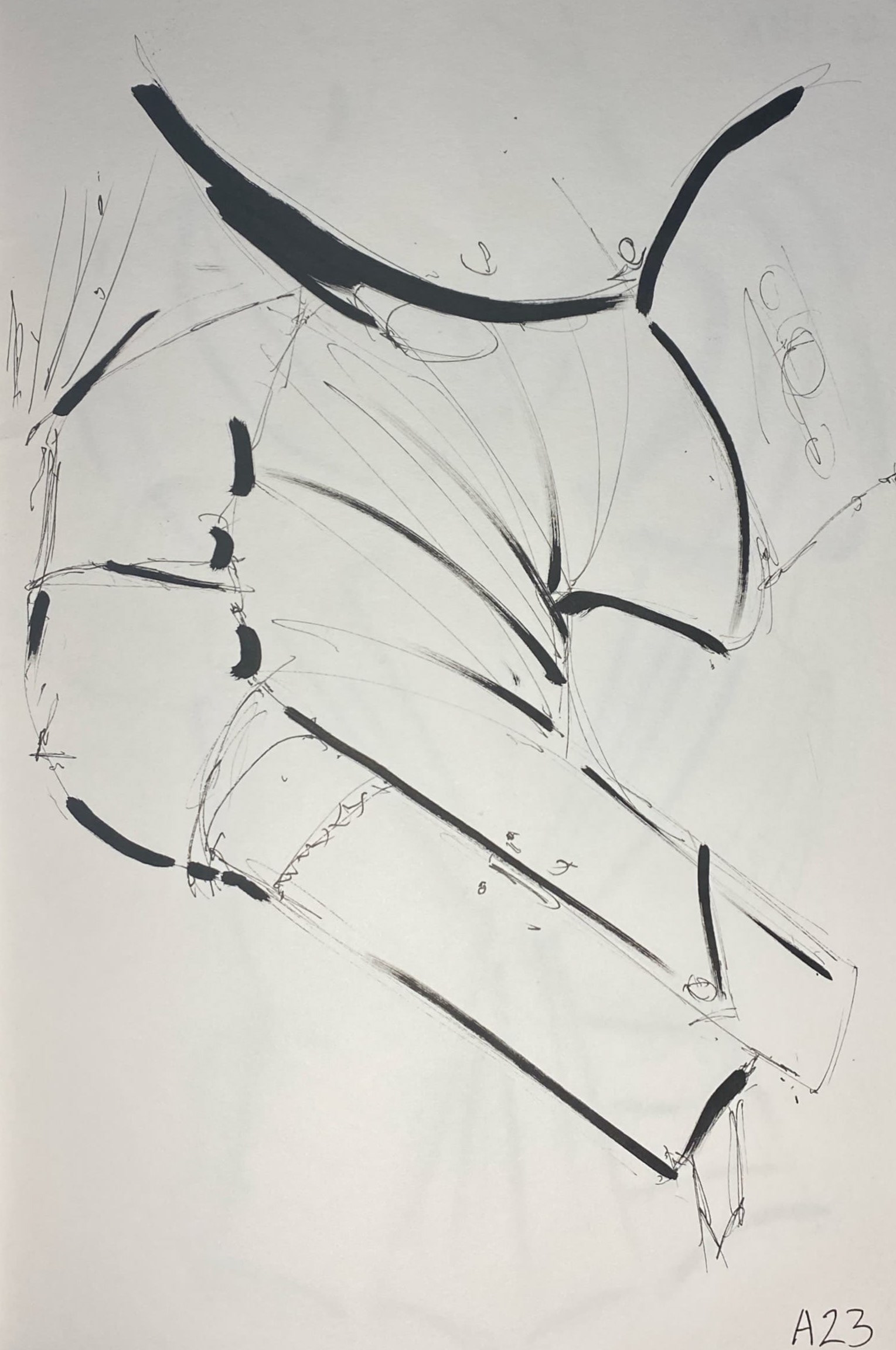


At the Wallace Collection
My sketches throughout my visits aimed to capture the broad forms and fluid lines. I looked to capture the emotion and style of the pieces rather than an exact record.
Examples of Helmits

Germanic in the Maximilian style, around 1520

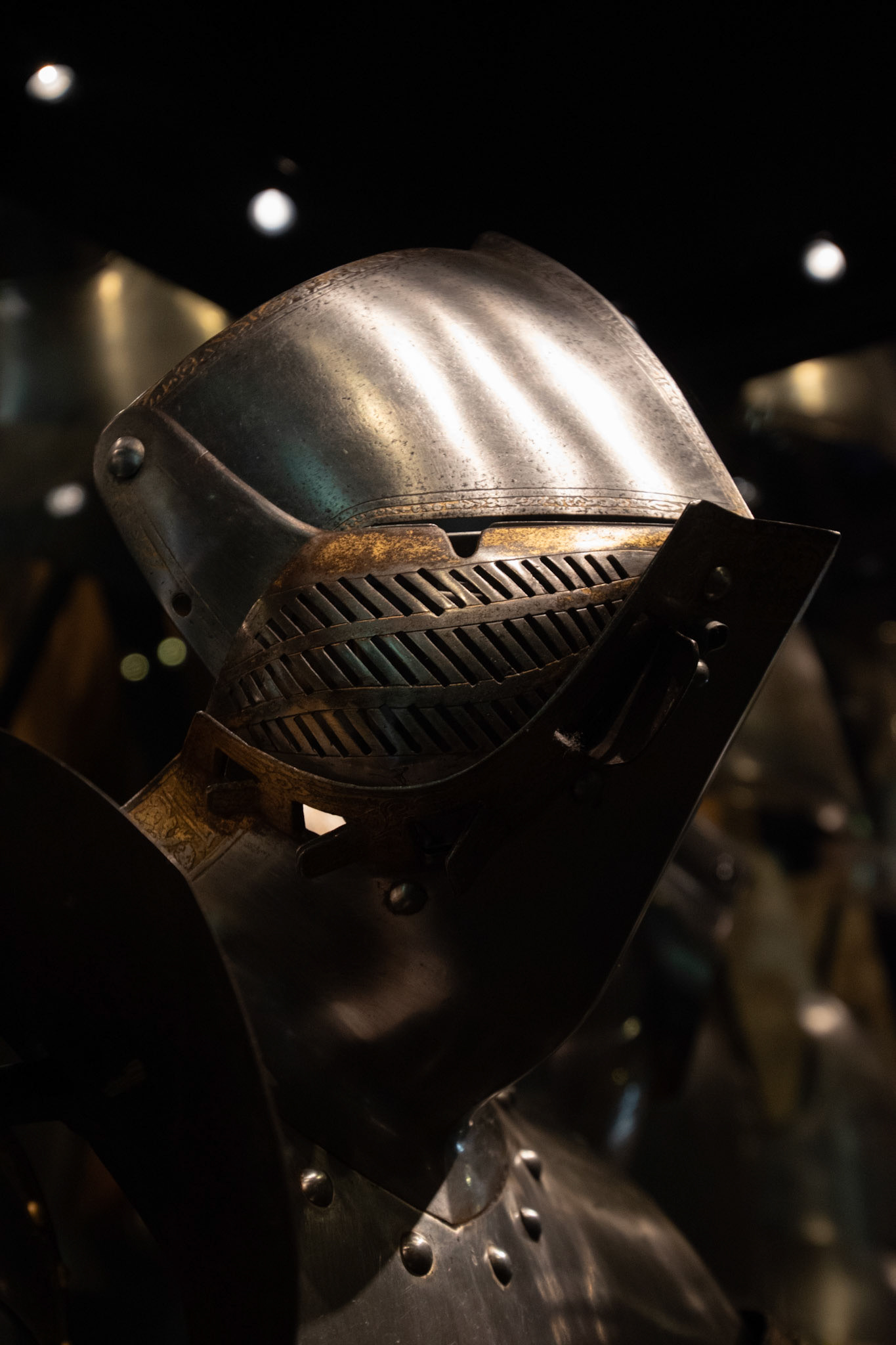
English, for King Henery VIII, 1540

English, around 1590

English Greenwich, by Erasmus Kirkenar, about 1544
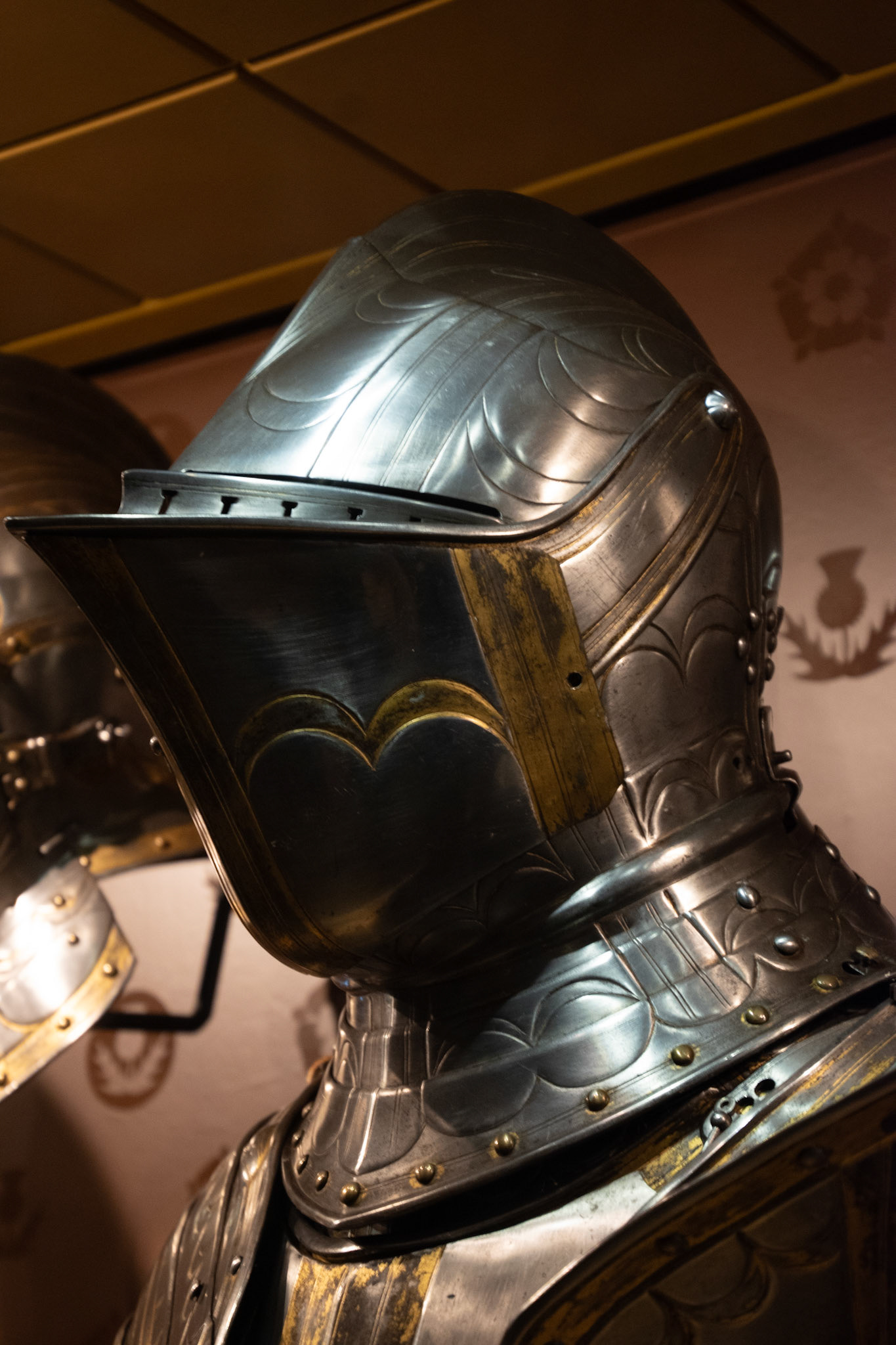

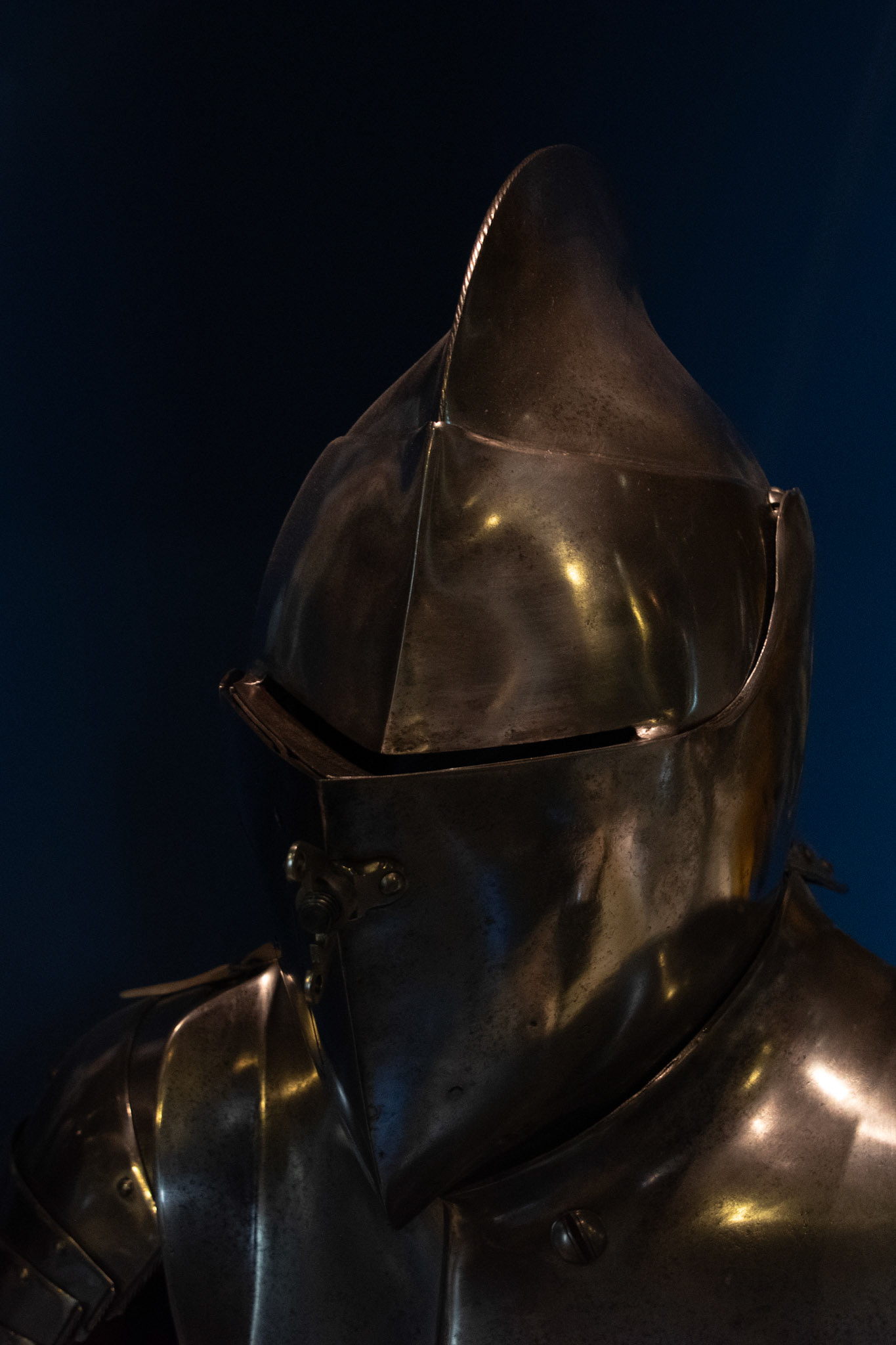
Germanic Augsburg, about 1600

Germanic Augsburg, for Duke Friedrich Wilhelm I of Saxe-Altenburg, Around 1590
Pictures taken at the Tower of London
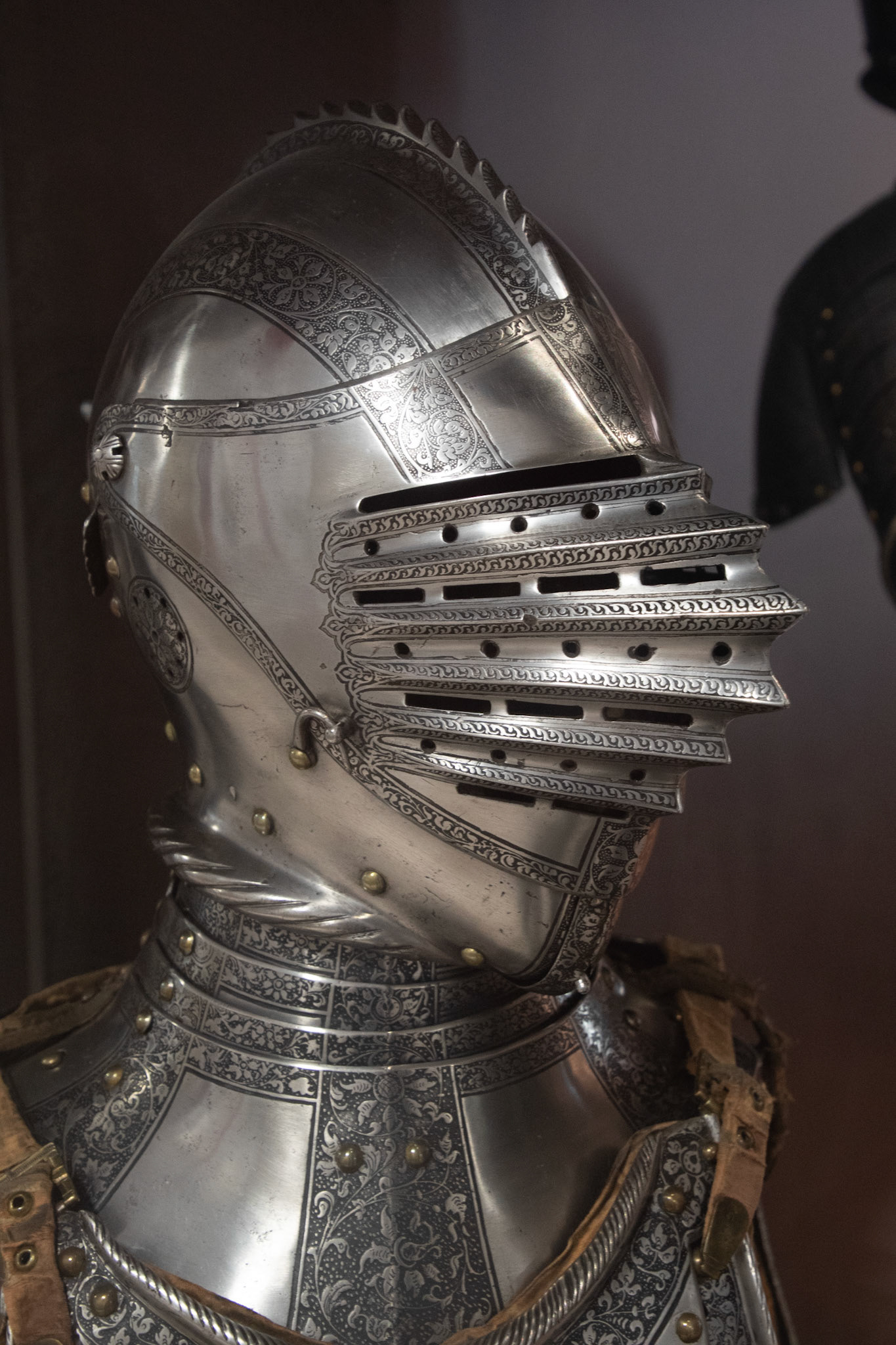
Germainc, about 1560
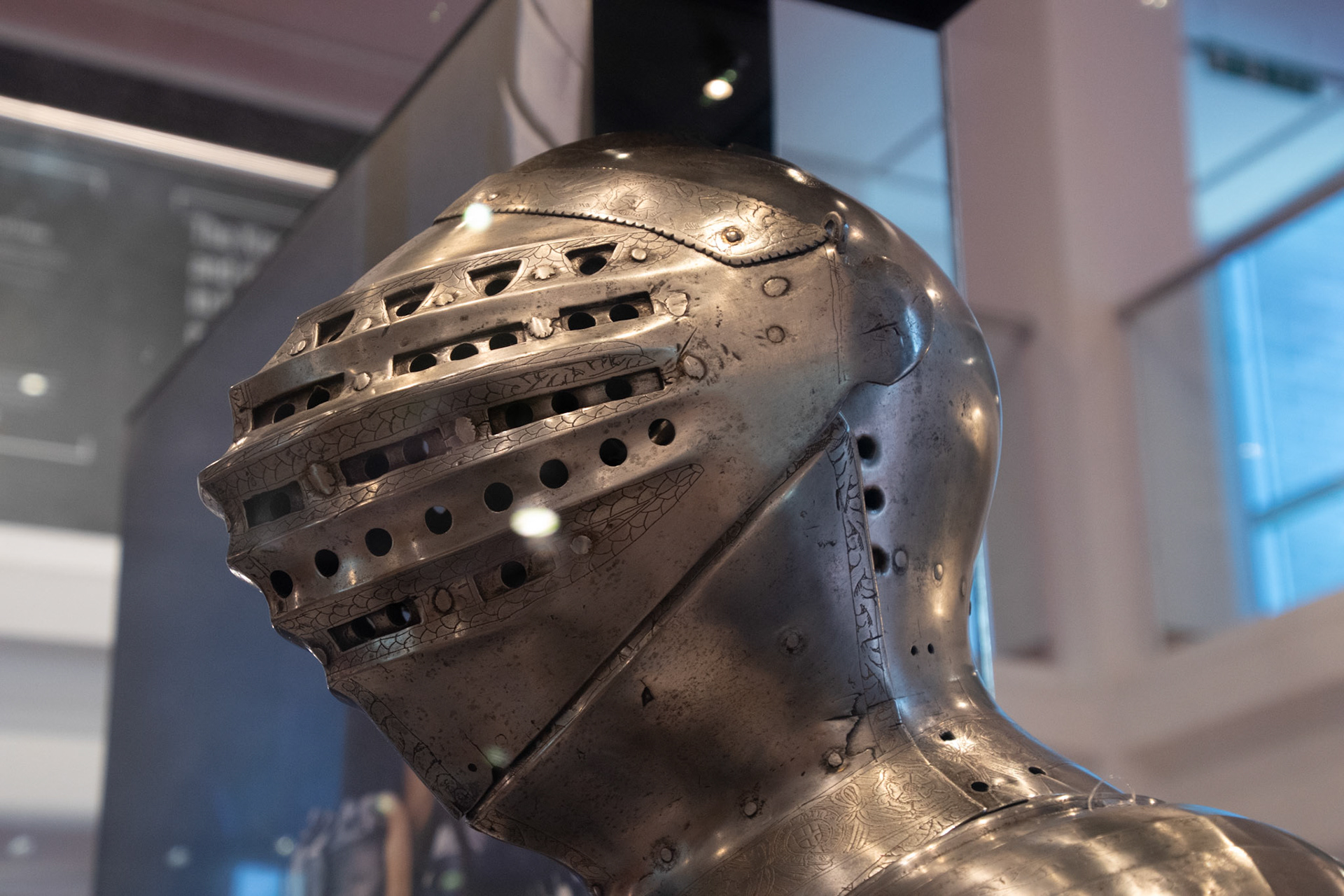
English, Greenwich, for King Henry VIII, 1520

Danish, 1630
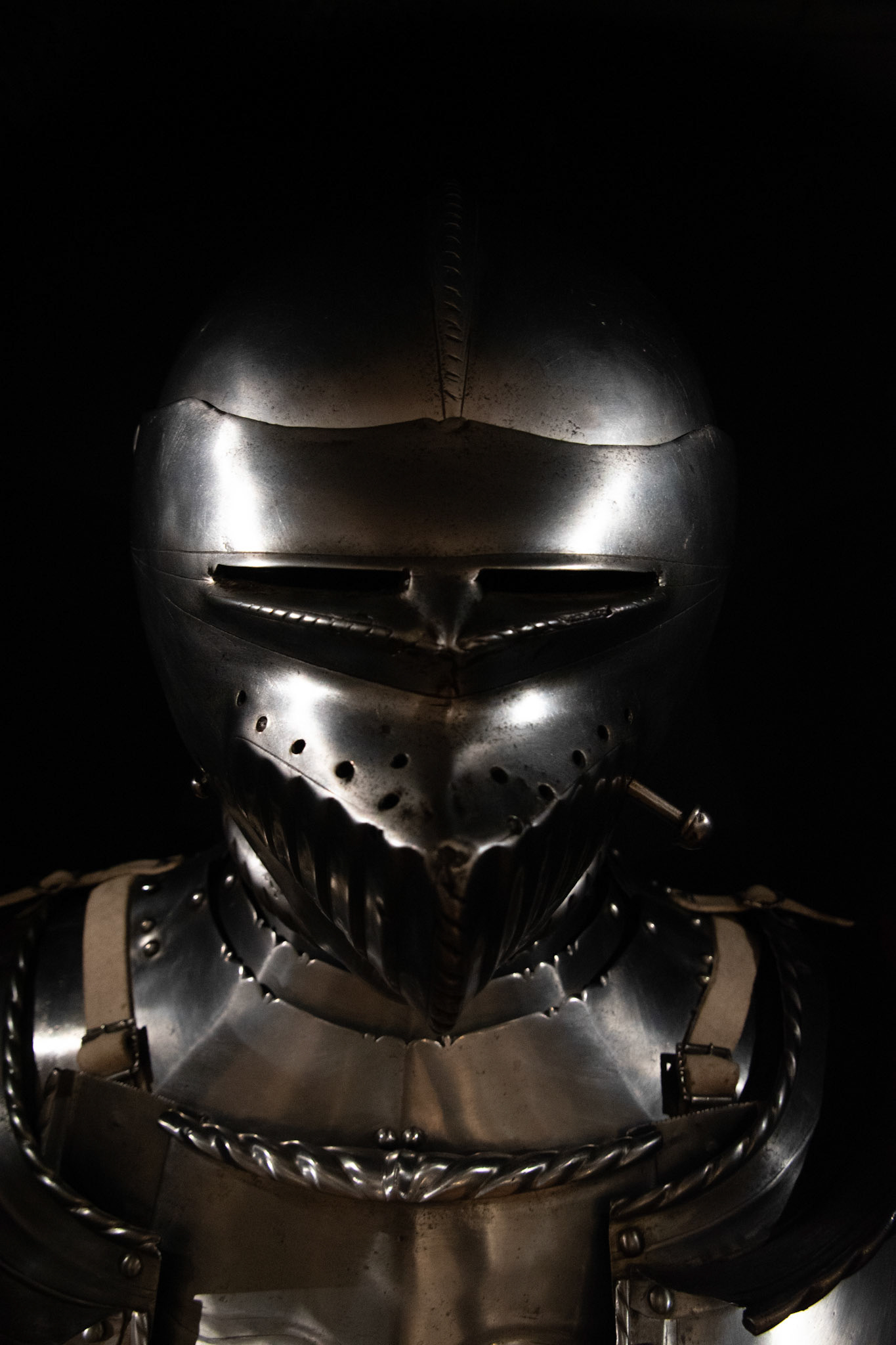
Germanic, Nuremburg, about 1535-40
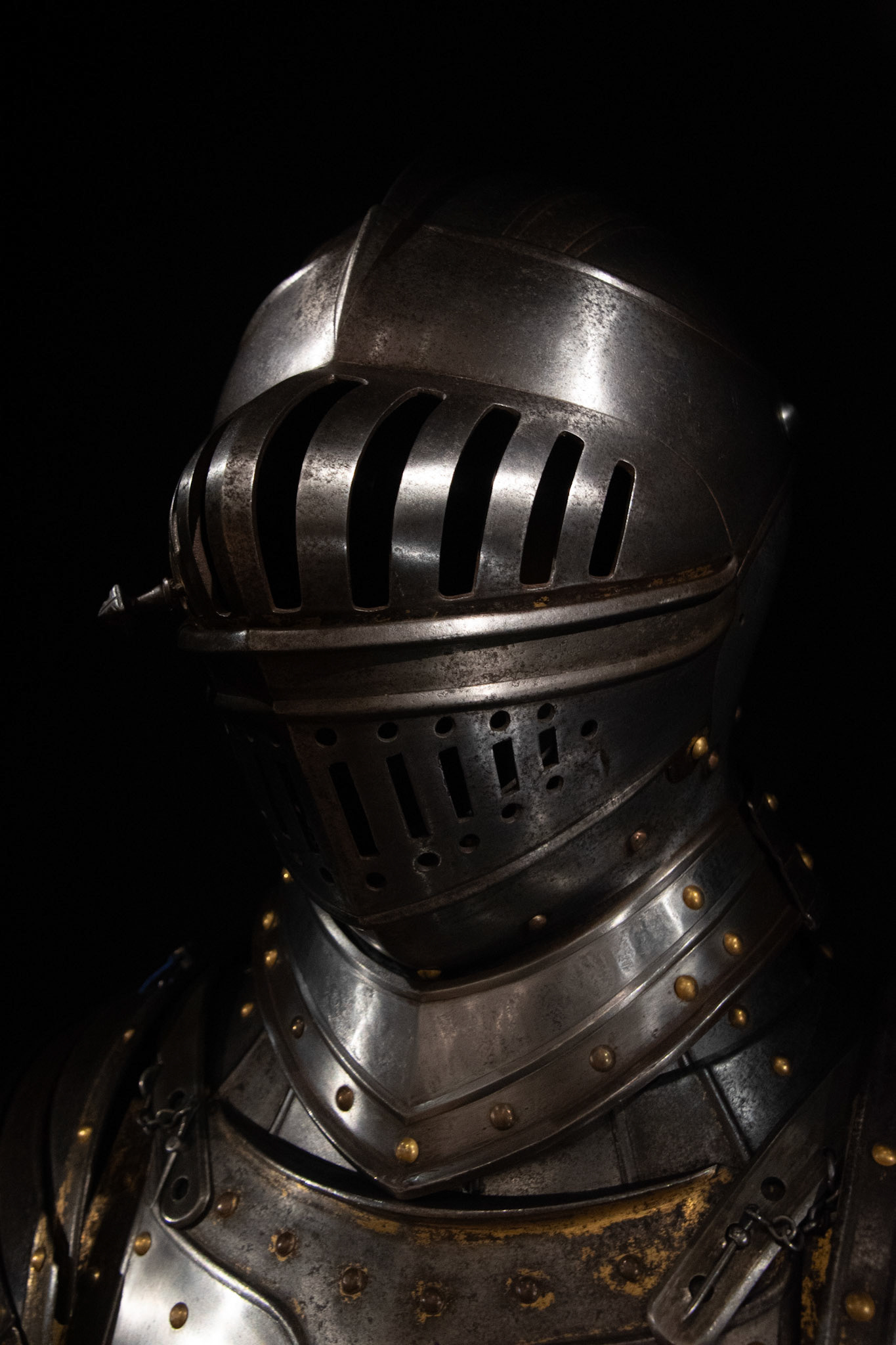
English, Greenwich, about 1555
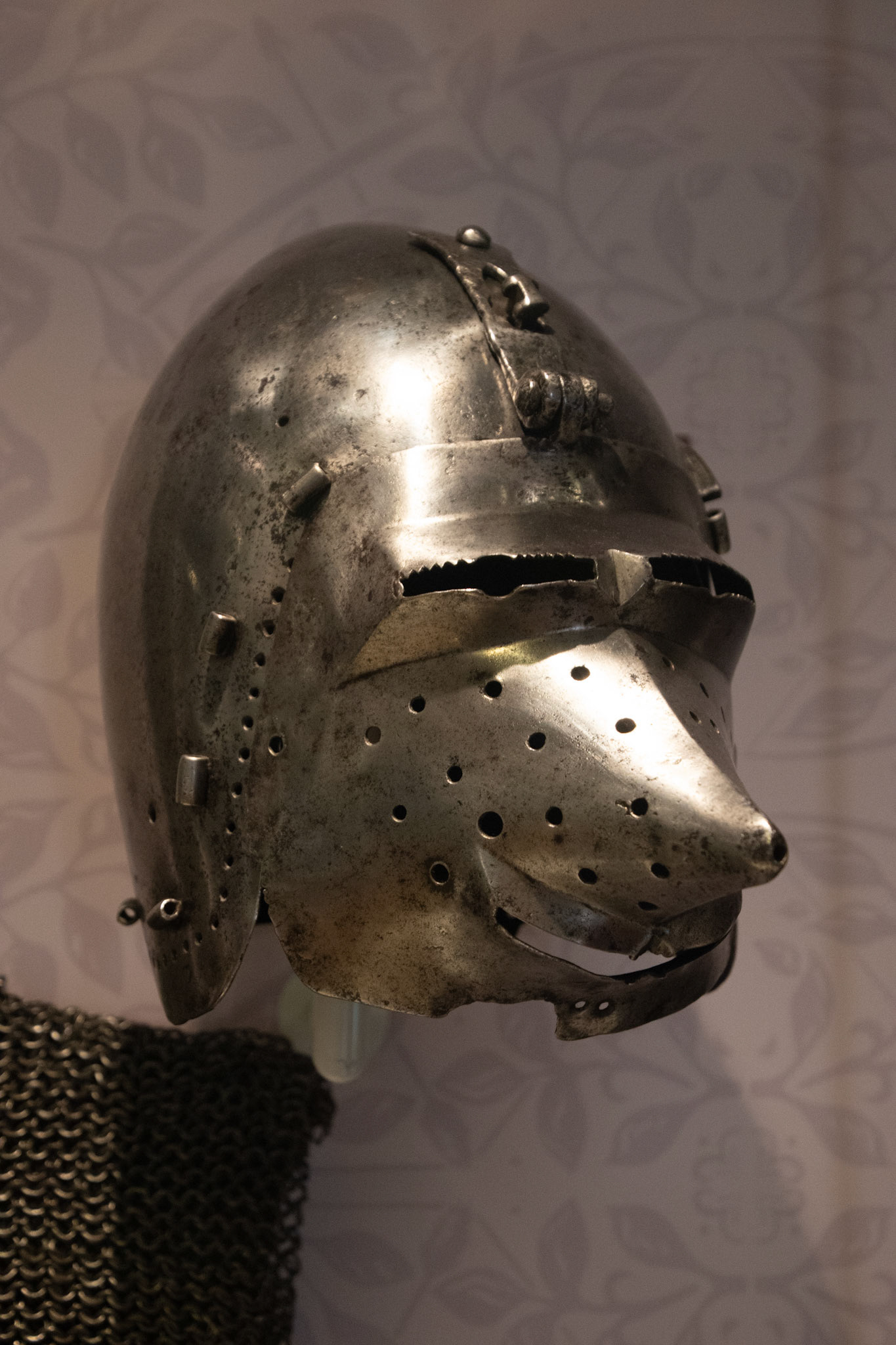
Germanic or North Italian, about 1370-80
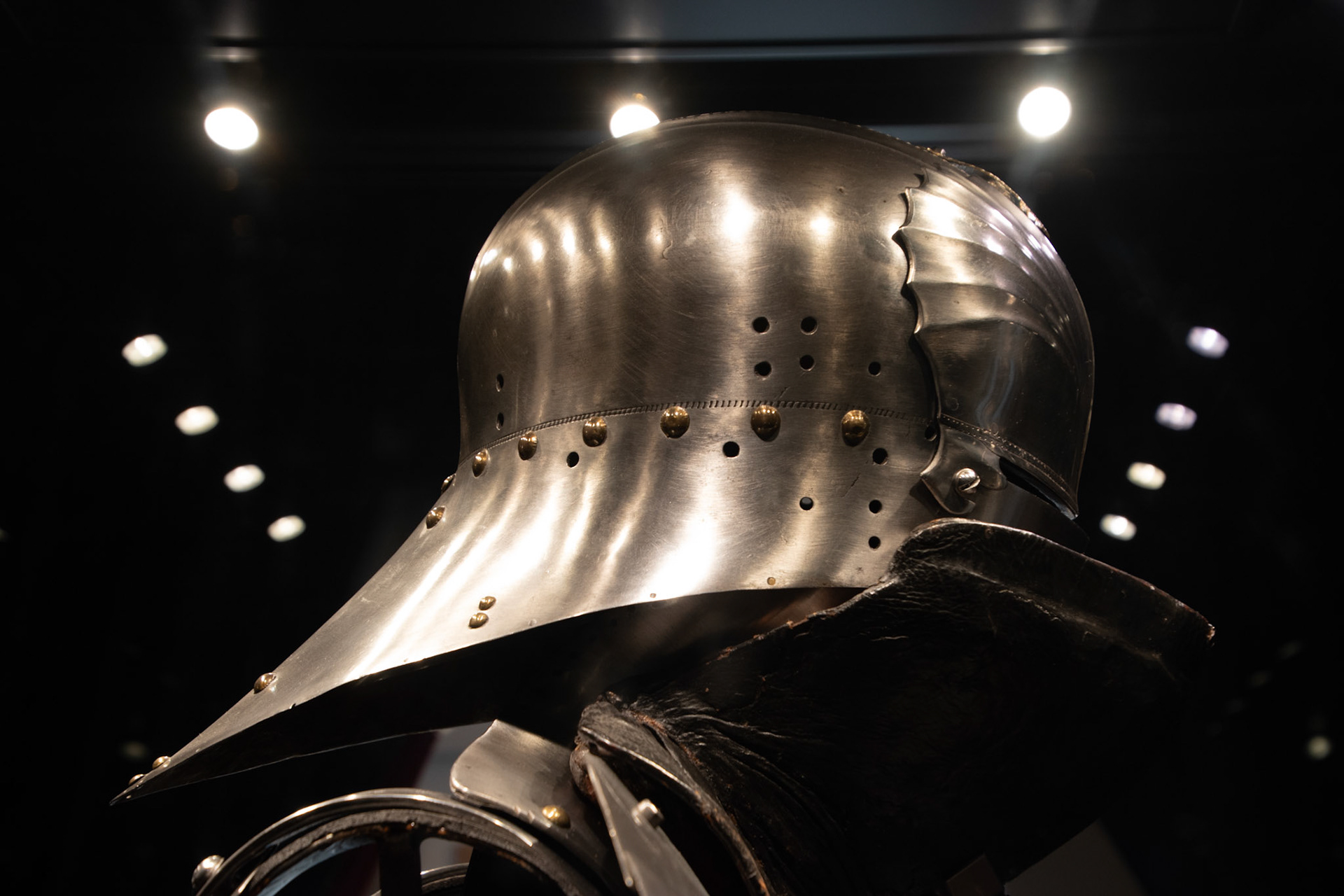
Germanic, about 1500
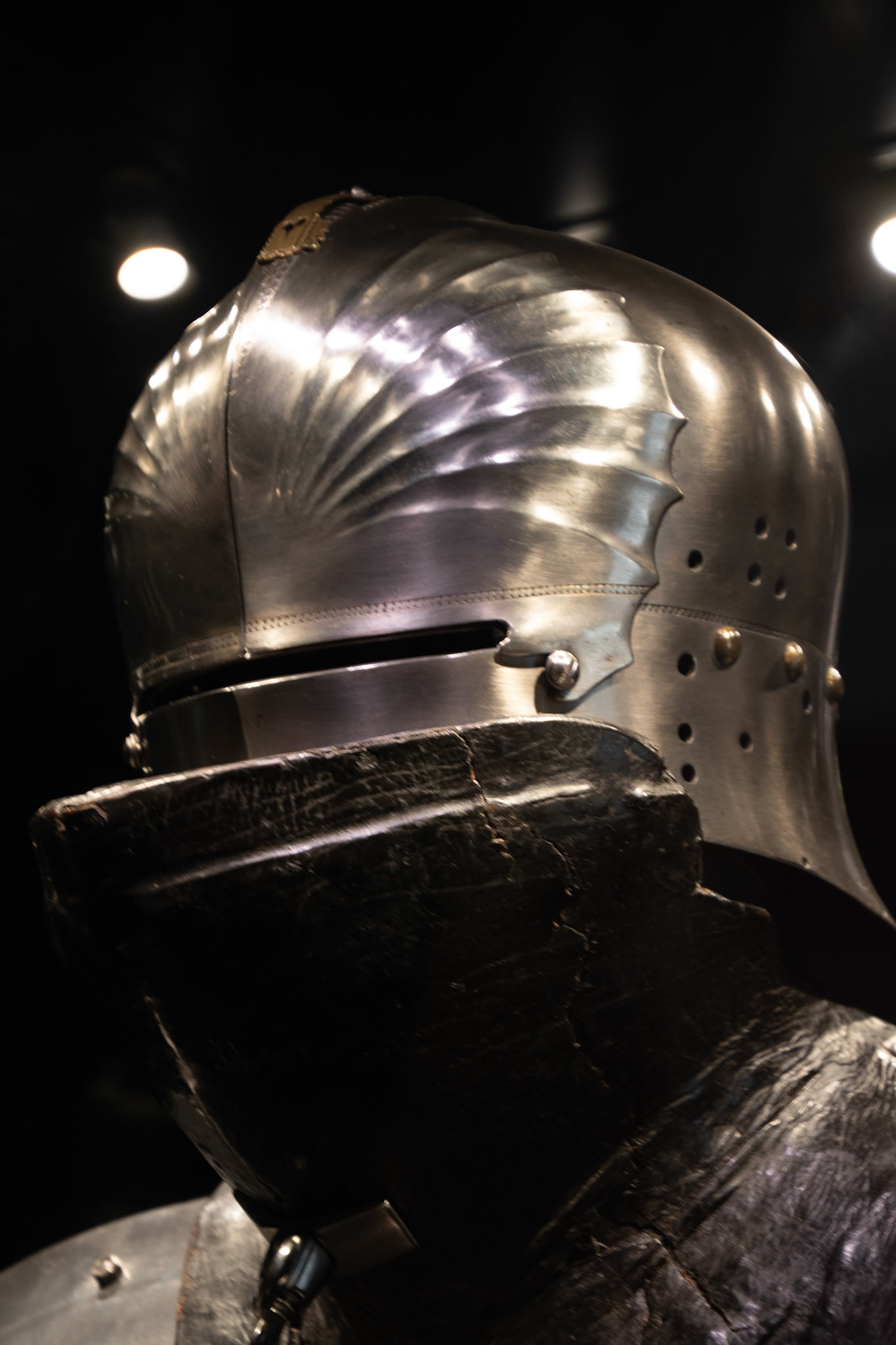
Germanic, about 1500
Pictures taken at Royal Armoires Leeds
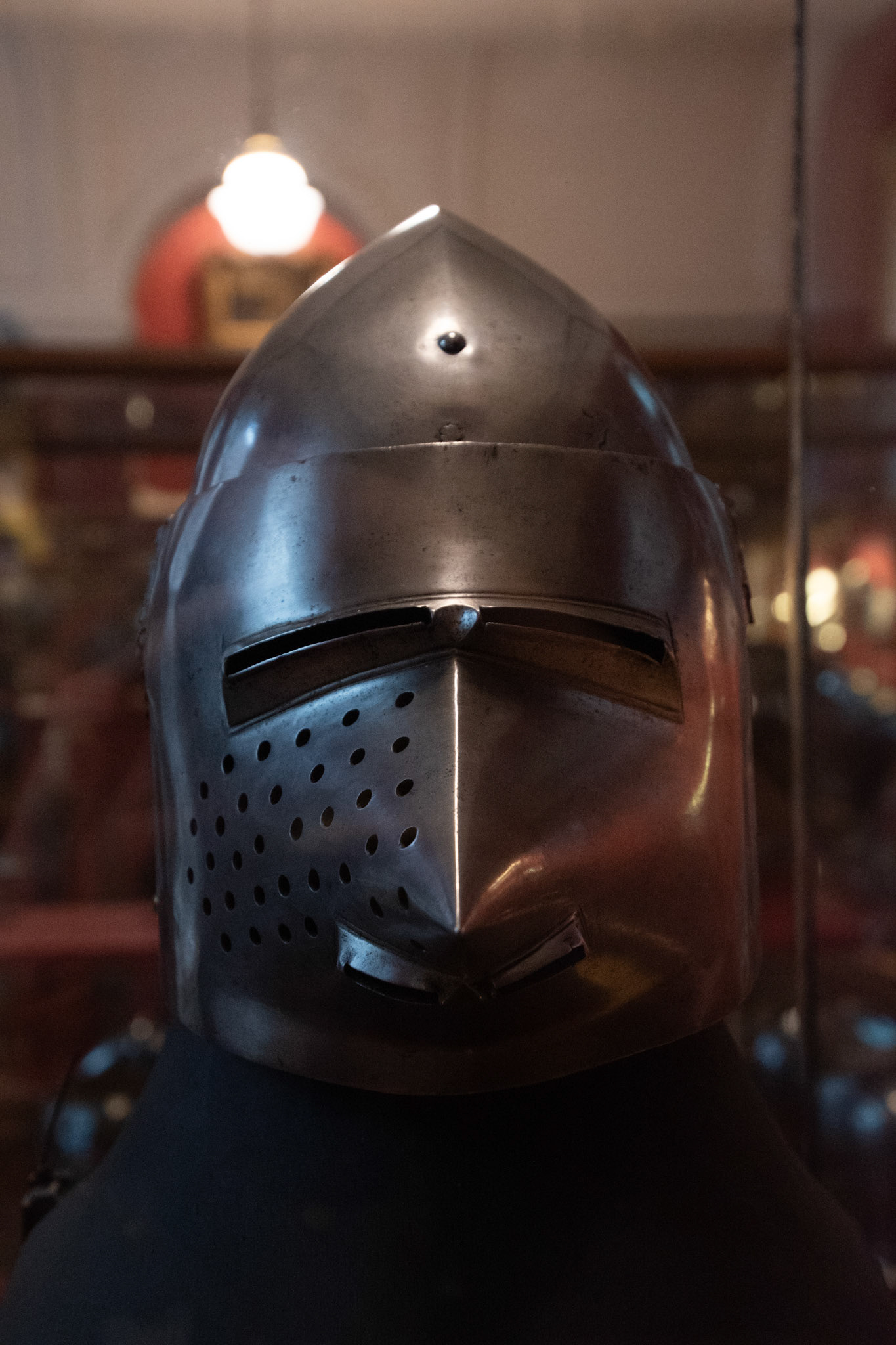
Italian, Milan, 1390-1410, https://wallacelive.wallacecollection.org/eMP/eMuseumPlus?service=direct/1/ResultListView/result.t1.collection_list.$TspTitleLink.link&sp=10&sp=Scollection&sp=SfieldValue&sp=0&sp=22&sp=2&sp=SdetailList&sp=0&sp=Sdetail&sp=2&sp=F&sp=T&sp=0
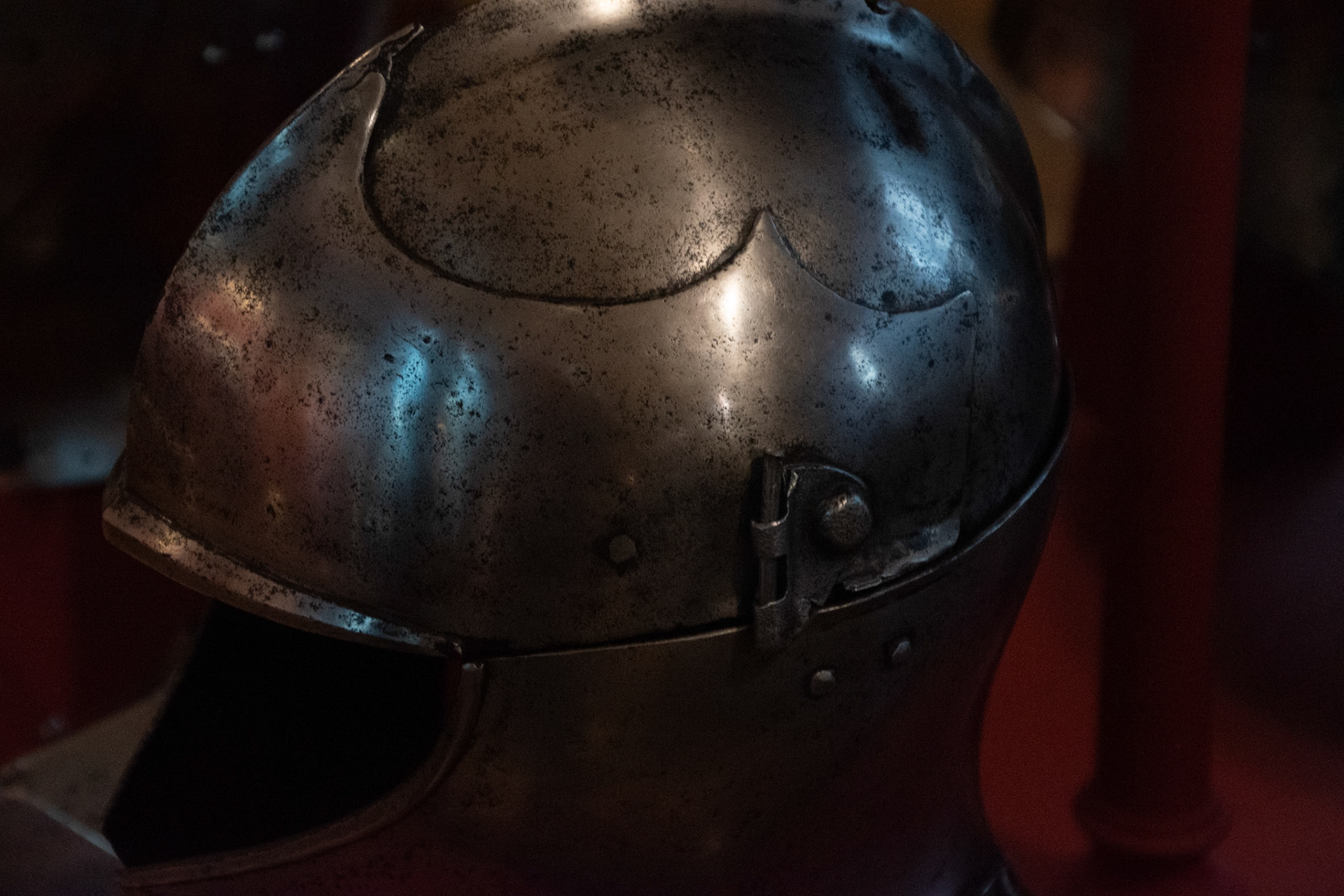
North Italian, 1470-1510, https://wallacelive.wallacecollection.org/eMP/eMuseumPlus?service=direct/1/ResultListView/result.t1.collection_list.$TspTitleLink.link&sp=10&sp=Scollection&sp=SfieldValue&sp=0&sp=23&sp=2&sp=SdetailList&sp=0&sp=Sdetail&sp=2&sp=F&sp=T&sp=1
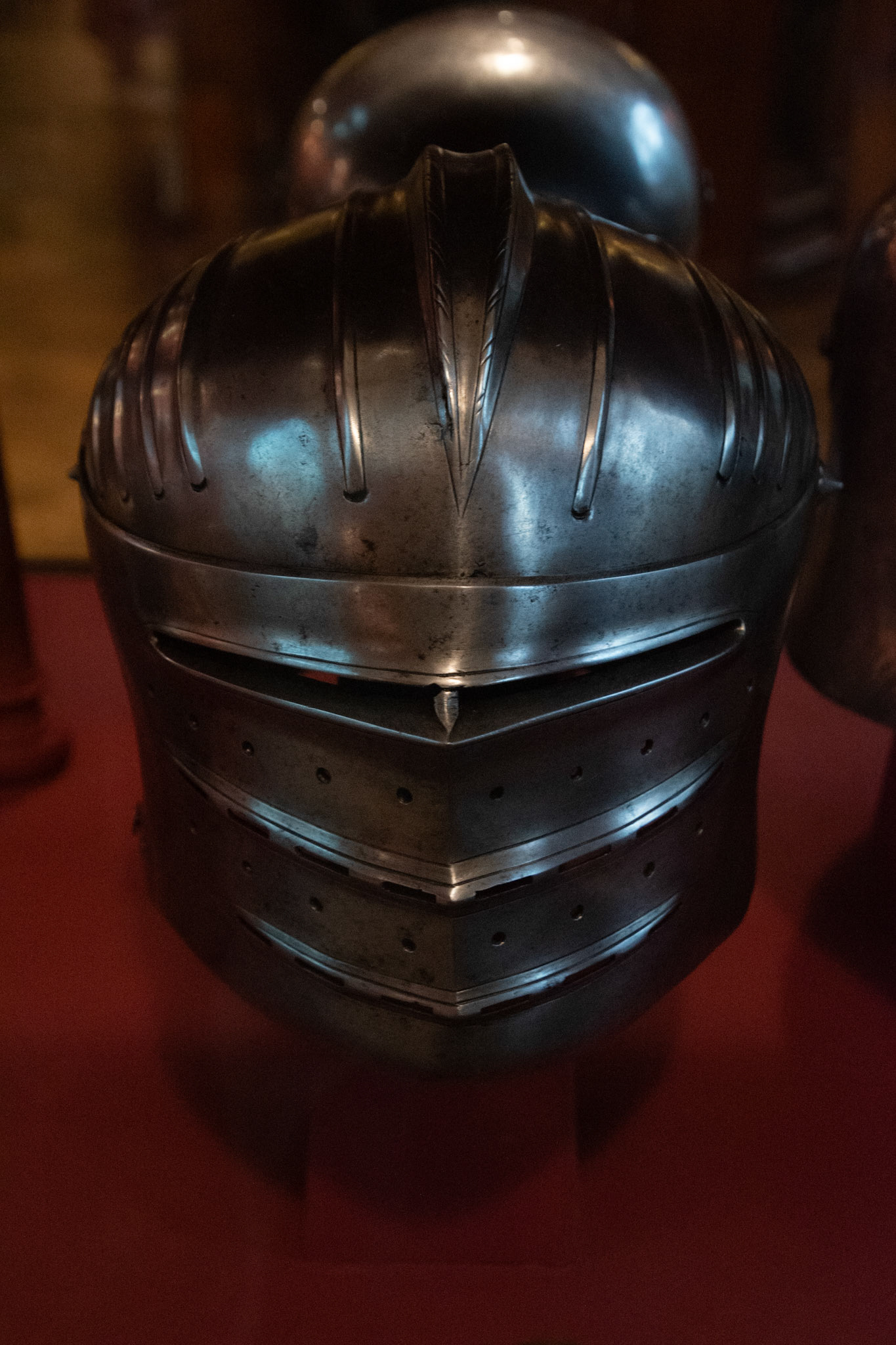
Germanic, 1515, https://wallacelive.wallacecollection.org/eMP/eMuseumPlus?service=direct/1/ResultListView/result.t1.collection_list.$TspTitleLink.link&sp=10&sp=Scollection&sp=SfieldValue&sp=0&sp=24&sp=2&sp=SdetailList&sp=0&sp=Sdetail&sp=2&sp=F&sp=T&sp=0

Germanic, 1560, https://wallacelive.wallacecollection.org/eMP/eMuseumPlus?service=direct/1/ResultListView/result.t1.collection_list.$TspTitleImageLink.link&sp=10&sp=Scollection&sp=SfieldValue&sp=0&sp=25&sp=2&sp=SdetailList&sp=0&sp=Sdetail&sp=2&sp=F&sp=T&sp=0

Germanic, 1525, https://wallacelive.wallacecollection.org/eMP/eMuseumPlus?service=direct/1/ResultListView/result.t1.collection_list.$TspTitleLink.link&sp=10&sp=Scollection&sp=SfieldValue&sp=0&sp=28&sp=2&sp=SdetailList&sp=0&sp=Sdetail&sp=2&sp=F&sp=T&sp=0
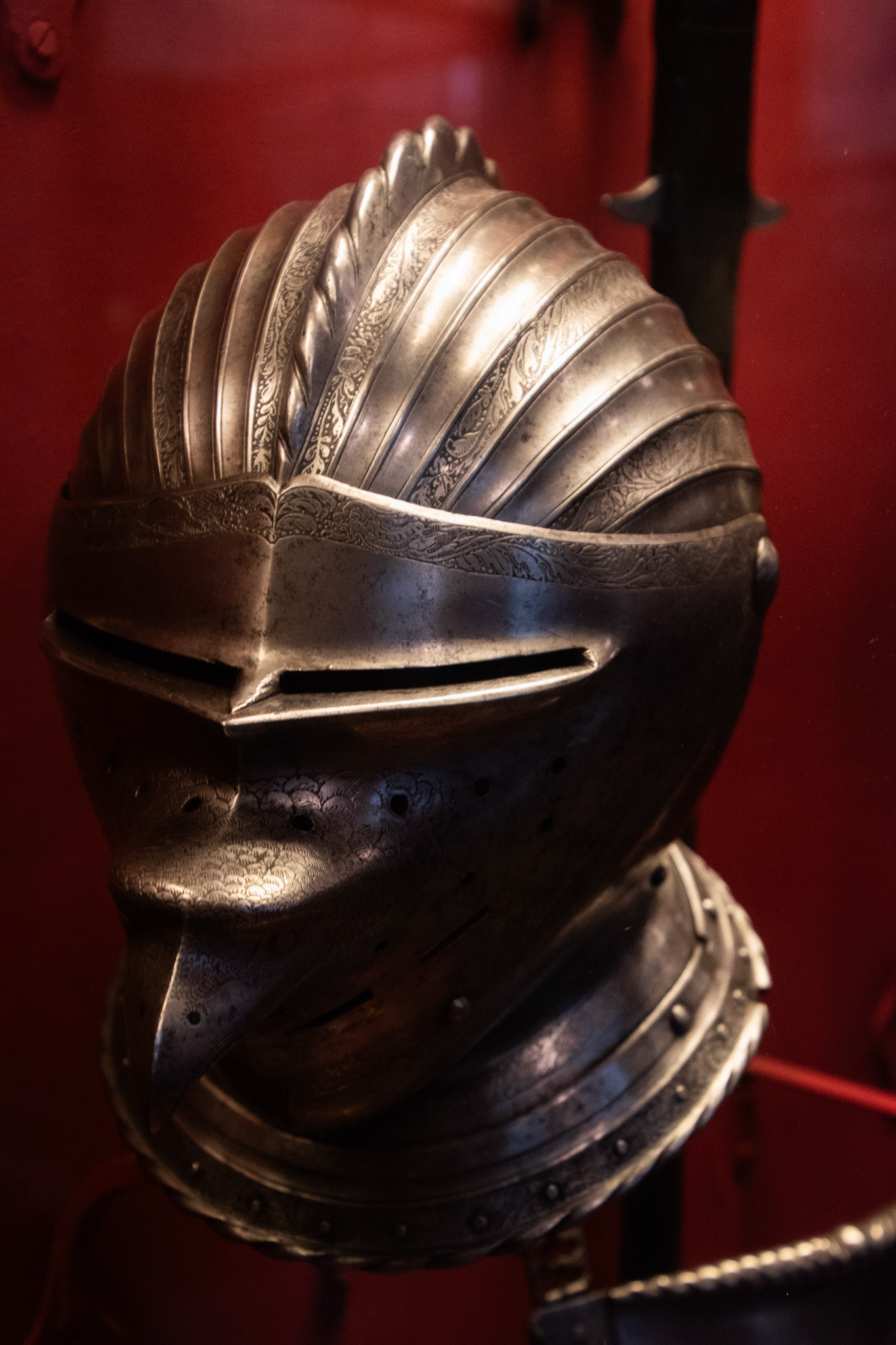
Germanic, Nuremberg, 1530, https://wallacelive.wallacecollection.org/eMP/eMuseumPlus?service=direct/1/ResultListView/result.t1.collection_list.$TspTitleImageLink.link&sp=10&sp=Scollection&sp=SfieldValue&sp=0&sp=30&sp=2&sp=SdetailList&sp=0&sp=Sdetail&sp=2&sp=F&sp=T&sp=0
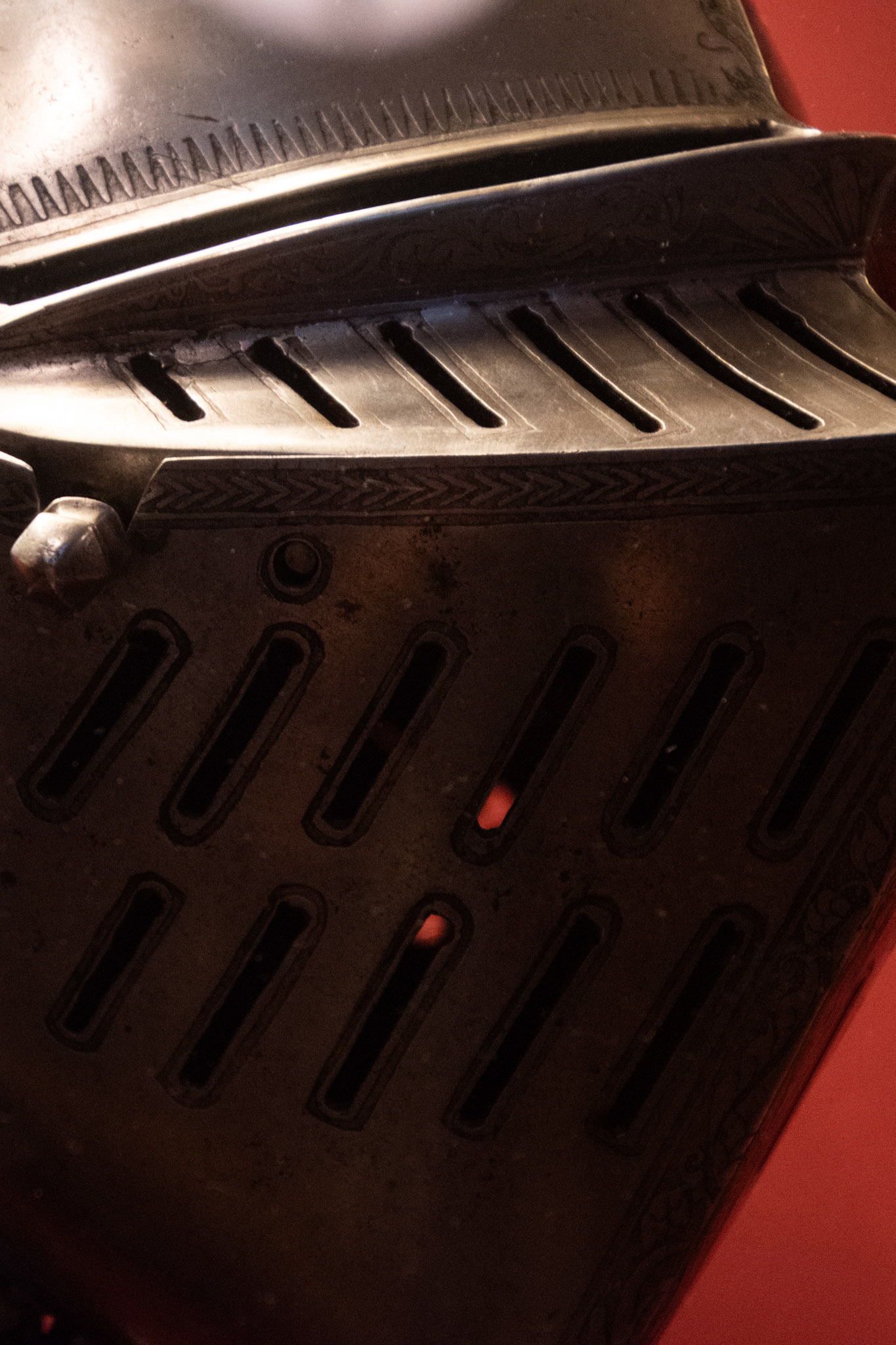
Germanic, Landshut, probably for Pankraz von Freyburg, made by Wolfgang Grosschedel, 1535-40, https://wallacelive.wallacecollection.org/eMP/eMuseumPlus?service=direct/1/ResultListView/result.t1.collection_list.$TspTitleLink.link&sp=10&sp=Scollection&sp=SfieldValue&sp=0&sp=32&sp=2&sp=SdetailList&sp=0&sp=Sdetail&sp=2&sp=F&sp=T&sp=0

Germanic, Augsburg, for Kolman Helmschmid, made by Daniel Hopfer, 1525-30, https://wallacelive.wallacecollection.org/eMP/eMuseumPlus?service=direct/1/ResultListView/result.t1.collection_list.$TspTitleLink.link&sp=10&sp=Scollection&sp=SfieldValue&sp=0&sp=34&sp=2&sp=SdetailList&sp=0&sp=Sdetail&sp=2&sp=F&sp=T&sp=0
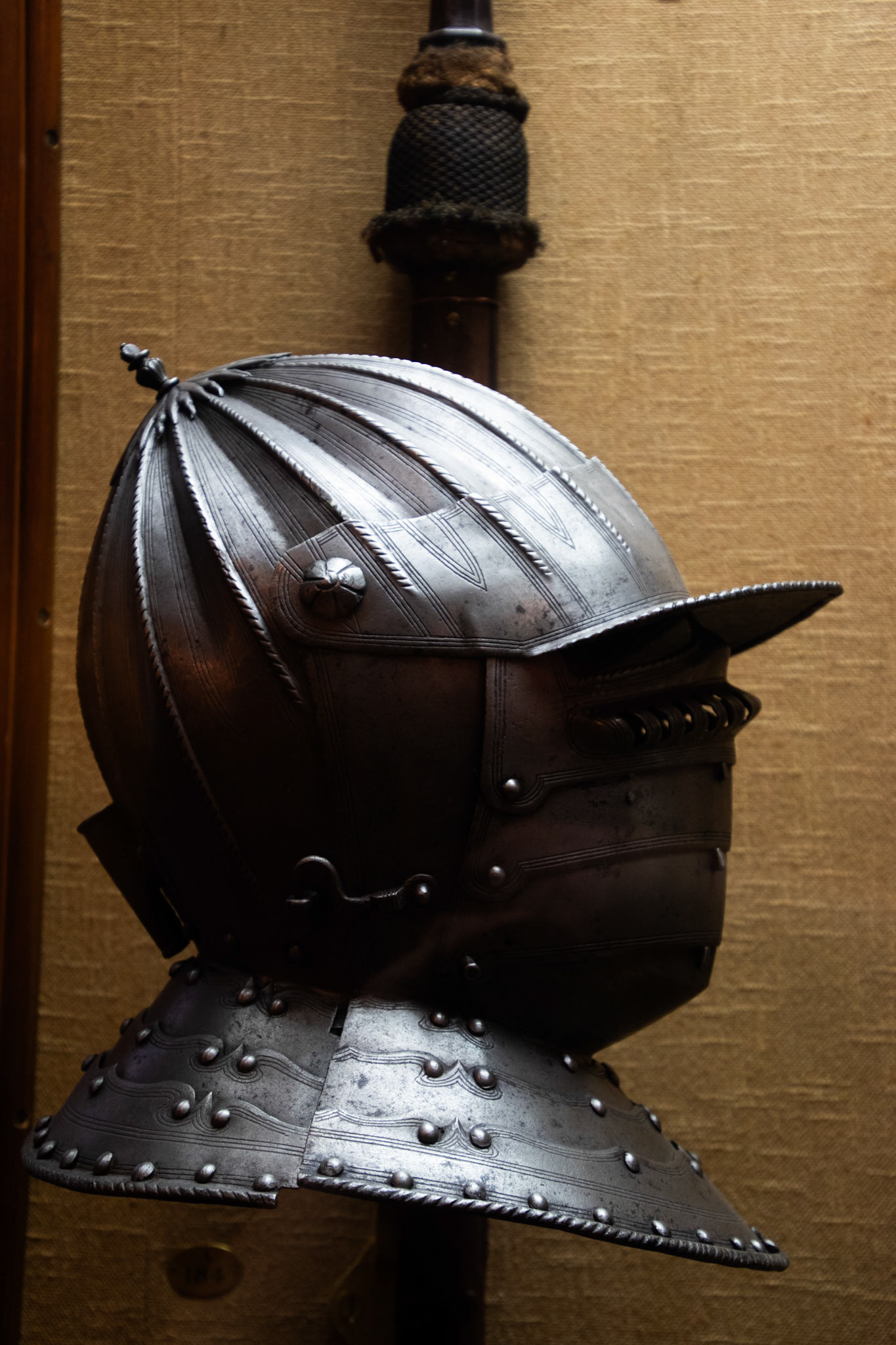
French or Flemish, 1630, https://wallacelive.wallacecollection.org/eMP/eMuseumPlus?service=direct/1/ResultListView/result.t1.collection_list.$TspTitleImageLink.link&sp=10&sp=Scollection&sp=SfieldValue&sp=0&sp=36&sp=2&sp=SdetailList&sp=0&sp=Sdetail&sp=2&sp=F&sp=T&sp=0
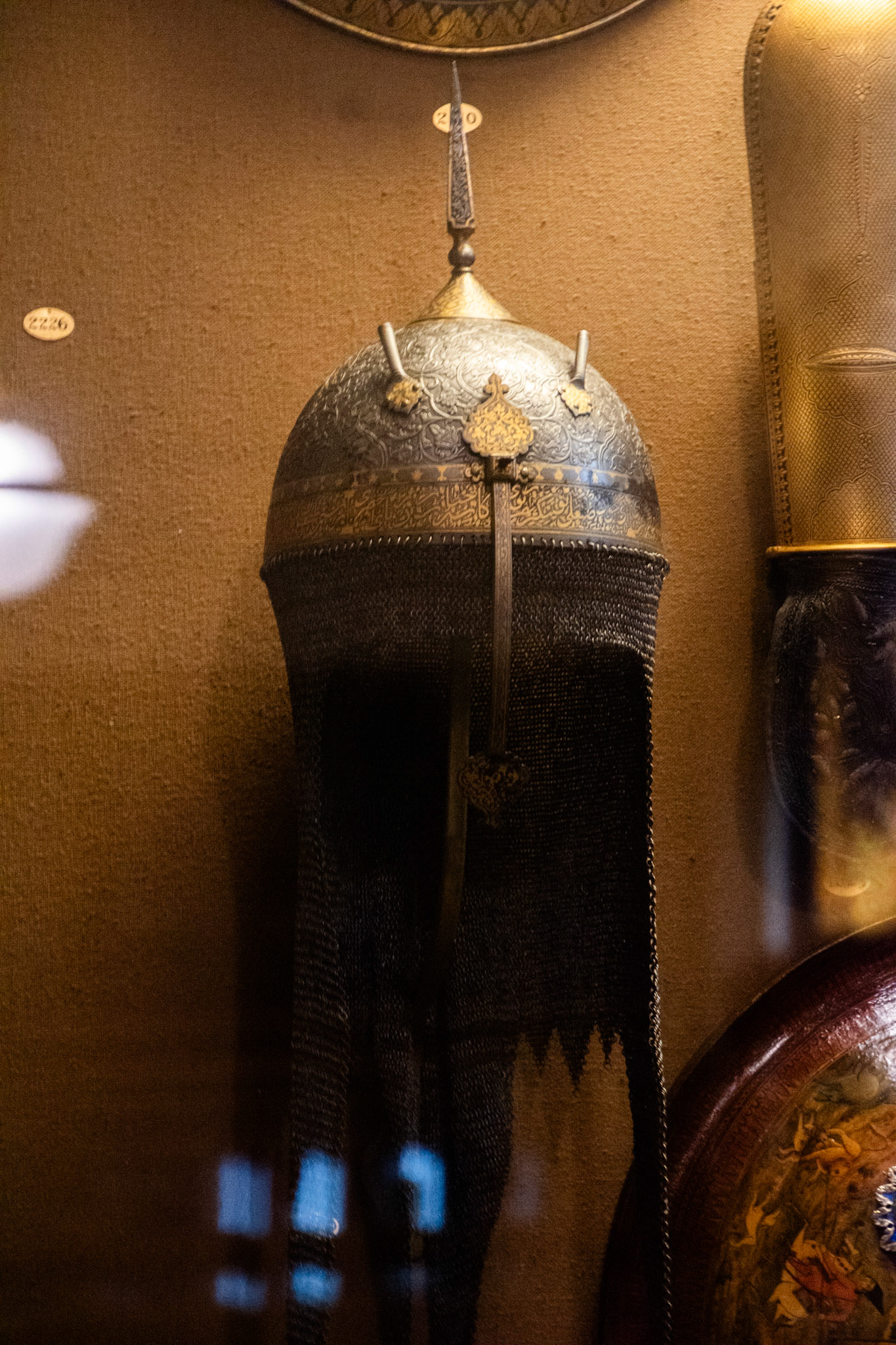
Persian, late 19th century https://wallacelive.wallacecollection.org/eMP/eMuseumPlus?service=direct/1/ResultListView/result.t1.collection_list.$TspTitleLink.link&sp=10&sp=Scollection&sp=SfieldValue&sp=0&sp=0&sp=2&sp=SdetailList&sp=0&sp=Sdetail&sp=0&sp=F&sp=T&sp=14
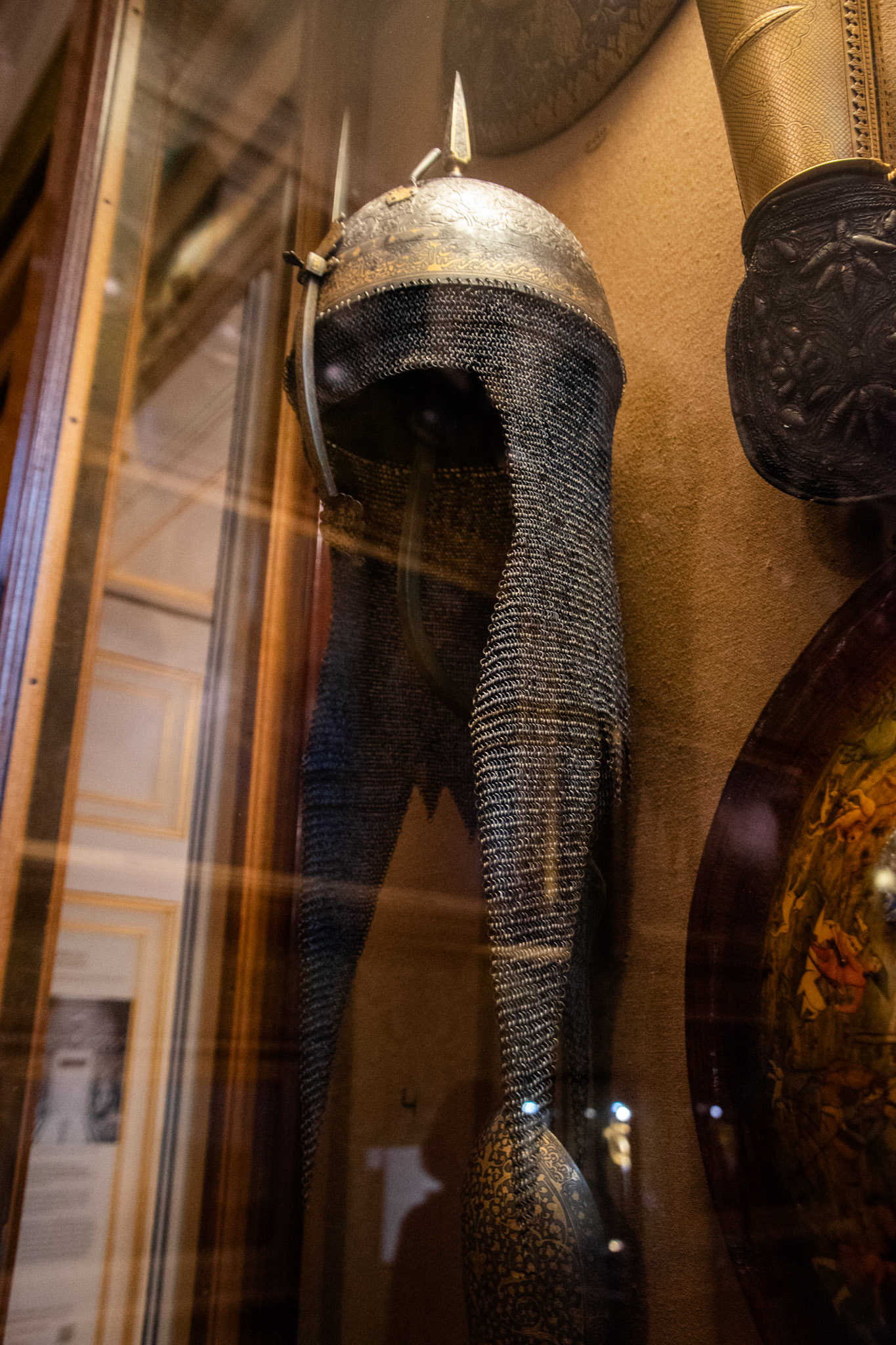
Persian, late 19th century https://wallacelive.wallacecollection.org/eMP/eMuseumPlus?service=direct/1/ResultListView/result.t1.collection_list.$TspTitleLink.link&sp=10&sp=Scollection&sp=SfieldValue&sp=0&sp=0&sp=2&sp=SdetailList&sp=0&sp=Sdetail&sp=0&sp=F&sp=T&sp=14

Southeastern Europe, possibly 1767 https://wallacelive.wallacecollection.org/eMP/eMuseumPlus?service=direct/1/ResultListView/result.t1.collection_list.$TspTitleLink.link&sp=10&sp=Scollection&sp=SfieldValue&sp=0&sp=12&sp=2&sp=SdetailList&sp=378&sp=Sdetail&sp=0&sp=F&sp=T&sp=390
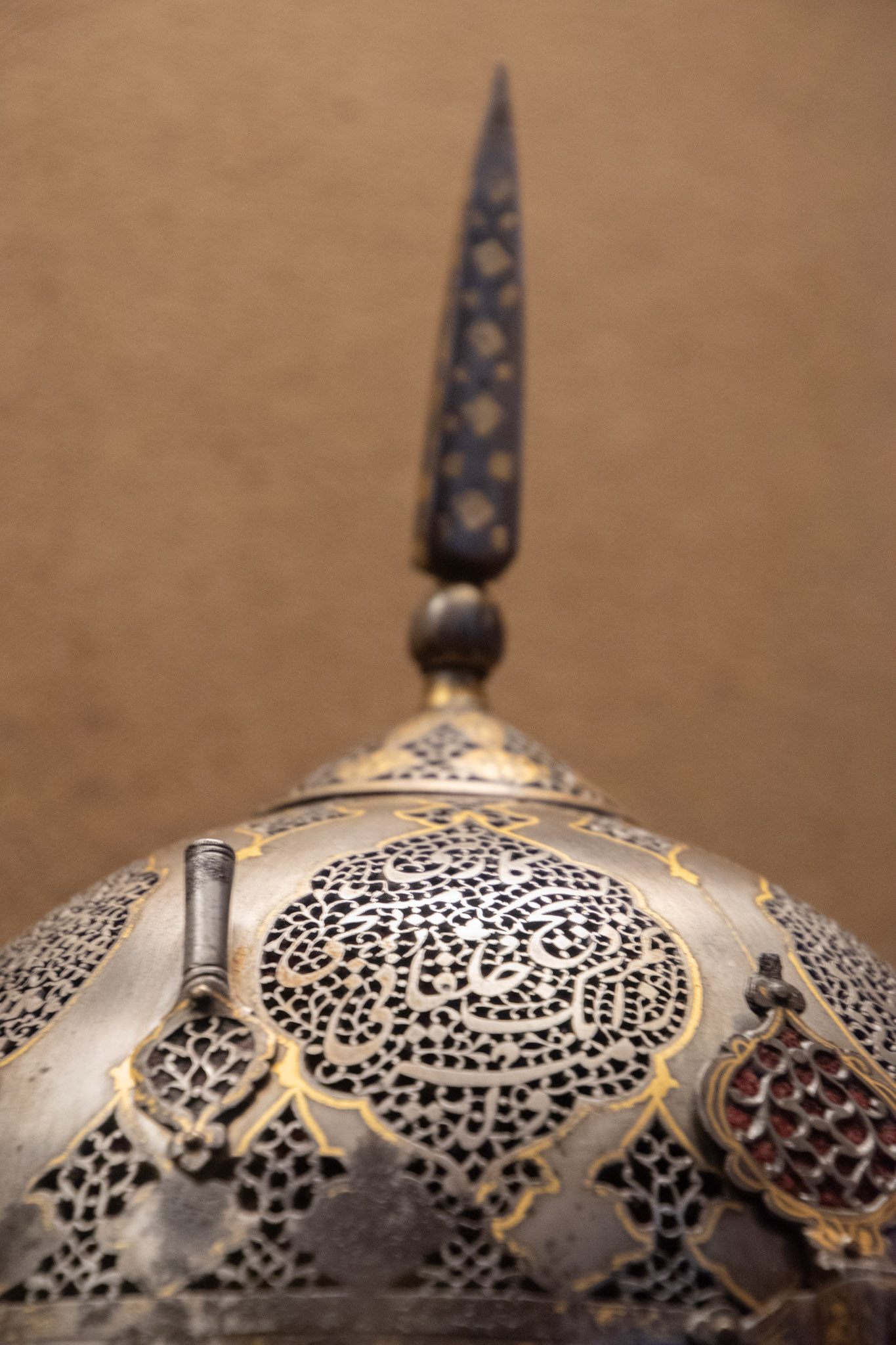
New Julfa, Isfahan, Iran, 1844, https://wallacelive.wallacecollection.org/eMP/eMuseumPlus?service=direct/1/ResultListView/result.t1.collection_list.$TspTitleLink.link&sp=10&sp=Scollection&sp=SfieldValue&sp=0&sp=21&sp=2&sp=SdetailList&sp=315&sp=Sdetail&sp=2&sp=F&sp=T&sp=323
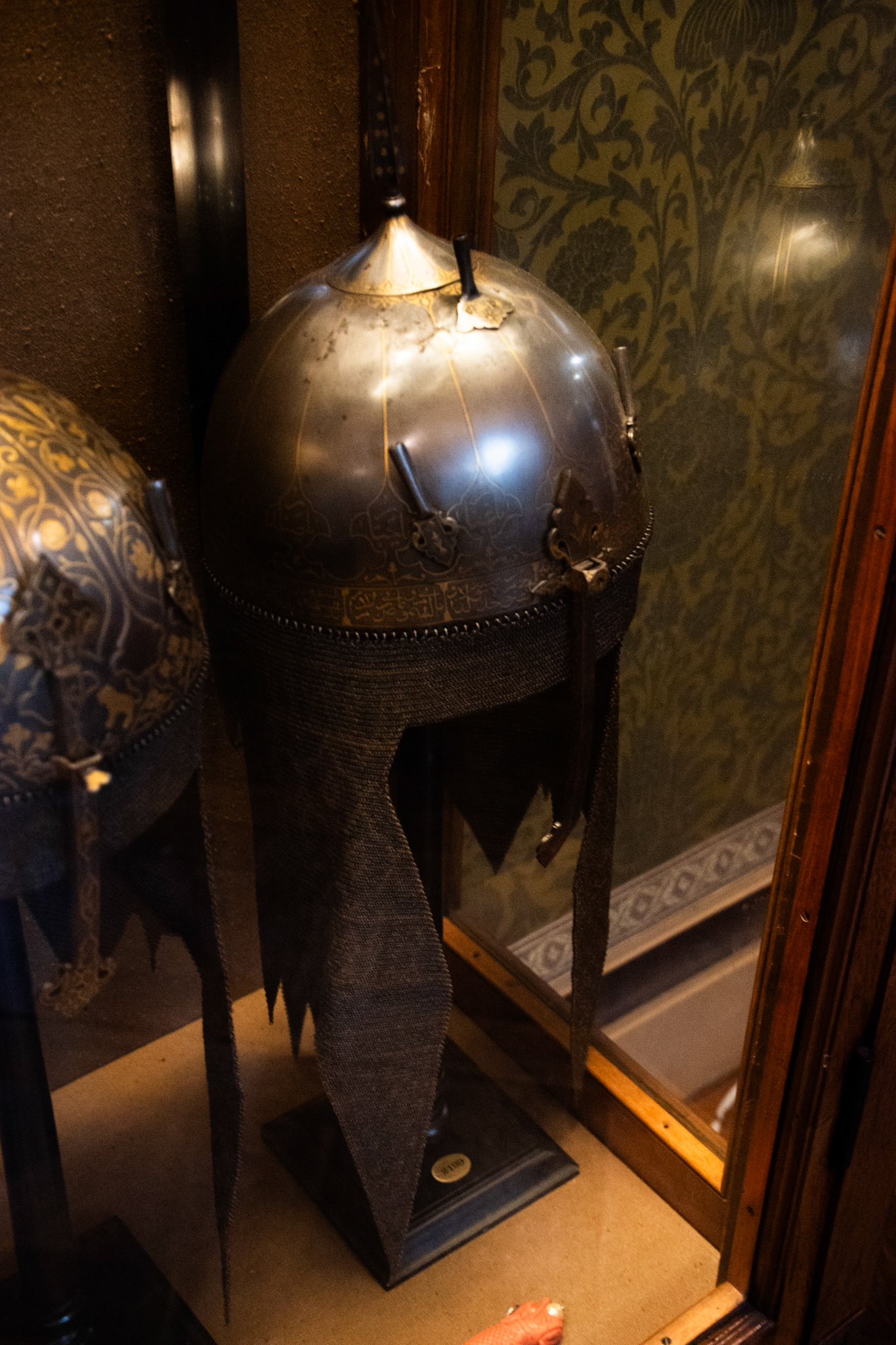
Iranian, 19th century, https://wallacelive.wallacecollection.org/eMP/eMuseumPlus?service=direct/1/ResultListView/result.t1.collection_list.$TspTitleLink$0.link&sp=10&sp=Scollection&sp=SfieldValue&sp=0&sp=20&sp=2&sp=SdetailList&sp=0&sp=Sdetail&sp=2&sp=F&sp=T&sp=0
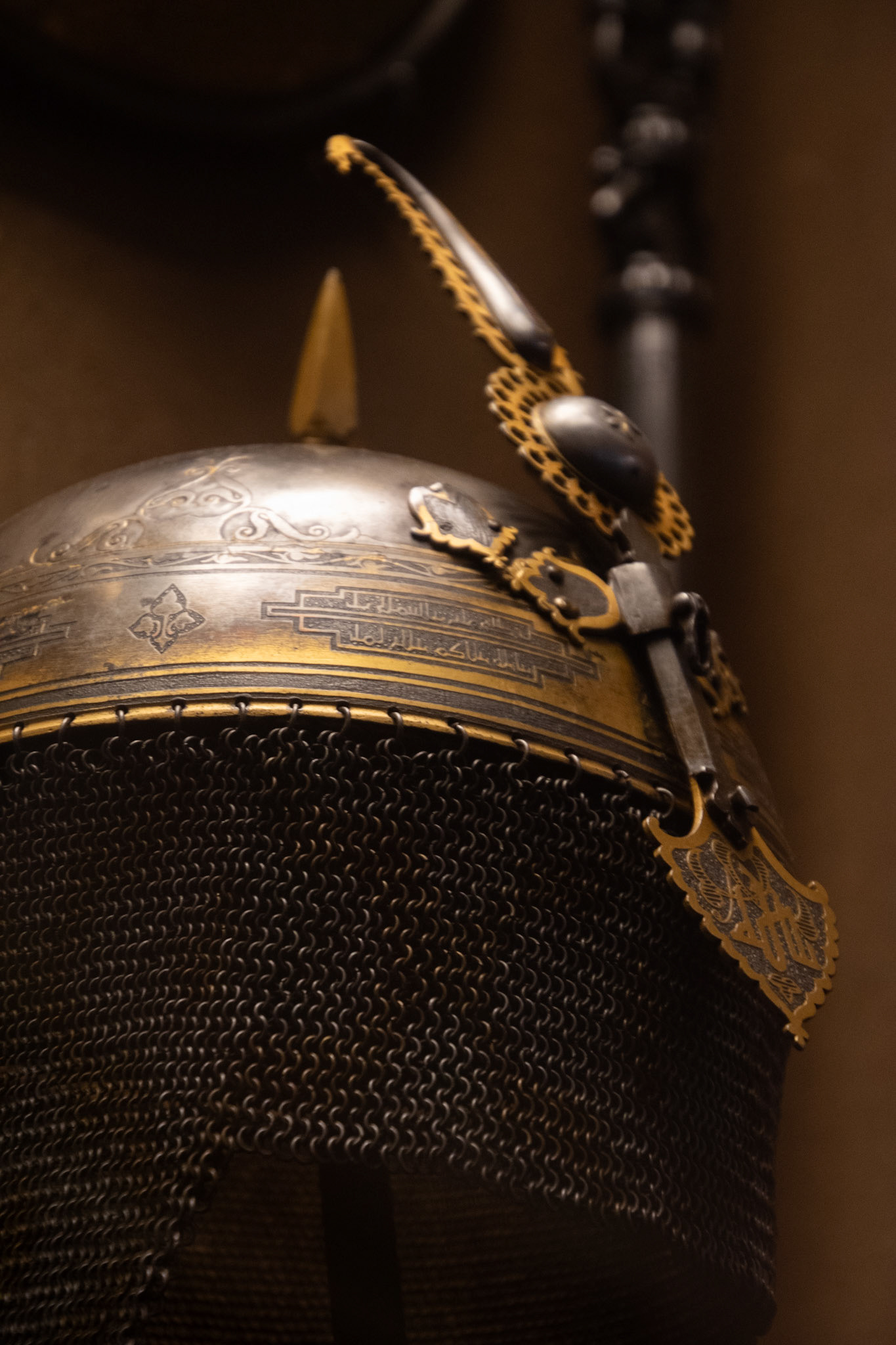
Indian, 18th century, https://wallacelive.wallacecollection.org/eMP/eMuseumPlus?service=direct/1/ResultListView/result.t1.collection_list.$TspTitleLink$0.link&sp=10&sp=Scollection&sp=SfieldValue&sp=0&sp=16&sp=2&sp=SdetailList&sp=126&sp=Sdetail&sp=0&sp=F&sp=T&sp=138
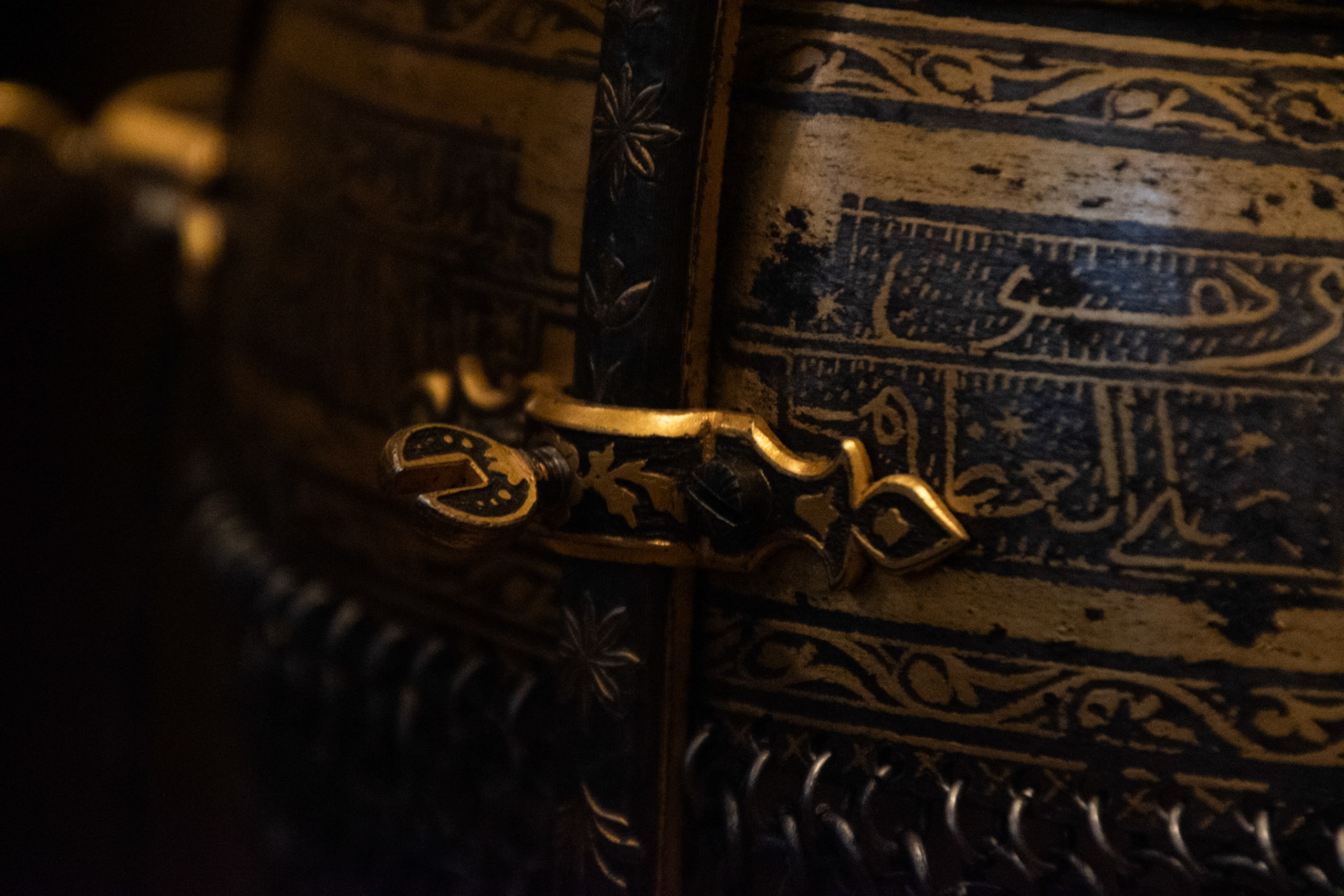
Egyptian or Sudanese, 17th century with 19th century additions, https://wallacelive.wallacecollection.org/eMP/eMuseumPlus?service=direct/1/ResultListView/result.t1.collection_list.$TspTitleLink.link&sp=10&sp=Scollection&sp=SfieldValue&sp=0&sp=17&sp=2&sp=SdetailList&sp=0&sp=Sdetail&sp=2&sp=F&sp=T&sp=0
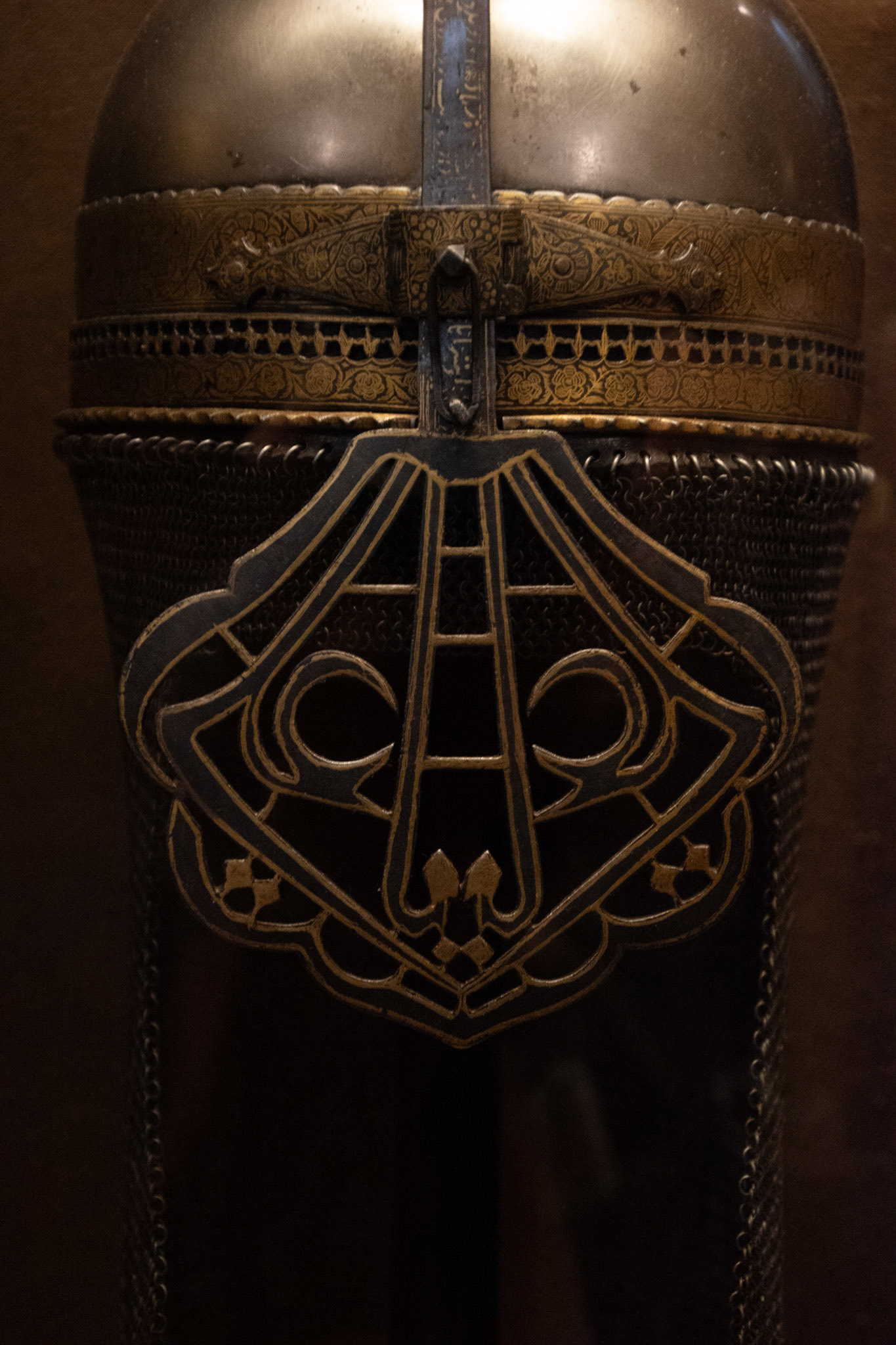
Indian, 18th-19th century, https://wallacelive.wallacecollection.org/eMP/eMuseumPlus?service=direct/1/ResultListView/result.t1.collection_list.$TspTitleLink.link&sp=10&sp=Scollection&sp=SfieldValue&sp=0&sp=12&sp=2&sp=SdetailList&sp=147&sp=Sdetail&sp=0&sp=F&sp=T&sp=151
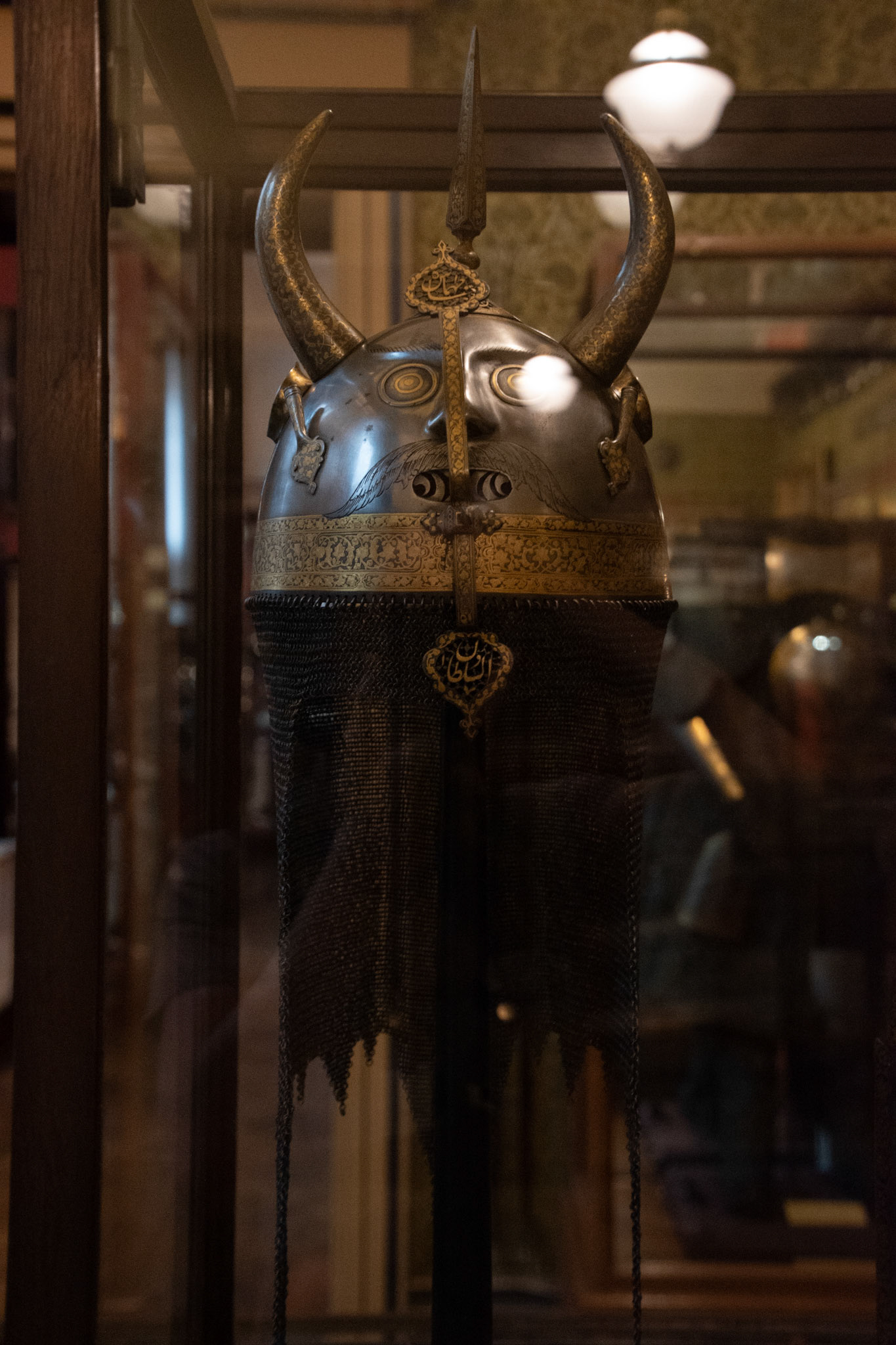
Persian, 19th century, https://wallacelive.wallacecollection.org/eMP/eMuseumPlus?service=direct/1/ResultListView/result.t1.collection_list.$TspTitleLink.link&sp=10&sp=Scollection&sp=SfieldValue&sp=0&sp=12&sp=2&sp=SdetailList&sp=189&sp=Sdetail&sp=0&sp=F&sp=T&sp=189
Photos taken at Wallace Collection
I was drawn to the helmets due to their extensive variation and design differences. I found that the slit cut for eye and breathing holes particular fascinating with a collection of differing patterns. Also, the differing silhouette of the front of the helmets. I think looking at differing pattern cut outs in my sheet metal work could explore my concepts of exposure and varying levels of protection. Additionally, looking at these helmets has encouraged me to keep in mind the silhouette of the piece and how this affects the narrative, either sharp and dangerous or rounded and defensive.
Examples of the Couter

Germanic in the Maximilian, around 1520

Probably English Greenwich, for King Henery VIII, decorated by Pual van Vrelant, 1512-14
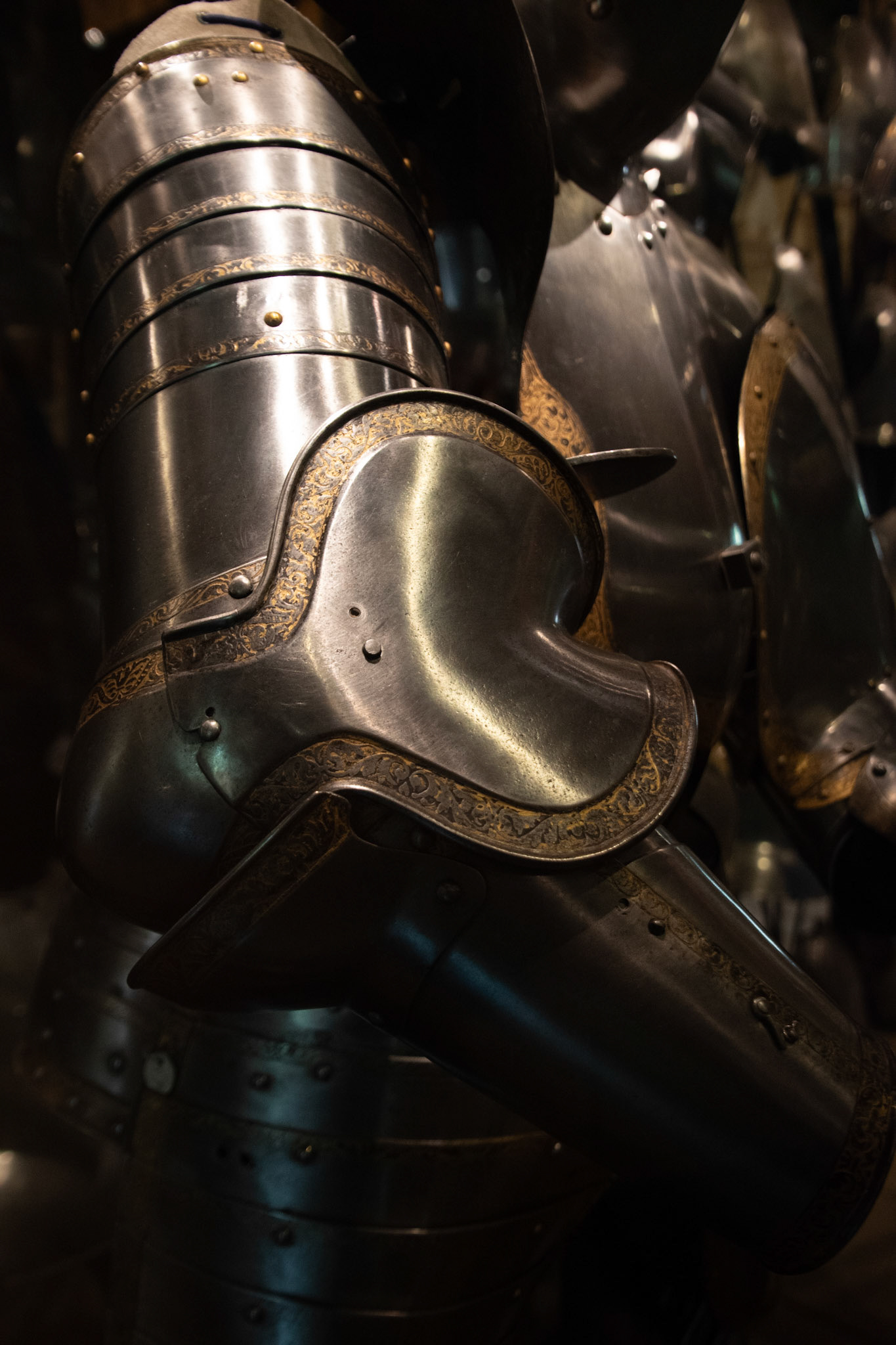
English, for King Henery VIII, 1540
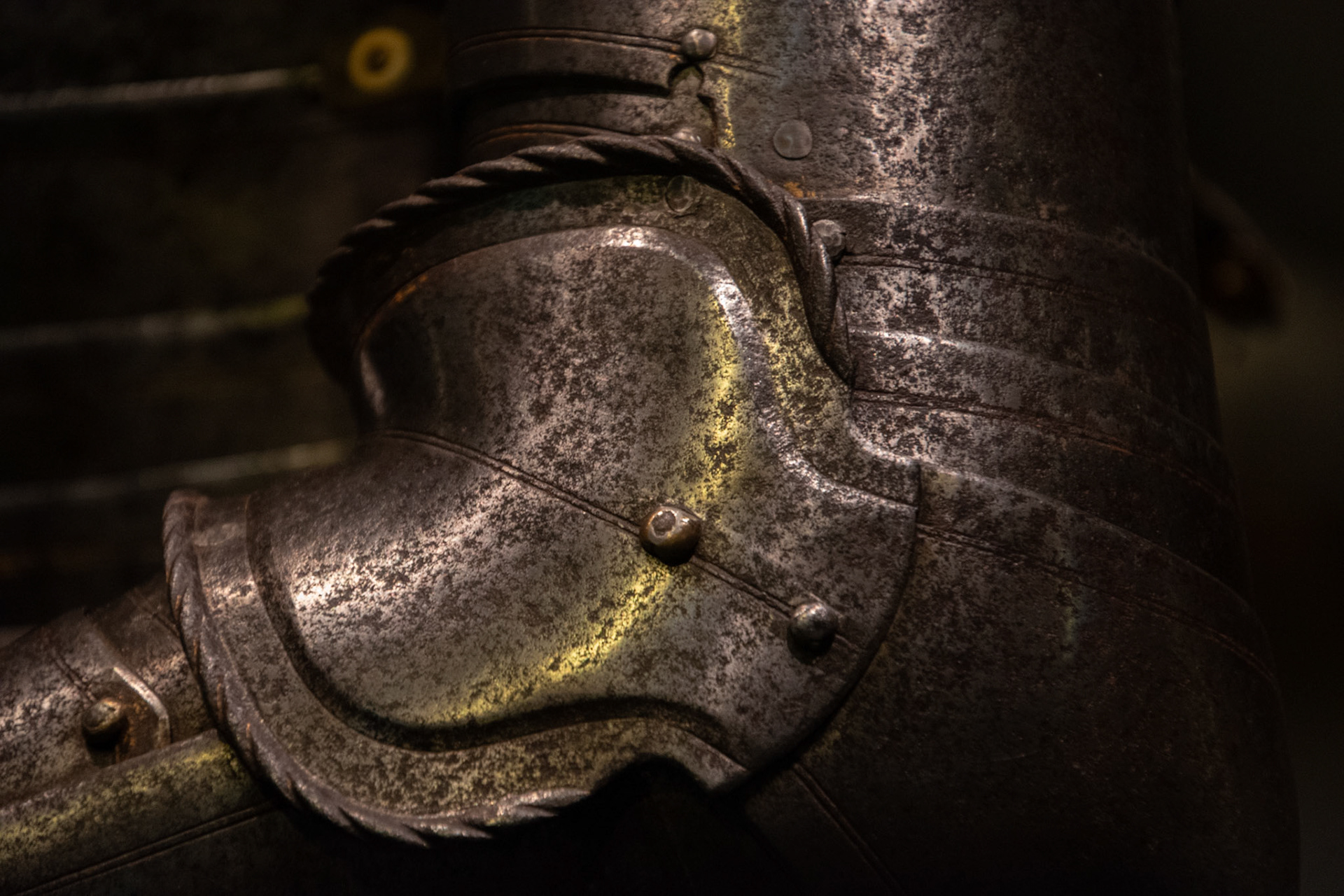

Germanic in the Maximilian, around 1520

English Greenwich, about 1620

Germanic Burnswick, about 1540


Germanic Augsburg, probably by Anton Peffenhauser and decorated by Jorg Sorg, probably 1551
Pictures taken at the Tower of London
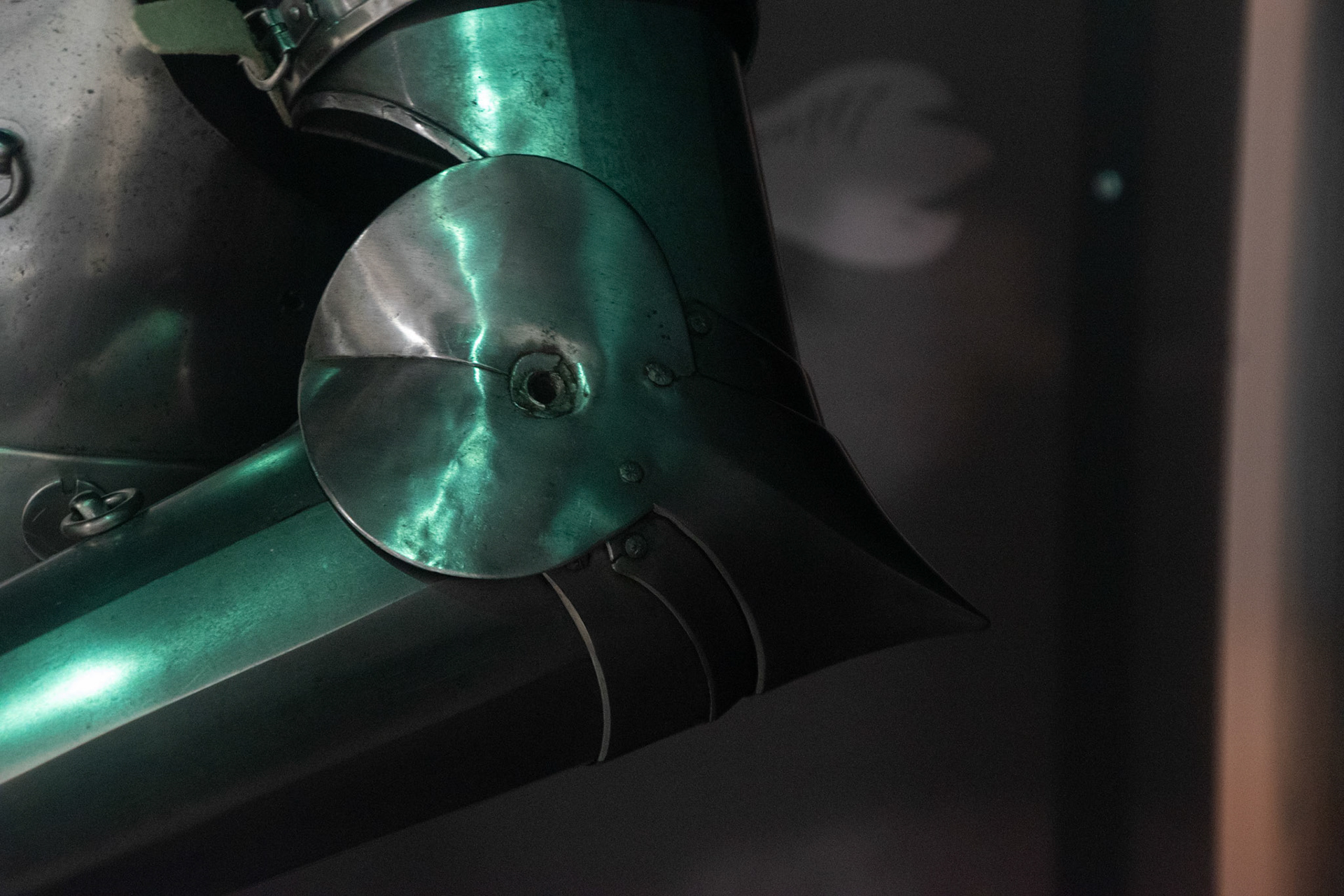
Flemish, about 1500
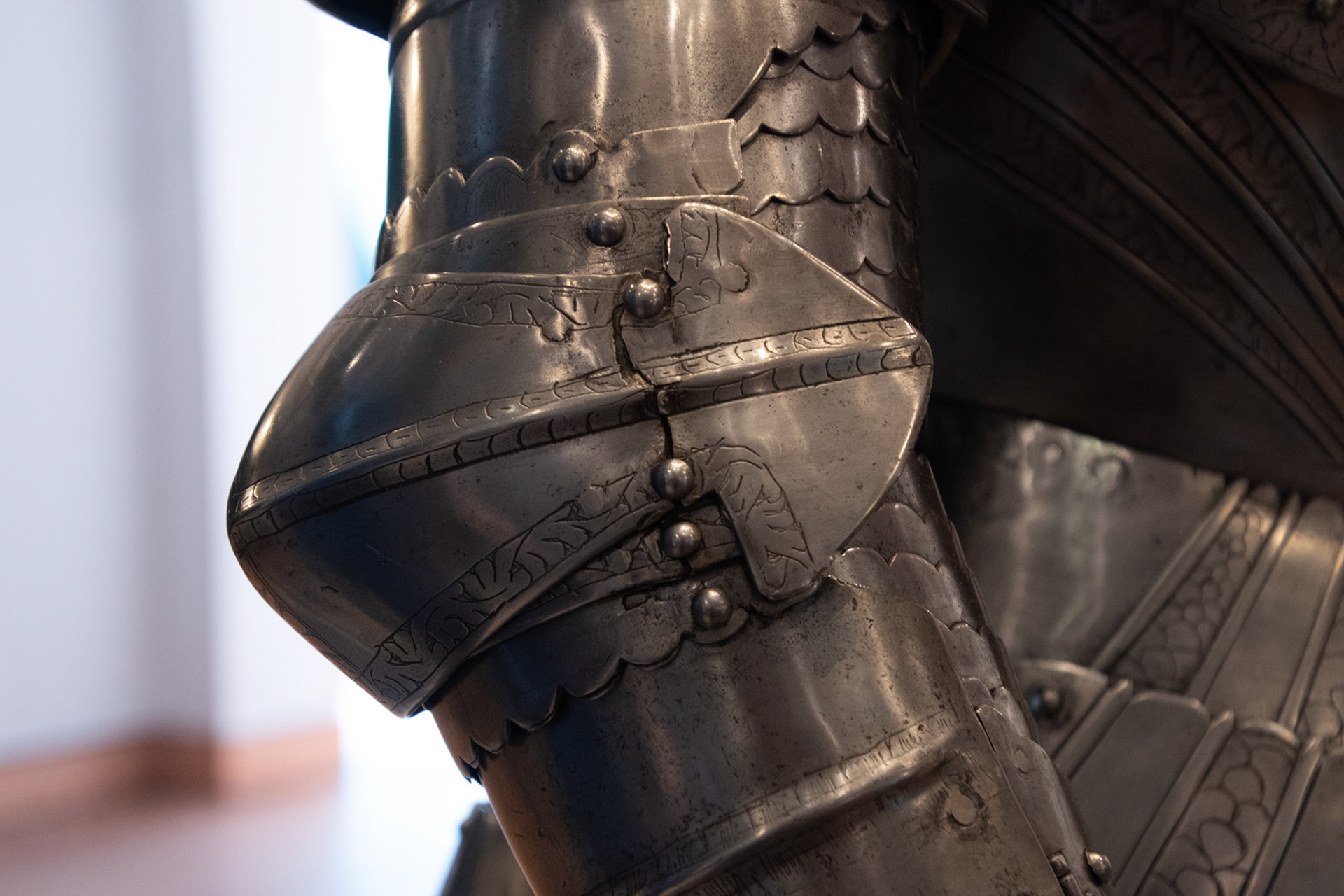
English, Greenwich, for King Henry VIII, 1520

North Italian, about 1550-60
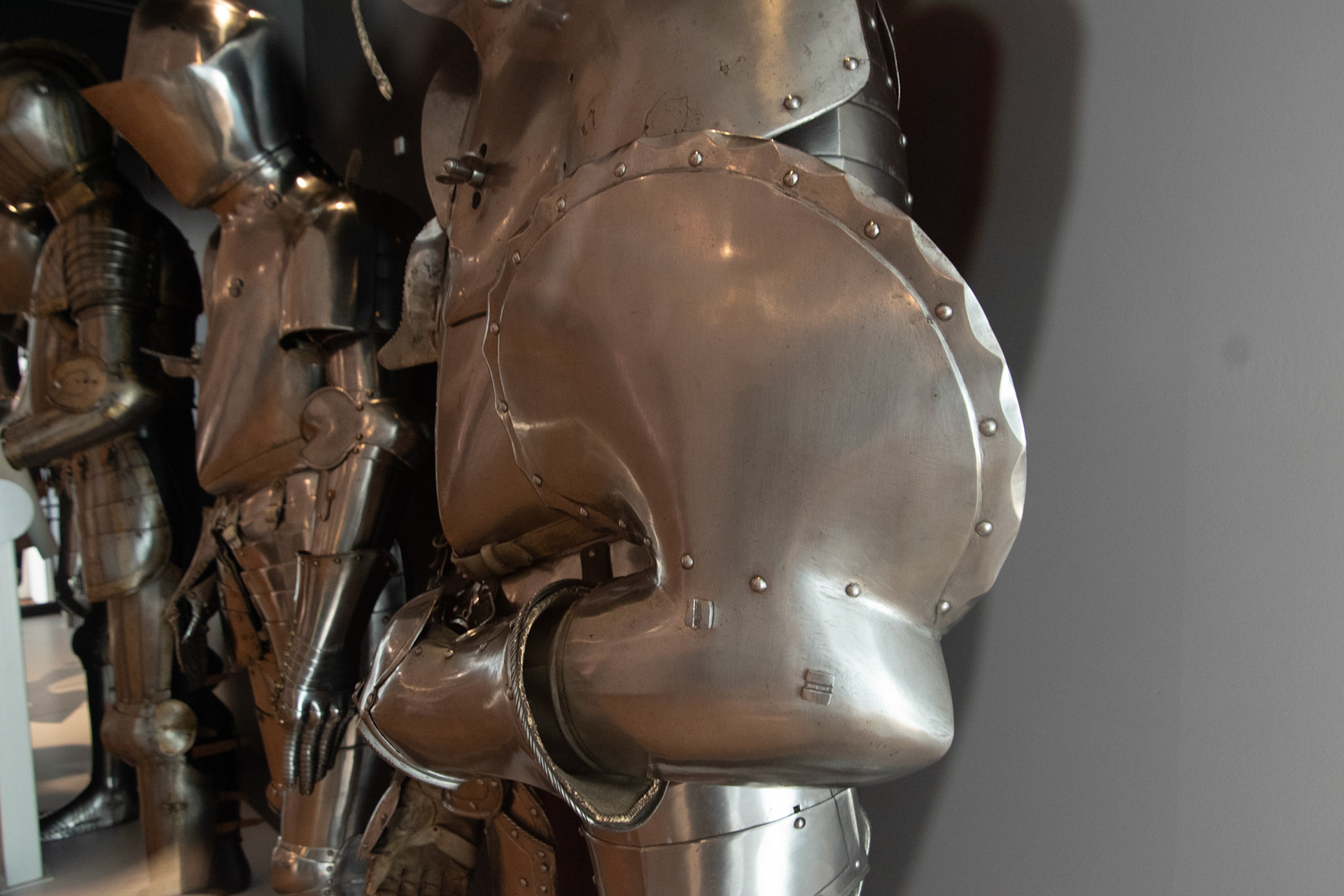
Germanic, Saxon, about 1580
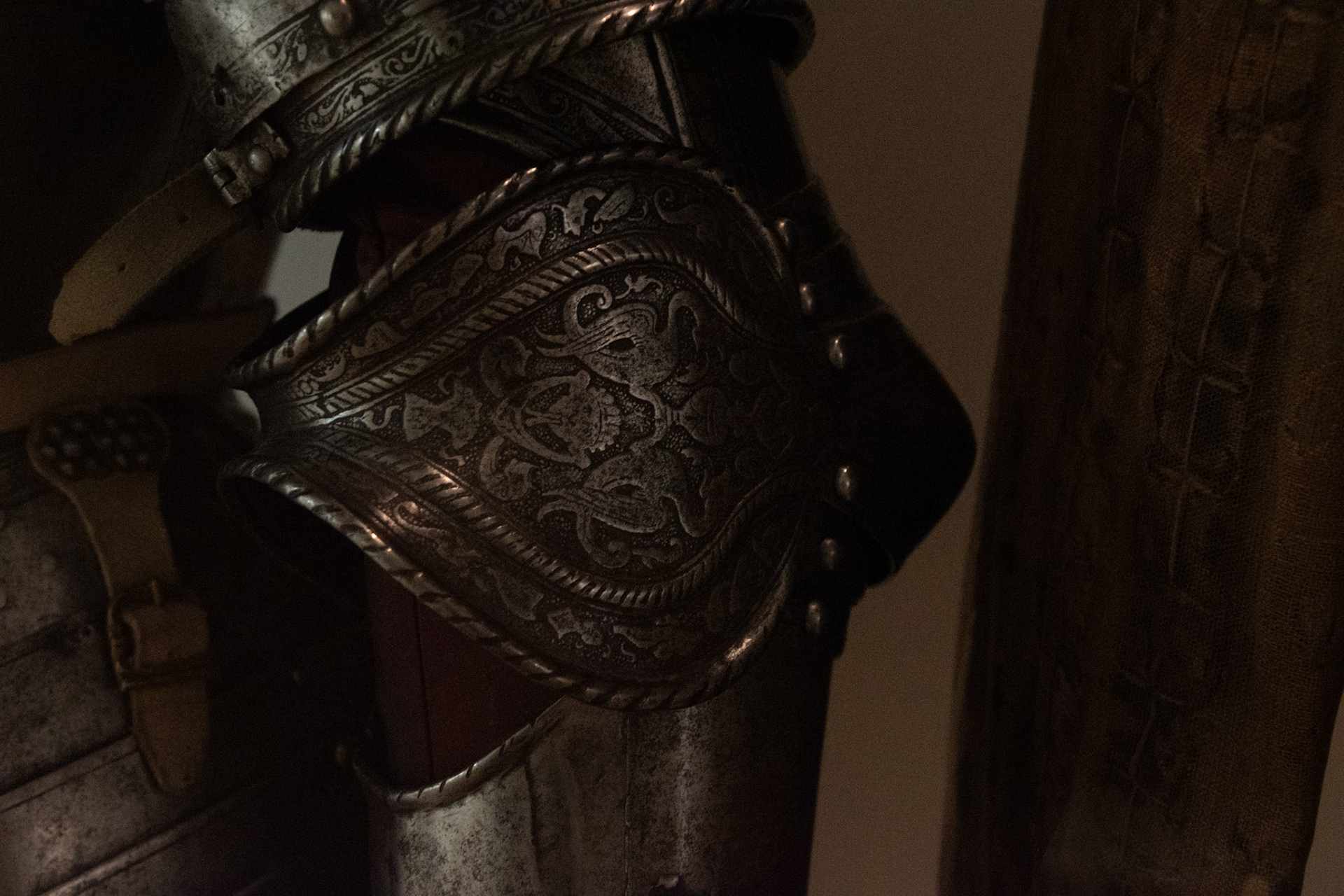
North Italian, about 1580
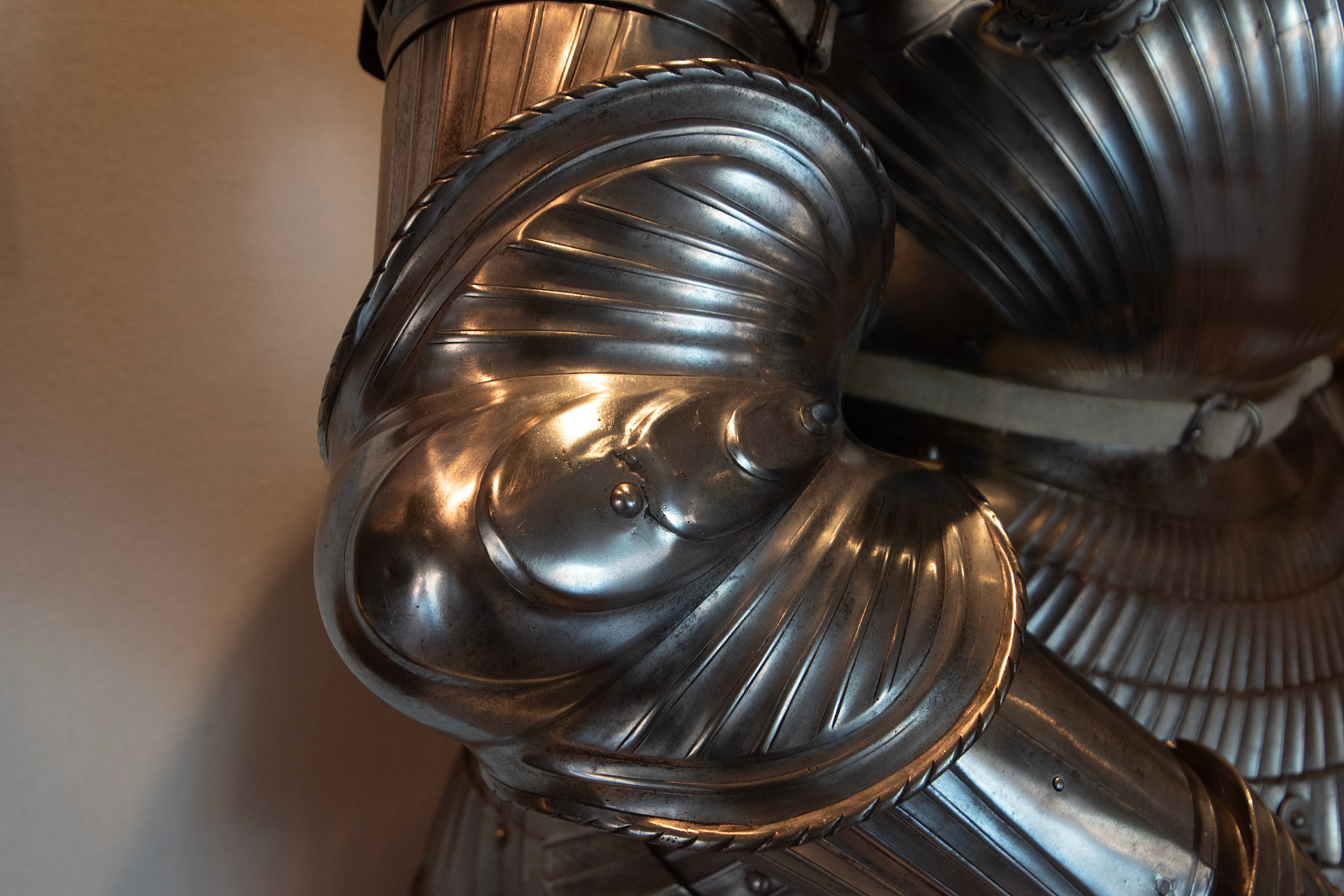
Germanic, Nuremberg, 1520-30
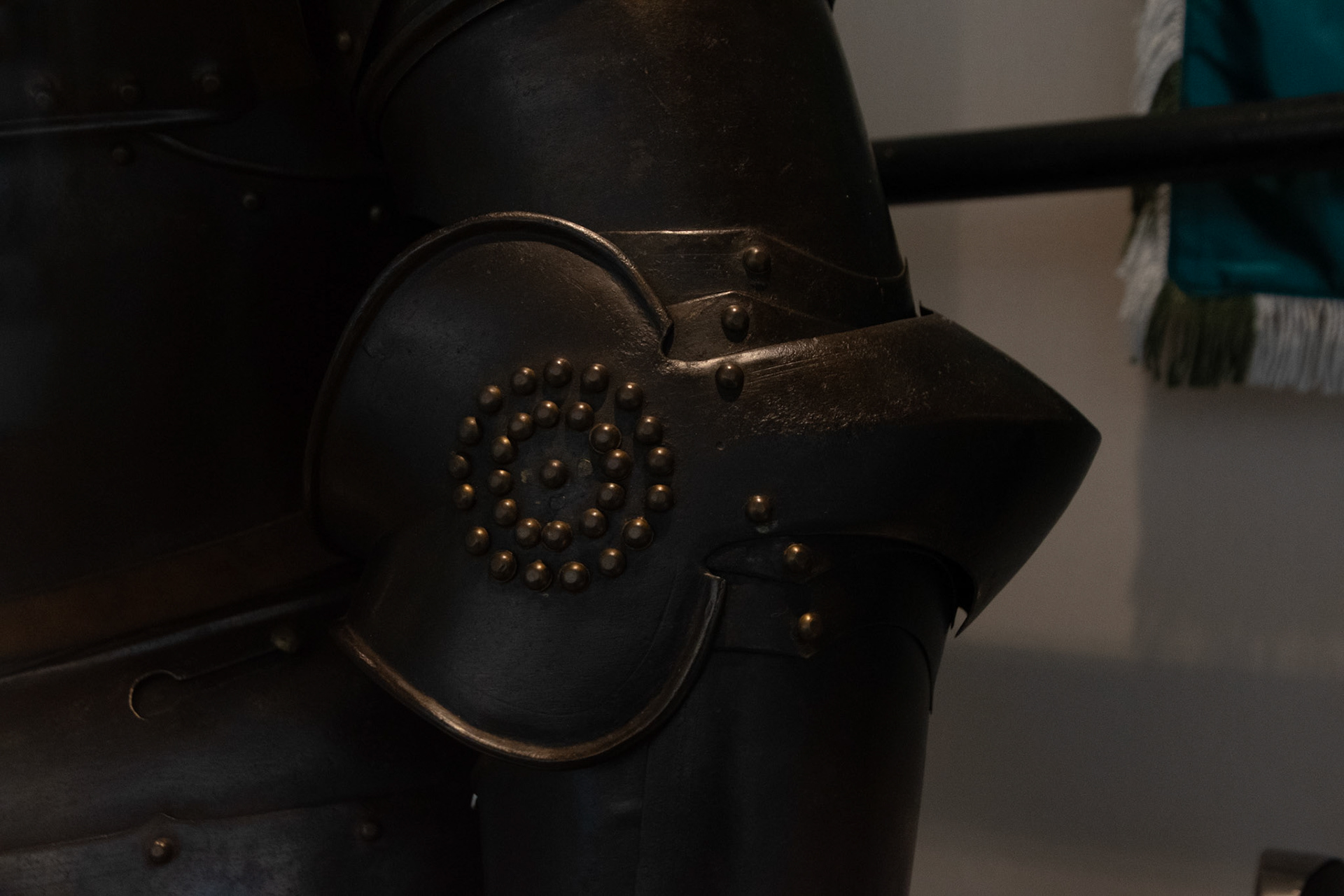
Germanic, about 1630

Dutch, about 1630
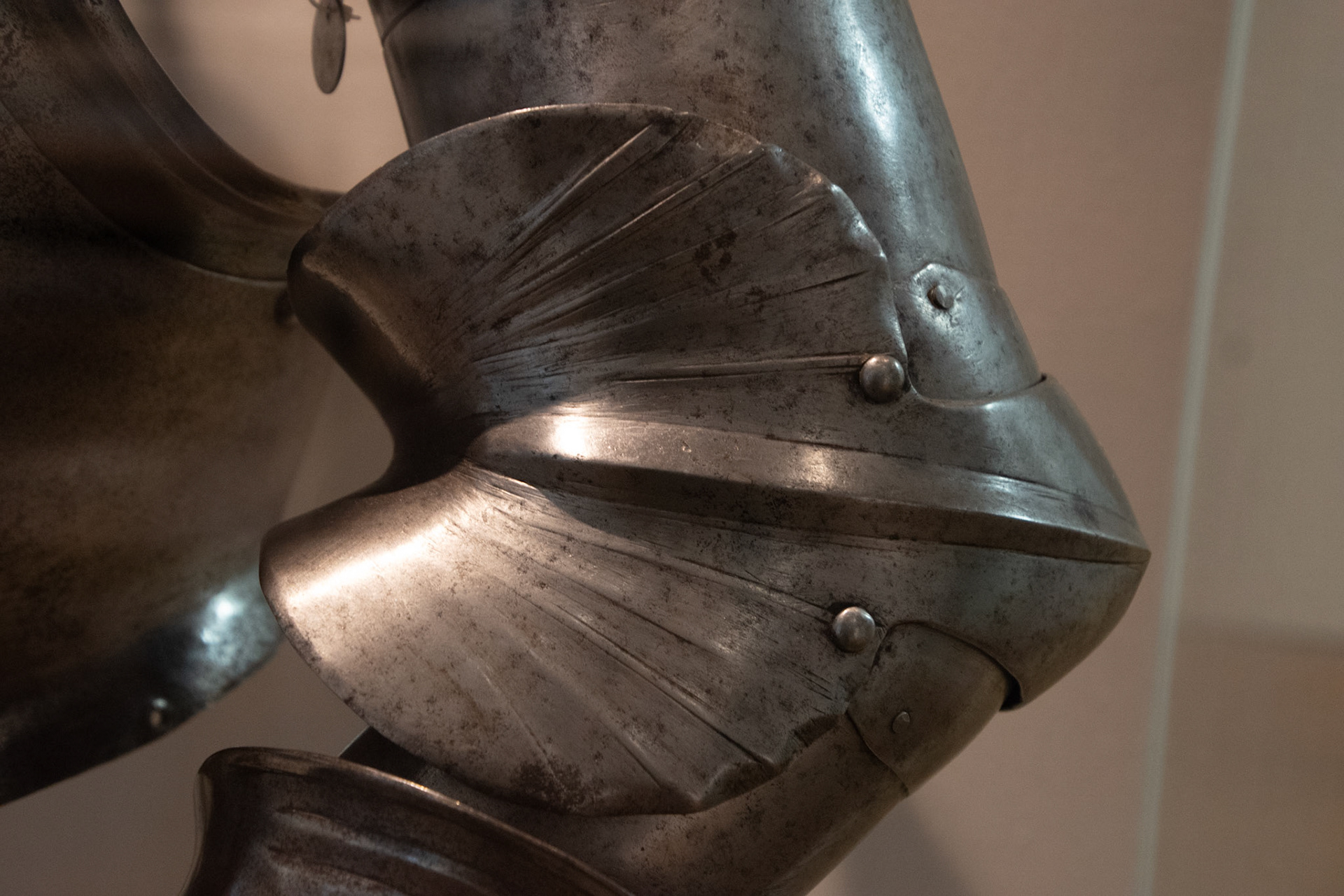
Probably Flemish, about 1520-30
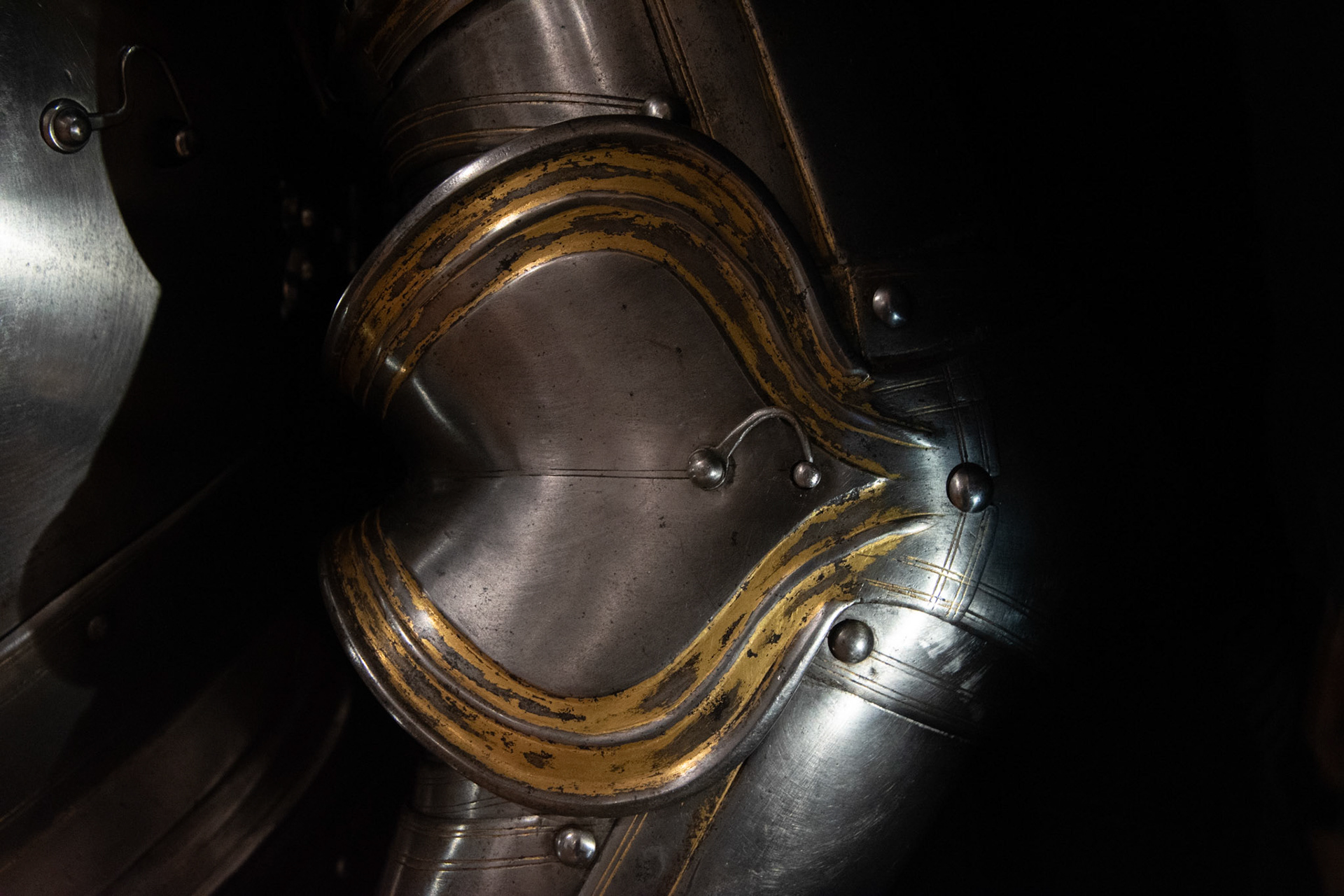
English, Greenwich, about 1560
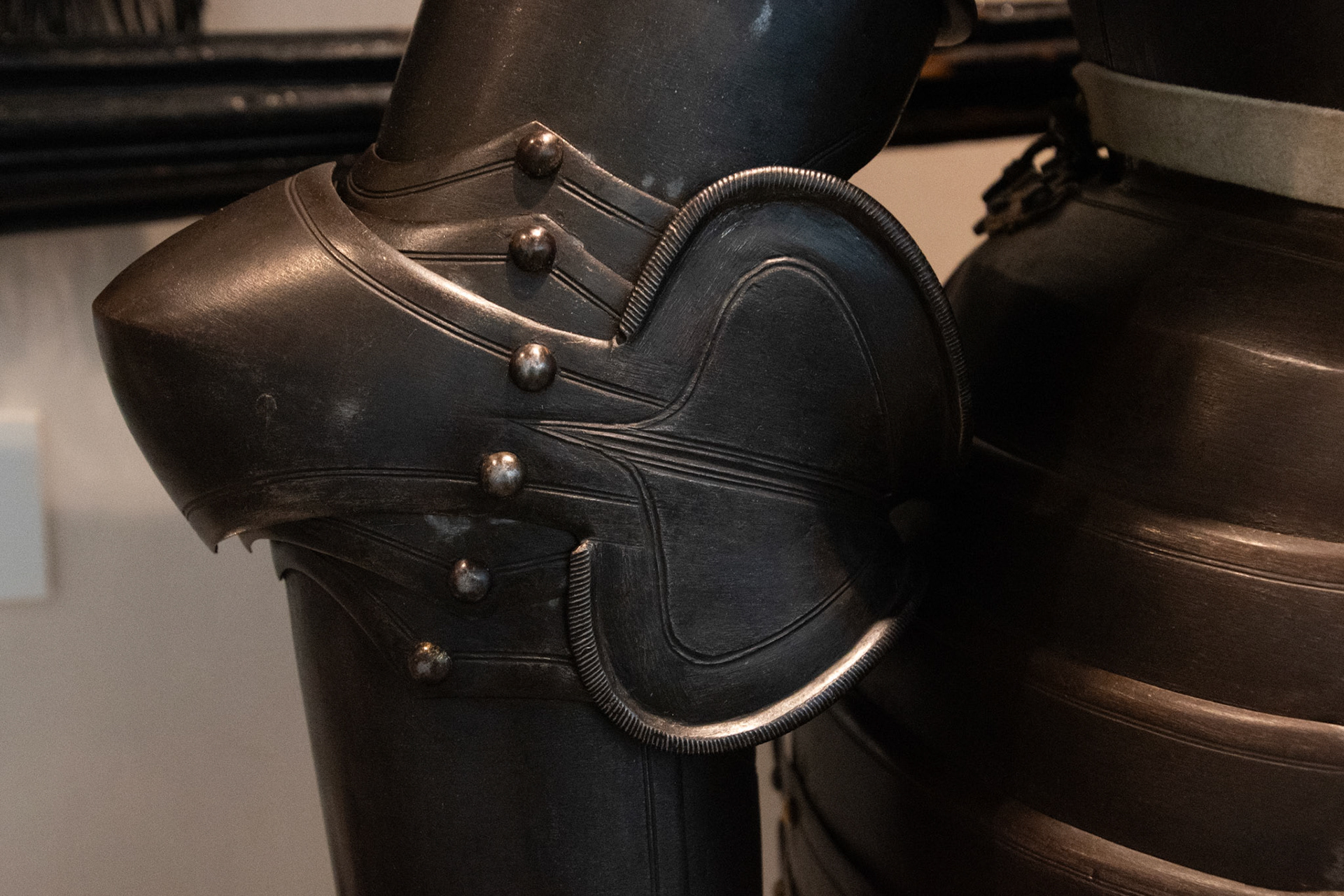
Dutch, about 1630
Pictures taken at Royal Armoires Leeds
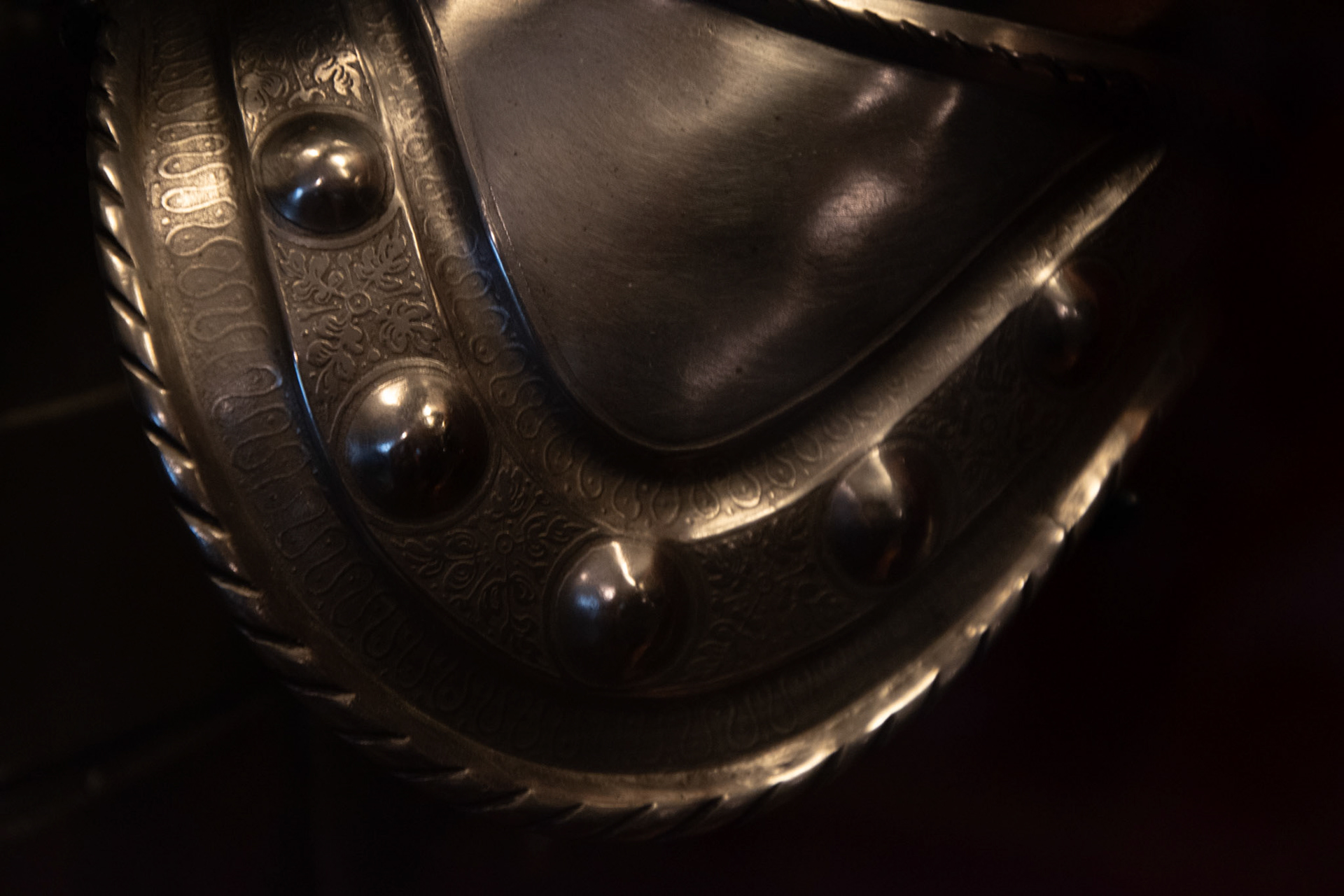
North Germanic, possibly Brunswick, 1540, https://wallacelive.wallacecollection.org/eMP/eMuseumPlus?service=direct/1/ResultListView/result.t1.collection_list.$TspTitleLink.link&sp=10&sp=Scollection&sp=SfieldValue&sp=0&sp=38&sp=2&sp=SdetailList&sp=0&sp=Sdetail&sp=2&sp=F&sp=T&sp=1

Germanic, 1515-25, https://wallacelive.wallacecollection.org/eMP/eMuseumPlus?service=direct/1/ResultListView/result.t1.collection_list.$TspTitleLink.link&sp=10&sp=Scollection&sp=SfieldValue&sp=0&sp=40&sp=2&sp=SdetailList&sp=0&sp=Sdetail&sp=2&sp=F&sp=T&sp=0
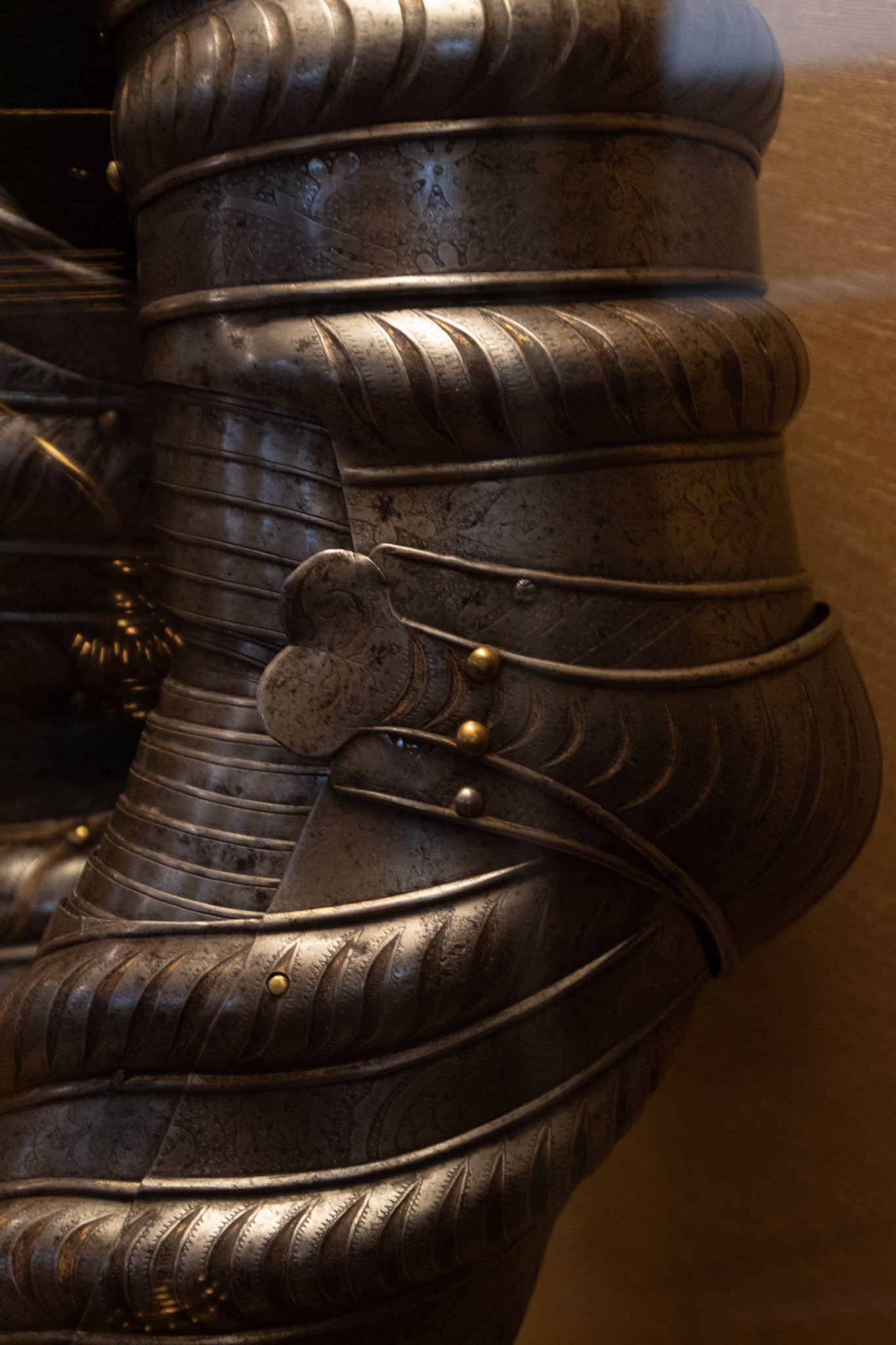
Austrian, Innsbruck, made by Konrad Seusenhofer, https://wallacelive.wallacecollection.org/eMP/eMuseumPlus?service=direct/1/ResultListView/result.t1.collection_list.$TspTitleLink.link&sp=10&sp=Scollection&sp=SfieldValue&sp=0&sp=42&sp=2&sp=SdetailList&sp=0&sp=Sdetail&sp=2&sp=F&sp=T&sp=0
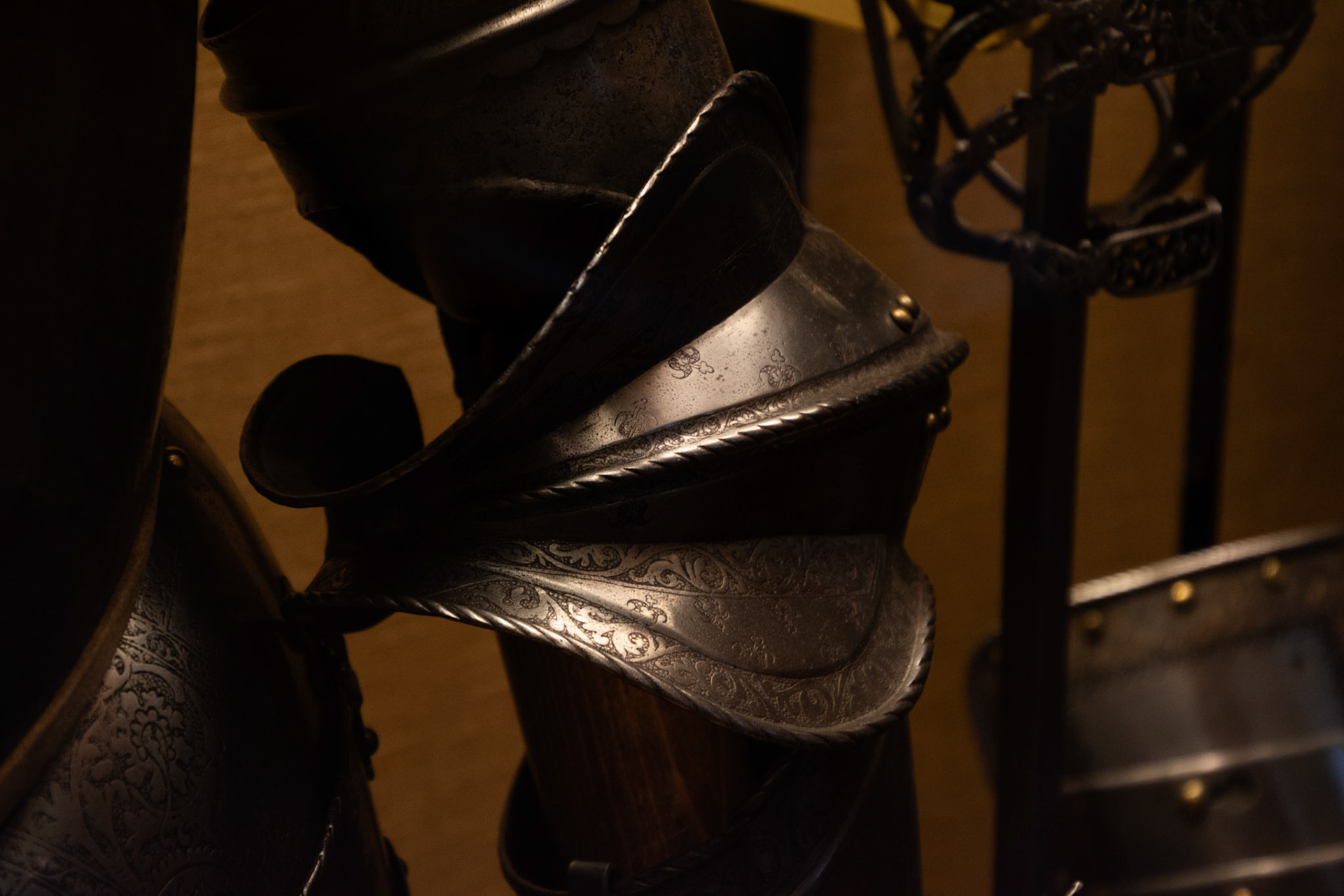
Italian, 1560, https://wallacelive.wallacecollection.org/eMP/eMuseumPlus?service=direct/1/ResultListView/result.t1.collection_list.$TspTitleImageLink.link&sp=10&sp=Scollection&sp=SfieldValue&sp=0&sp=44&sp=2&sp=SdetailList&sp=0&sp=Sdetail&sp=2&sp=F&sp=T&sp=0
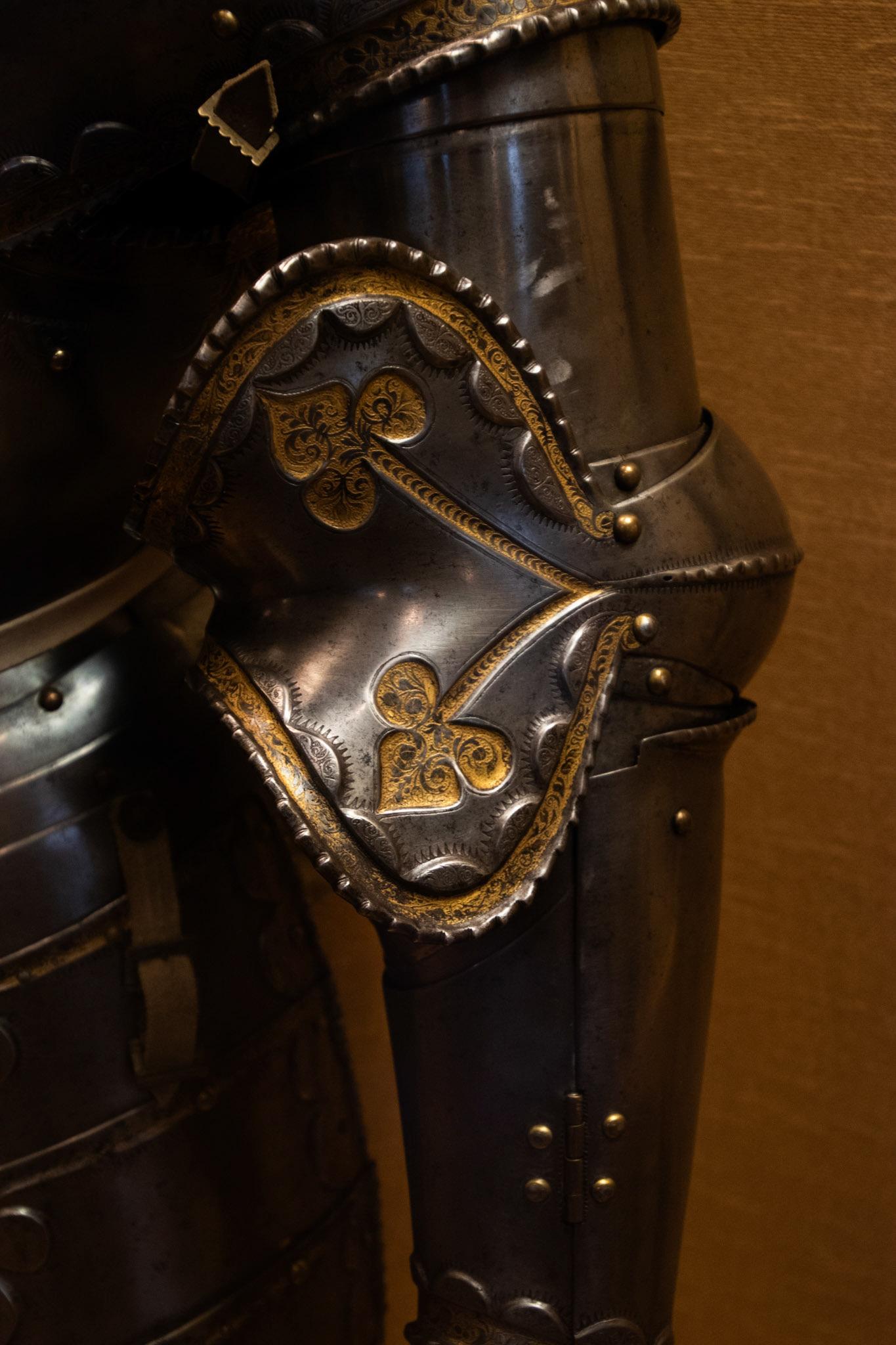
Germanic, Augsburg, for Kolman Helmschmid, made by Daniel Hopfer, 1525-30, https://wallacelive.wallacecollection.org/eMP/eMuseumPlus?service=direct/1/ResultListView/result.t1.collection_list.$TspTitleLink.link&sp=10&sp=Scollection&sp=SfieldValue&sp=0&sp=34&sp=2&sp=SdetailList&sp=0&sp=Sdetail&sp=2&sp=F&sp=T&sp=0
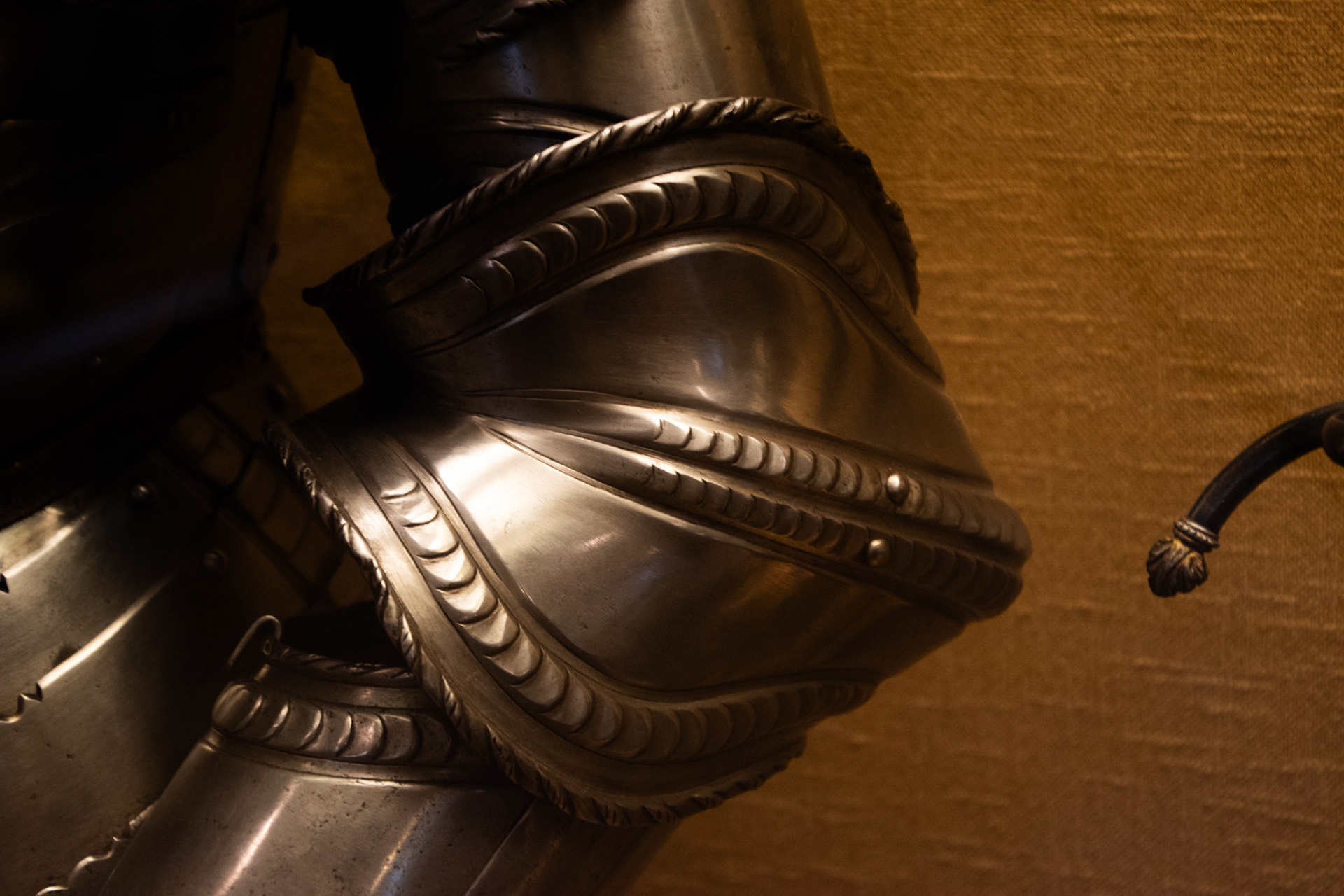
Germanic, 1540, https://wallacelive.wallacecollection.org/eMP/eMuseumPlus?service=direct/1/ResultListView/result.t1.collection_list.$TspTitleImageLink.link&sp=10&sp=Scollection&sp=SfieldValue&sp=0&sp=50&sp=2&sp=SdetailList&sp=0&sp=Sdetail&sp=2&sp=F&sp=T&sp=1
Photos taken at Wallace Collection
I found the subtle variation of the Couter interesting, all served the same purpose to protect the elbow and transition between forearm and upper arm, whilst not prohibiting movement. The designs all followed the same fanning out design which wrapped around the joint. The joints of the body were always a weakness however I found that this was one of the most consistently highly decorated locations of the body. I think that exploring the beautification of the body whilst contrasting it with a highly protective wearable could create a contemporary narrative using a traditional medium.
Examples of Gauntlet


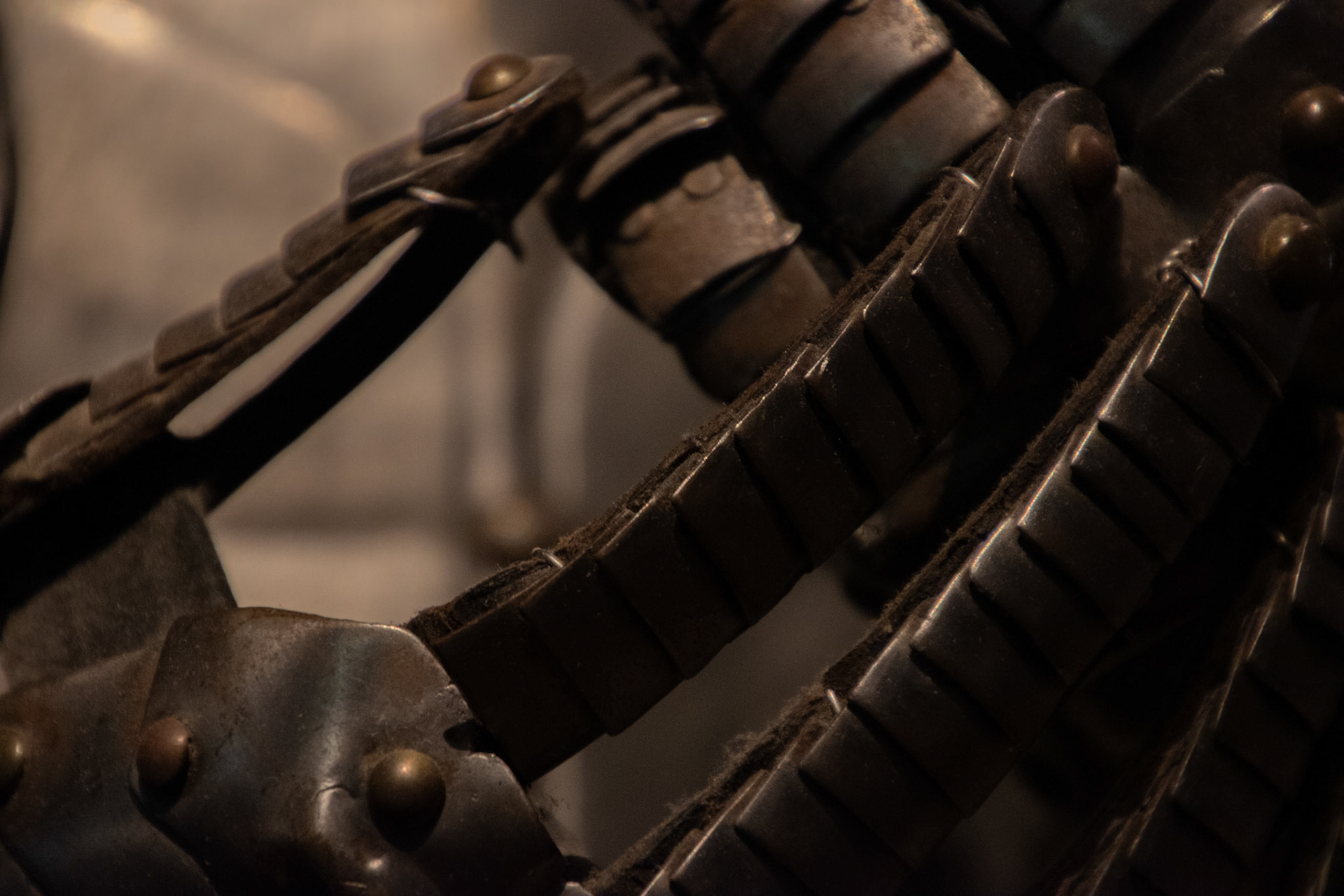
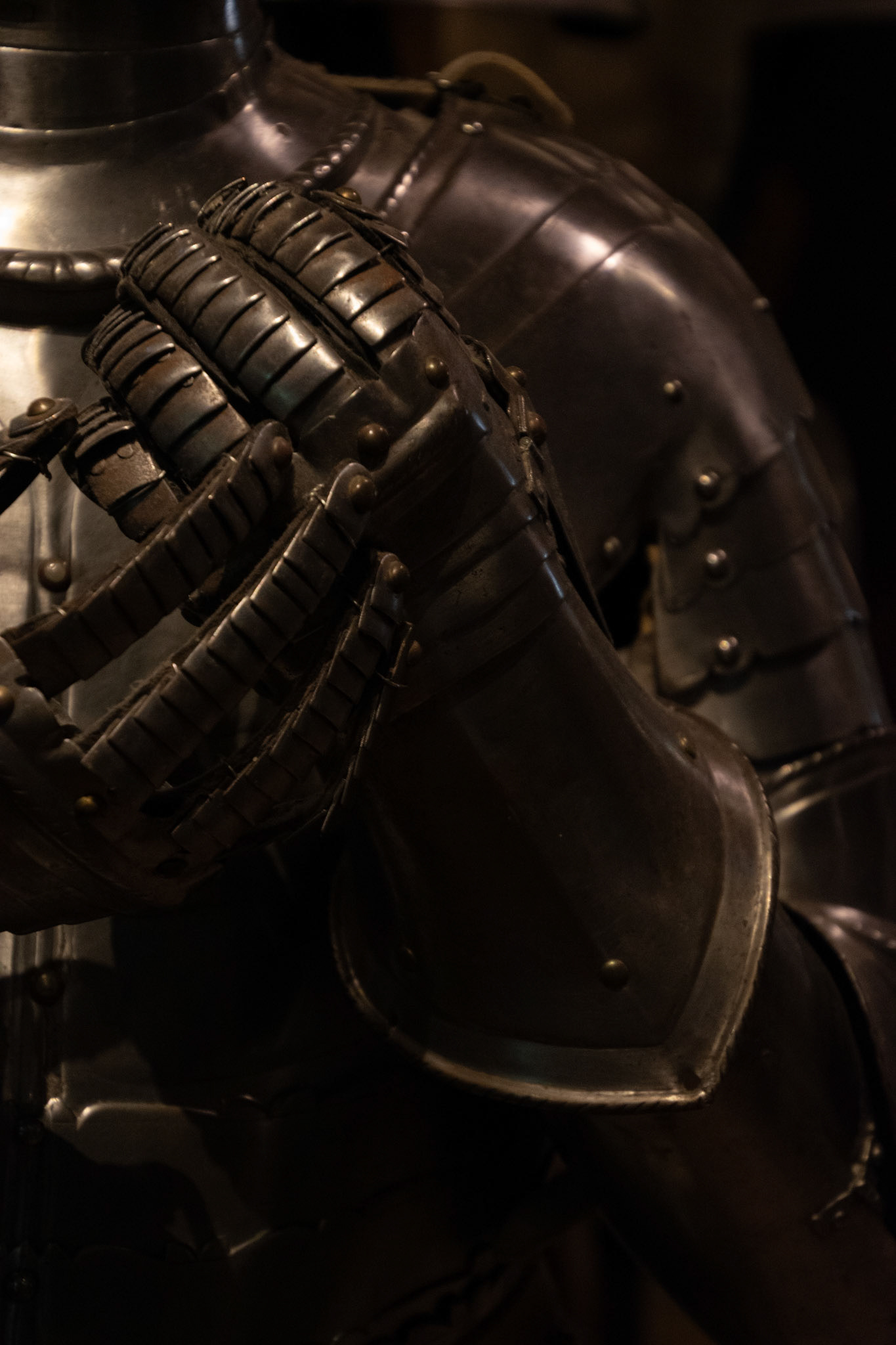
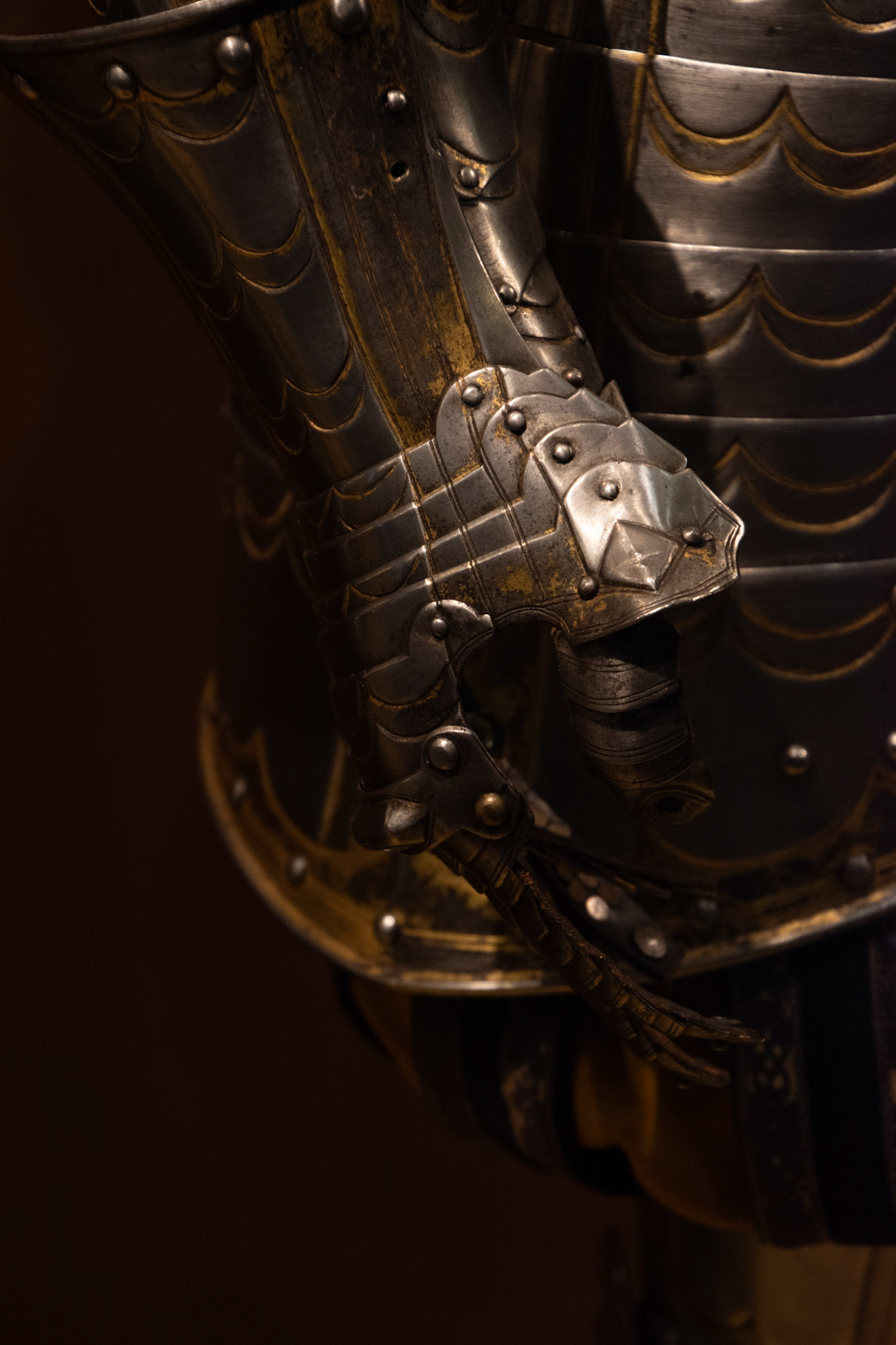



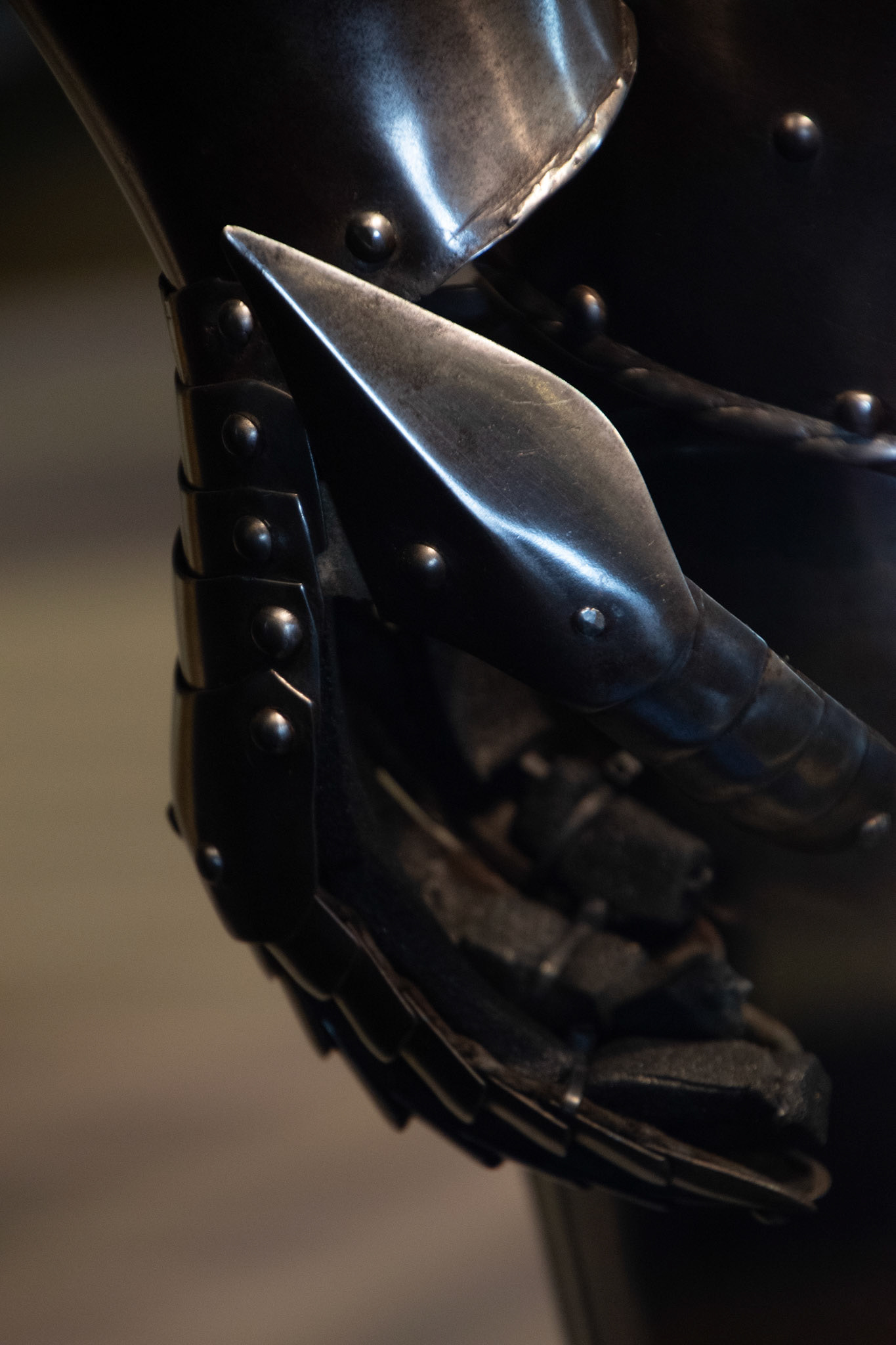
Pictures taken at the Tower of London
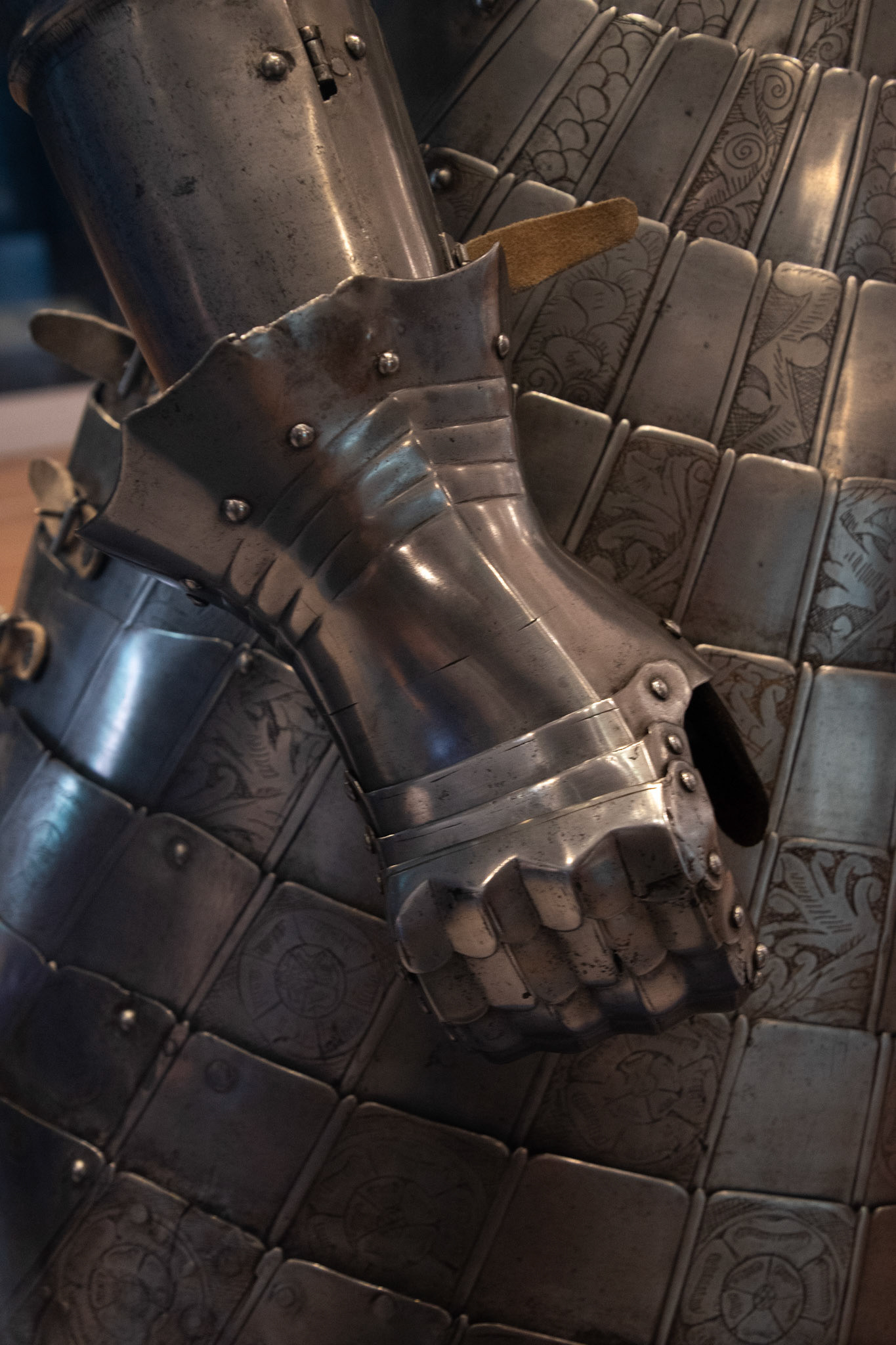
English, Greenwich, for King Henry VIII, 1520
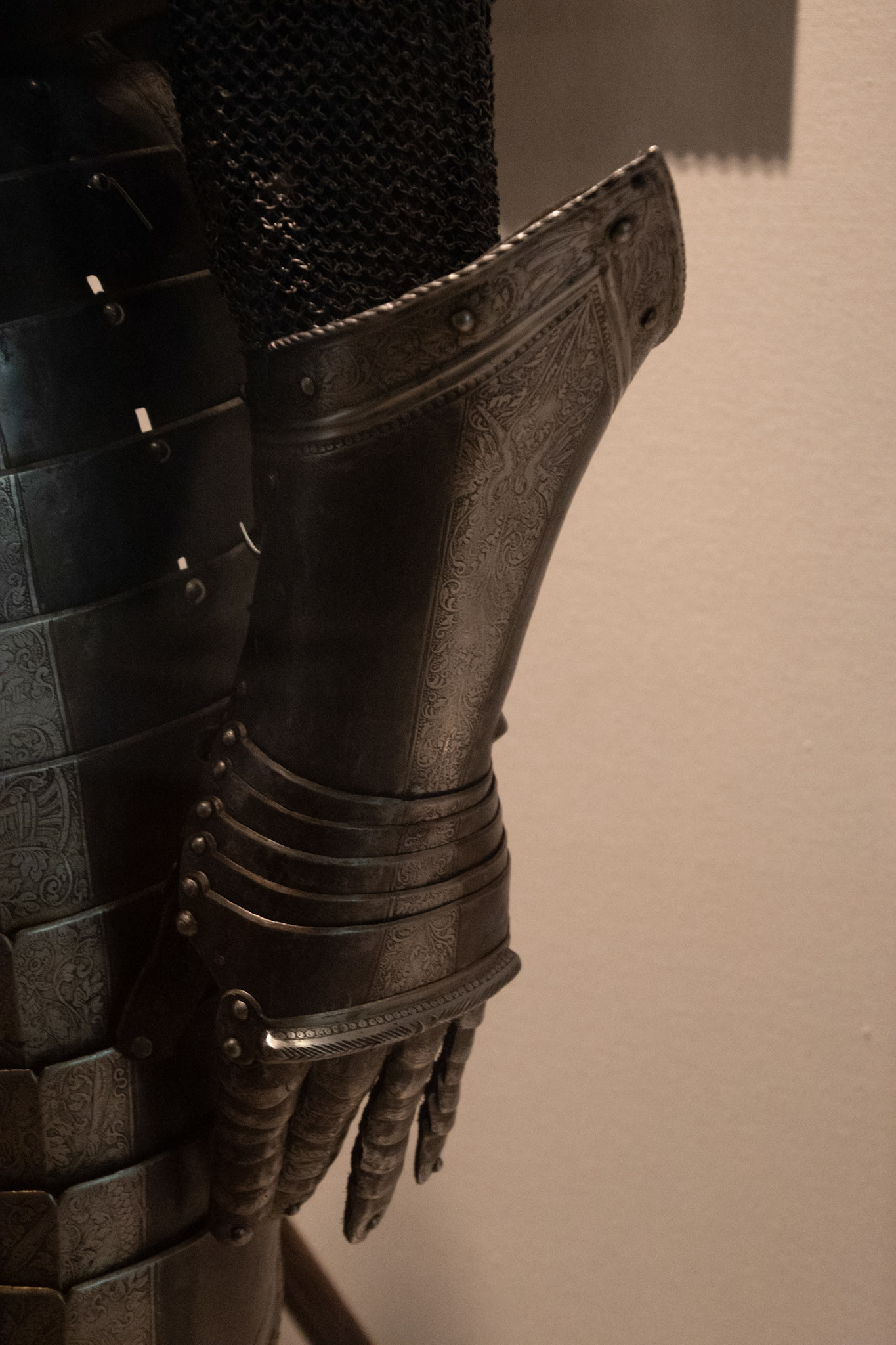
North Germanic, probably Brunswick, about 1560
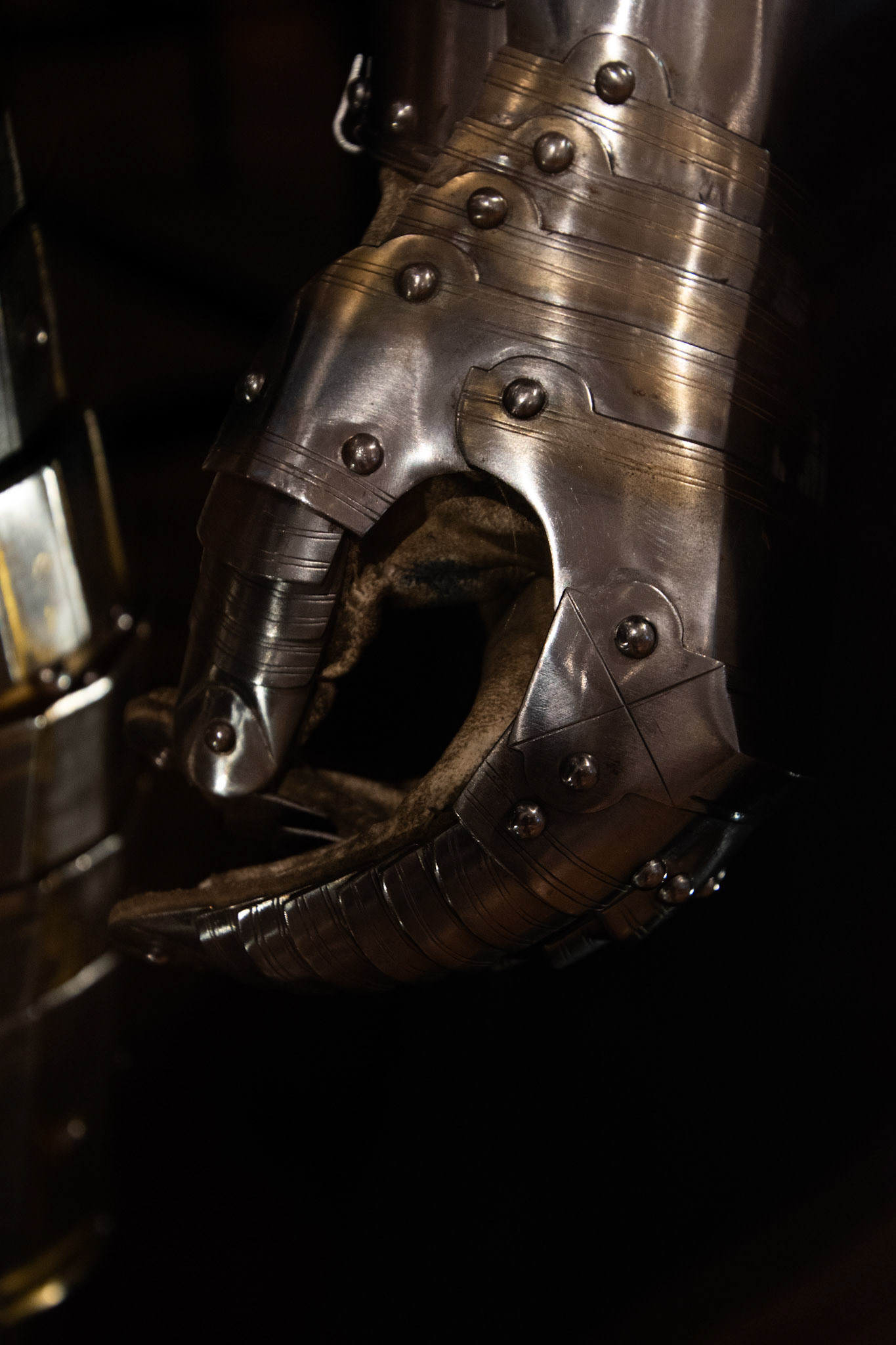
English, Greenwich, about 1560
Pictures taken at Royal Armoires Leeds

Germanic, 1480, https://wallacelive.wallacecollection.org/eMP/eMuseumPlus?service=direct/1/ResultListView/result.t1.collection_list.$TspTitleLink.link&sp=10&sp=Scollection&sp=SfieldValue&sp=0&sp=52&sp=2&sp=SdetailList&sp=0&sp=Sdetail&sp=2&sp=F&sp=T&sp=0

Germanic, 1480, https://wallacelive.wallacecollection.org/eMP/eMuseumPlus?service=direct/1/ResultListView/result.t1.collection_list.$TspTitleLink.link&sp=10&sp=Scollection&sp=SfieldValue&sp=0&sp=52&sp=2&sp=SdetailList&sp=0&sp=Sdetail&sp=2&sp=F&sp=T&sp=0
Photos taken at Wallace Collection
I was drawn to the repetition of the steel plates in the gauntlet. Also, I liked the stacking and riveting of sheet steel to create a solid but articulating structure. I think that extracting these repeating shapes could be a good way to generate forms that span across the body.
Examples of armour on the torso

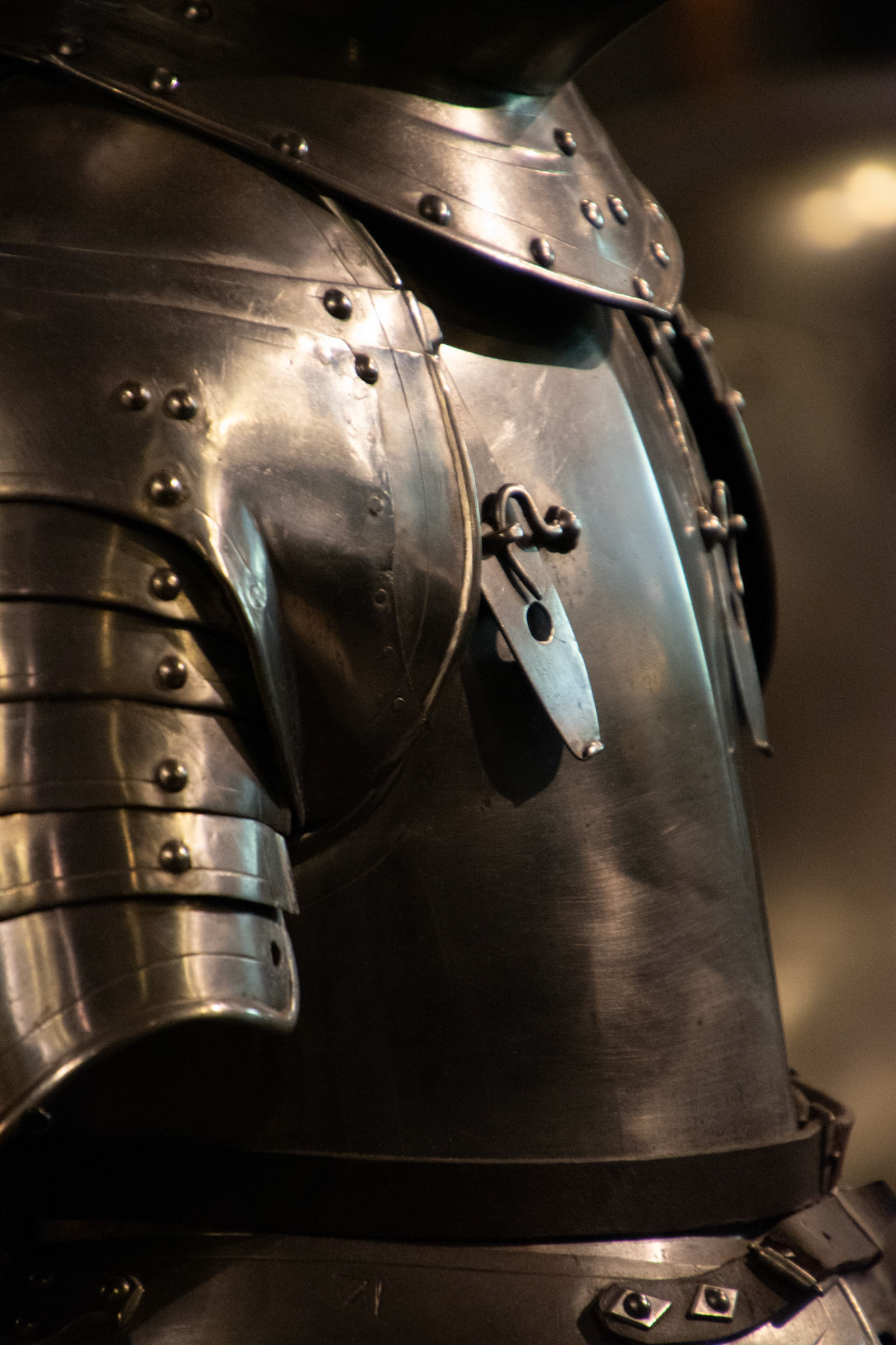
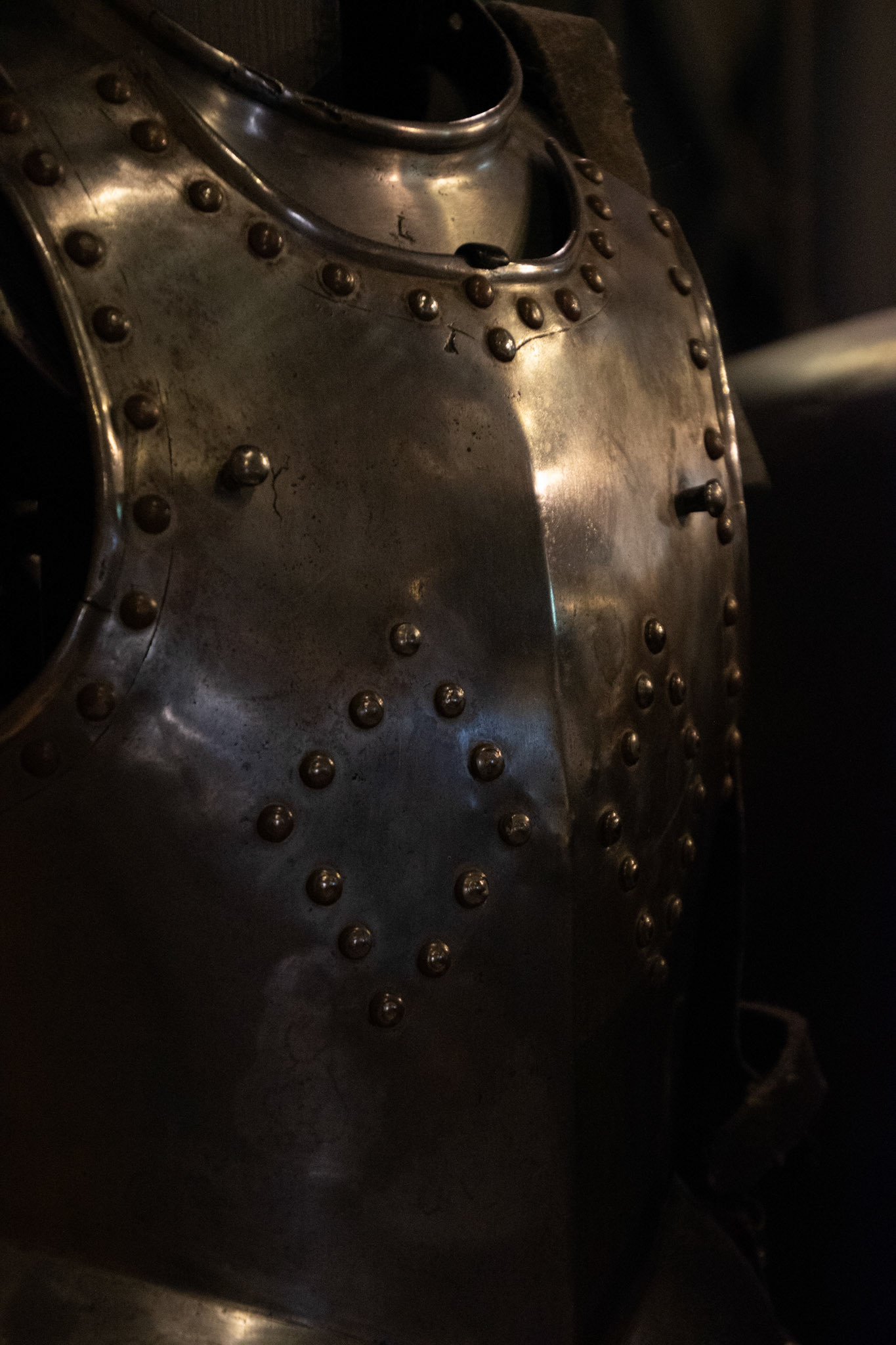
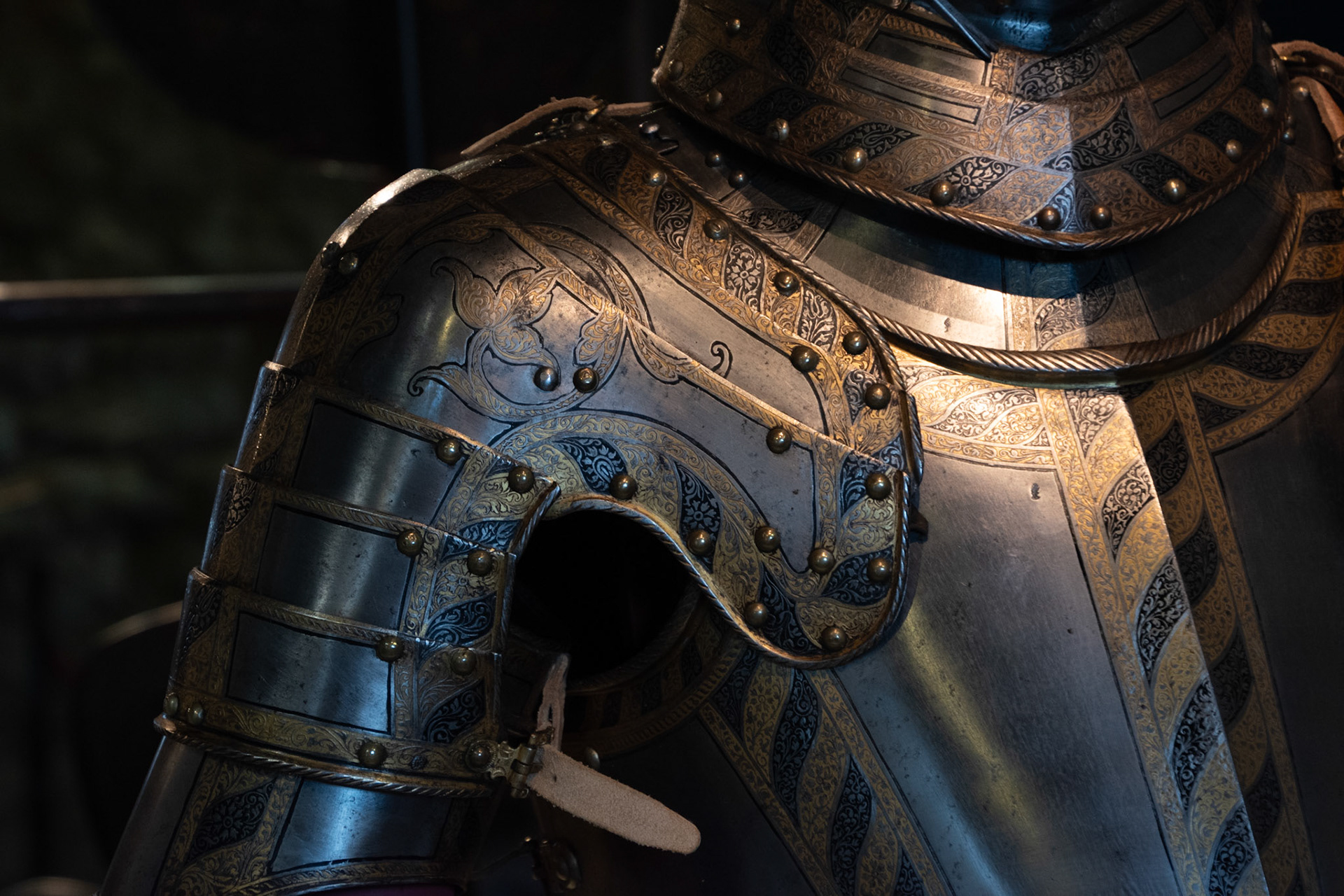
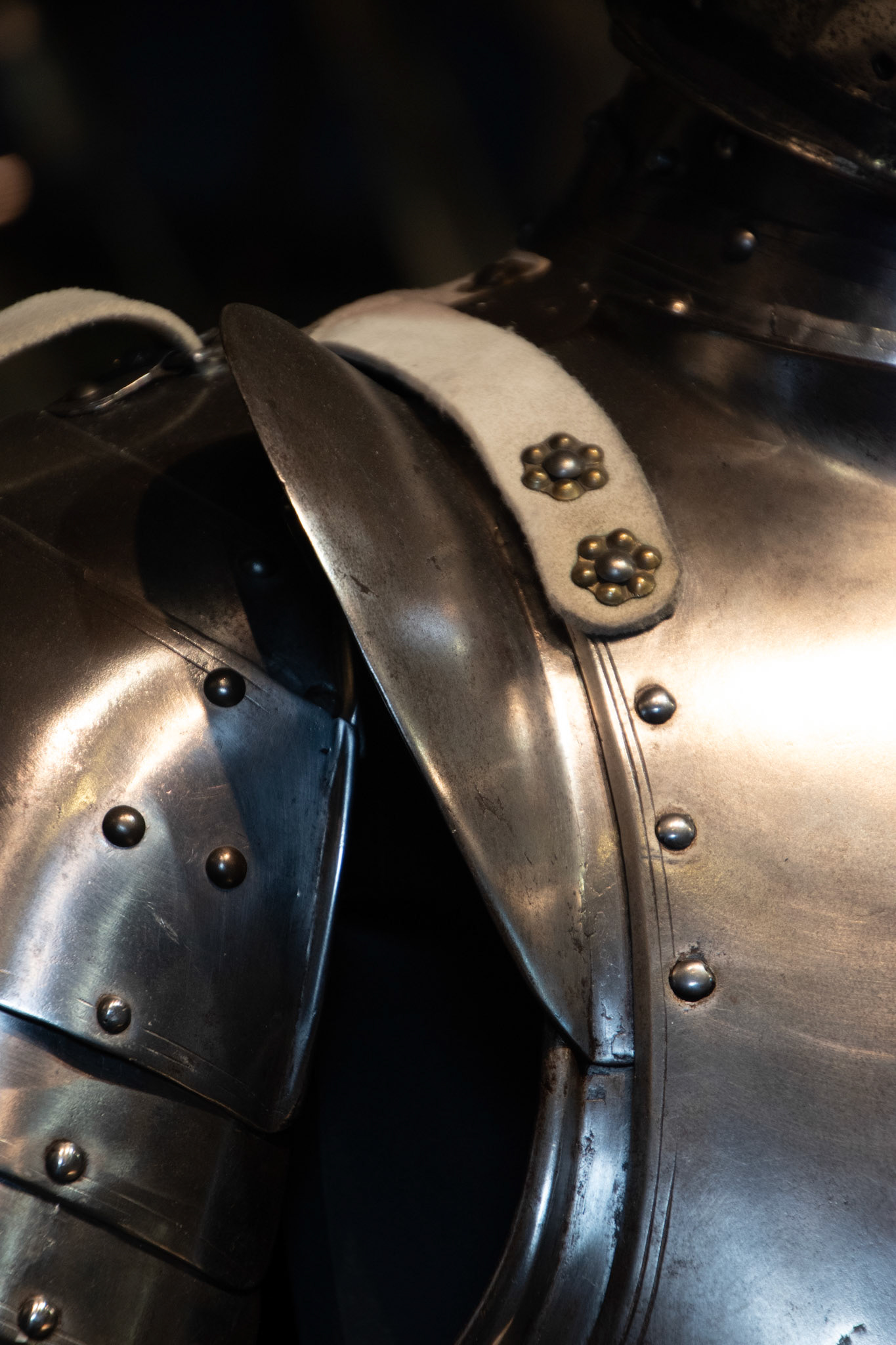
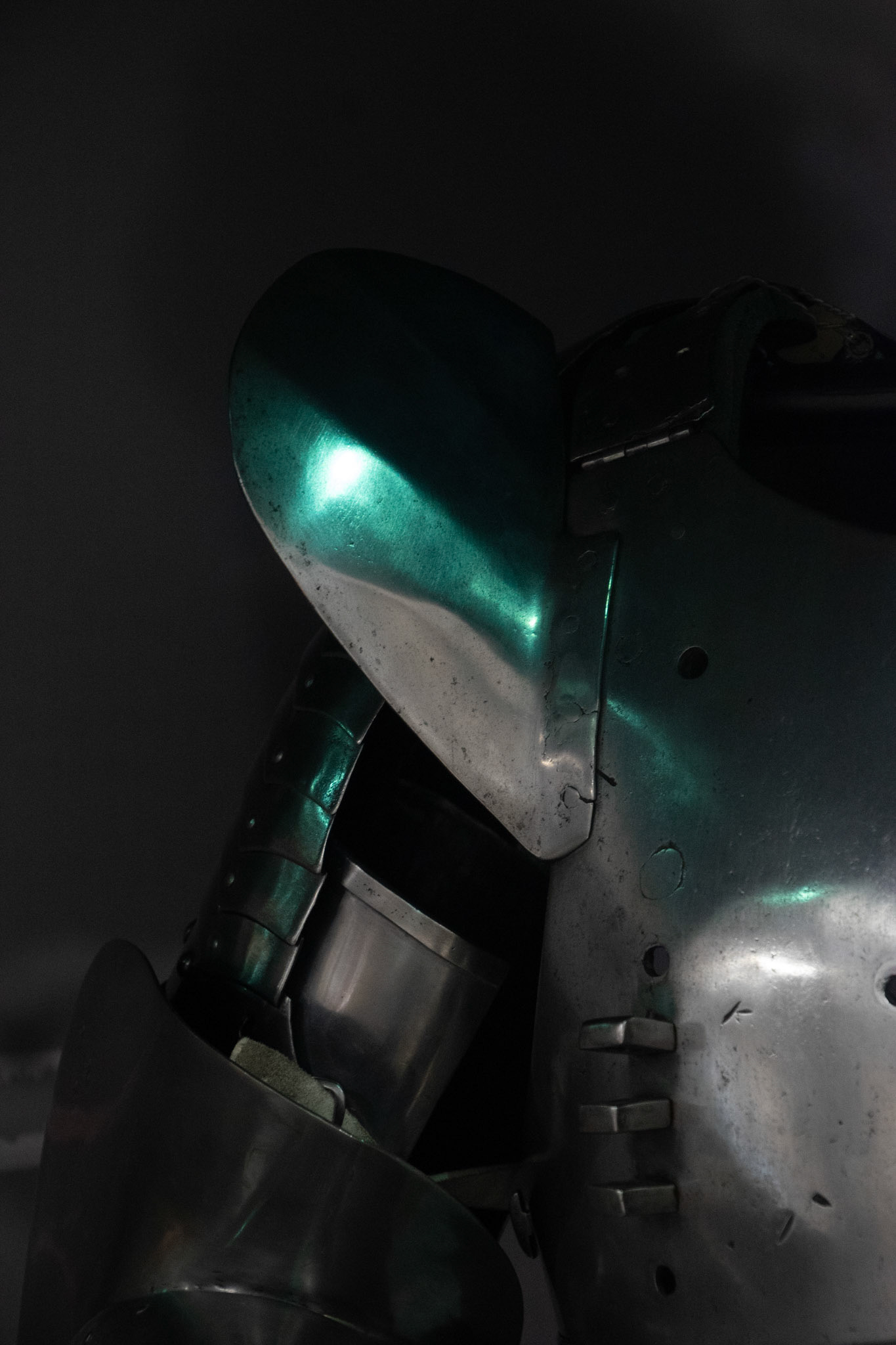
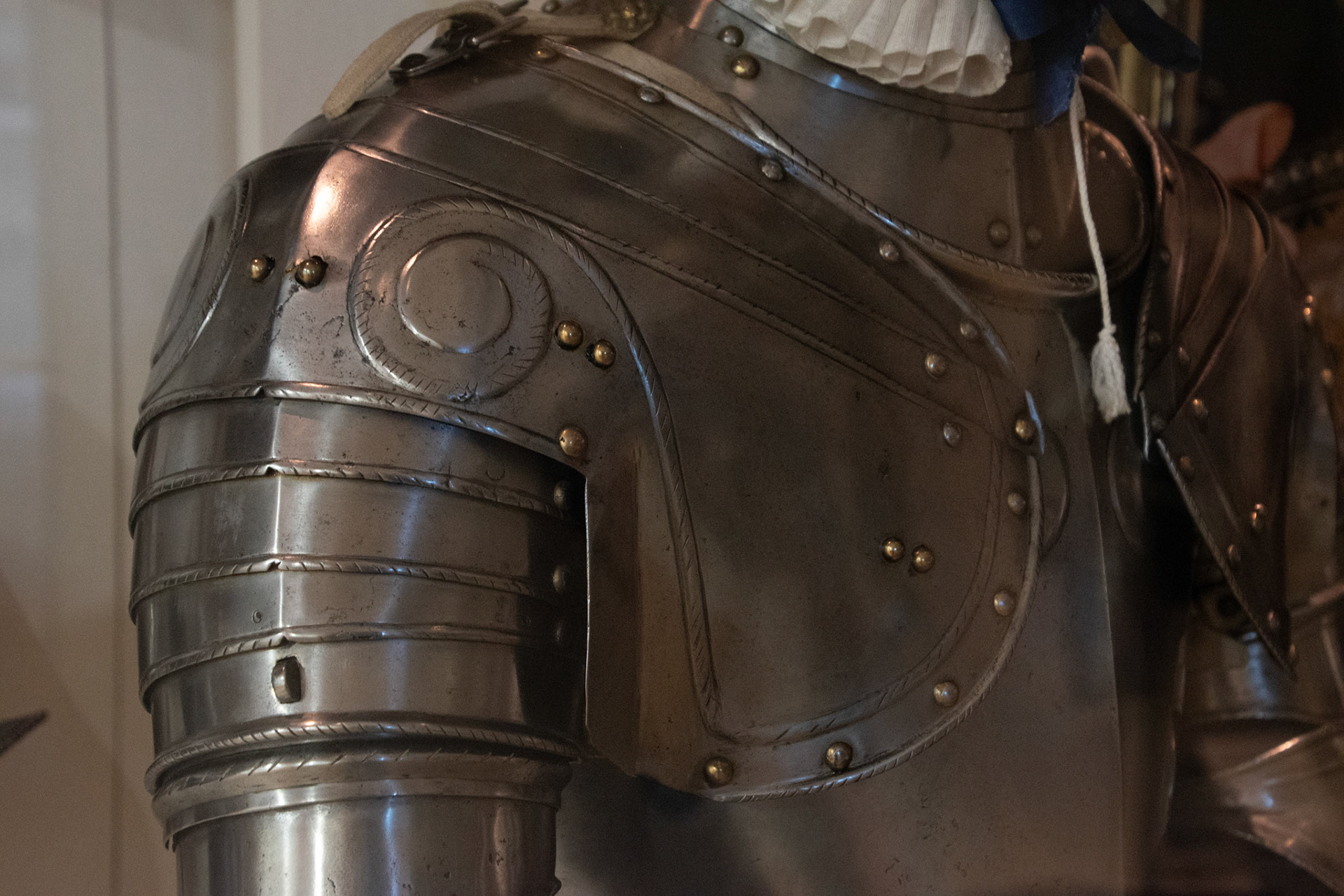

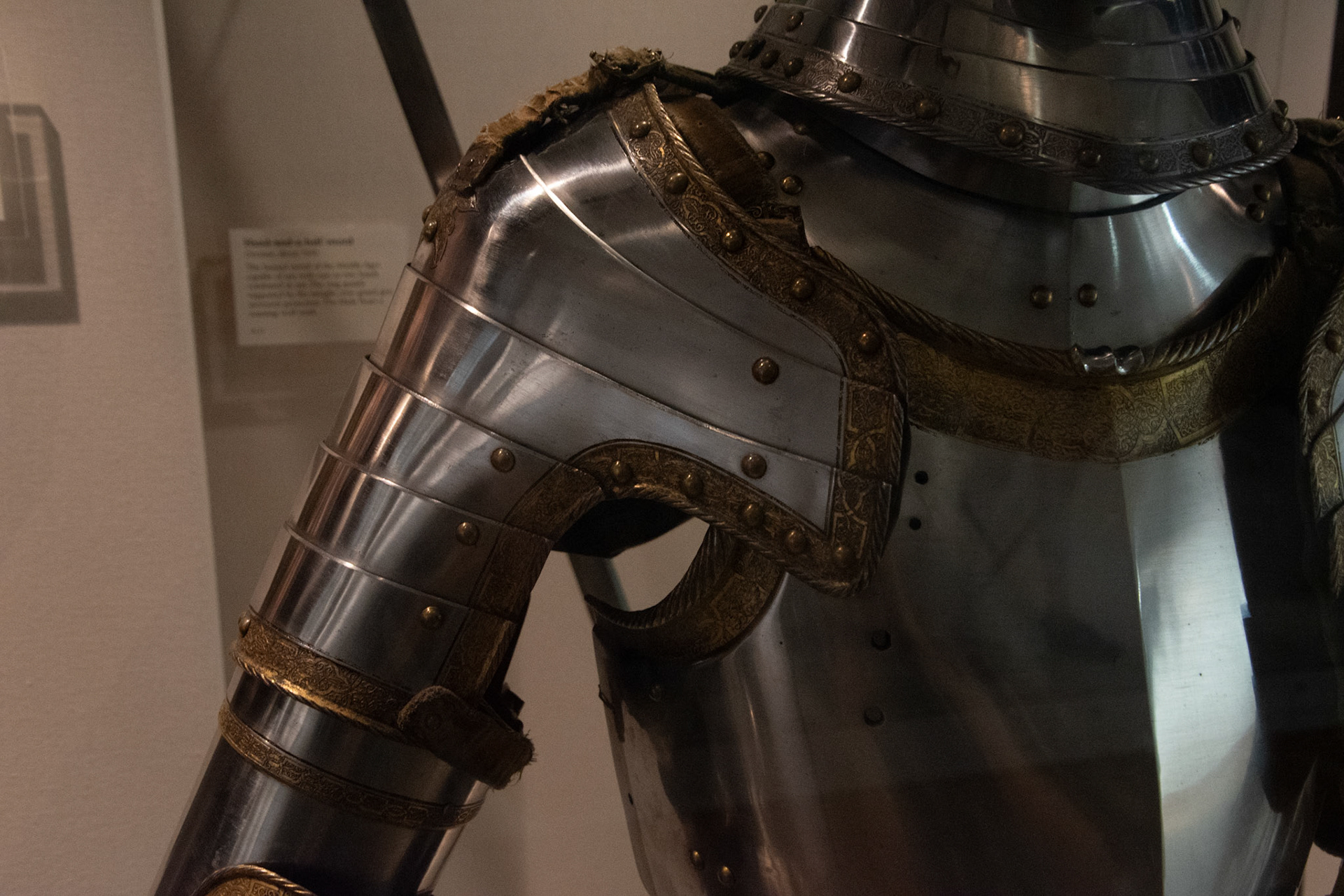
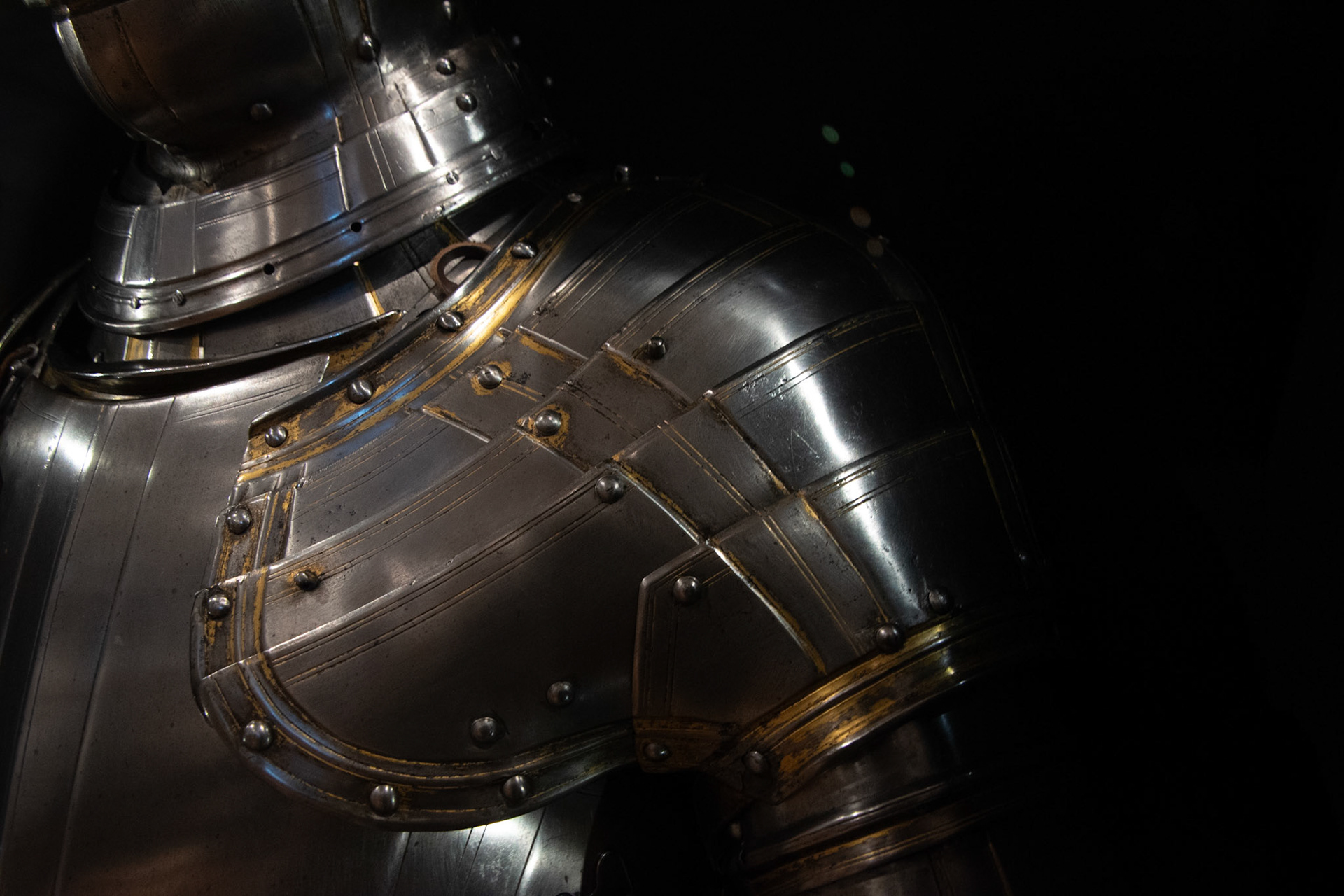
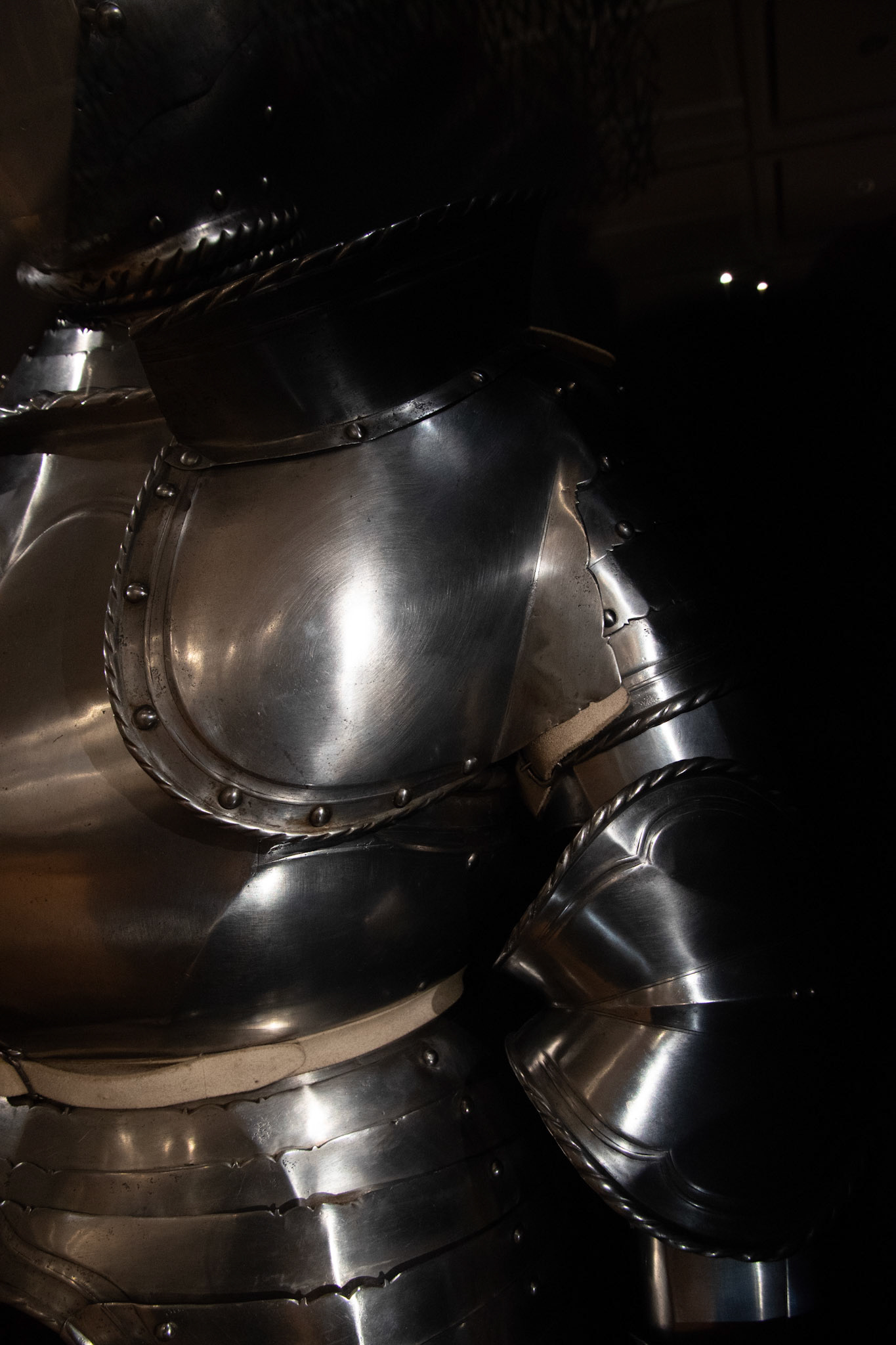

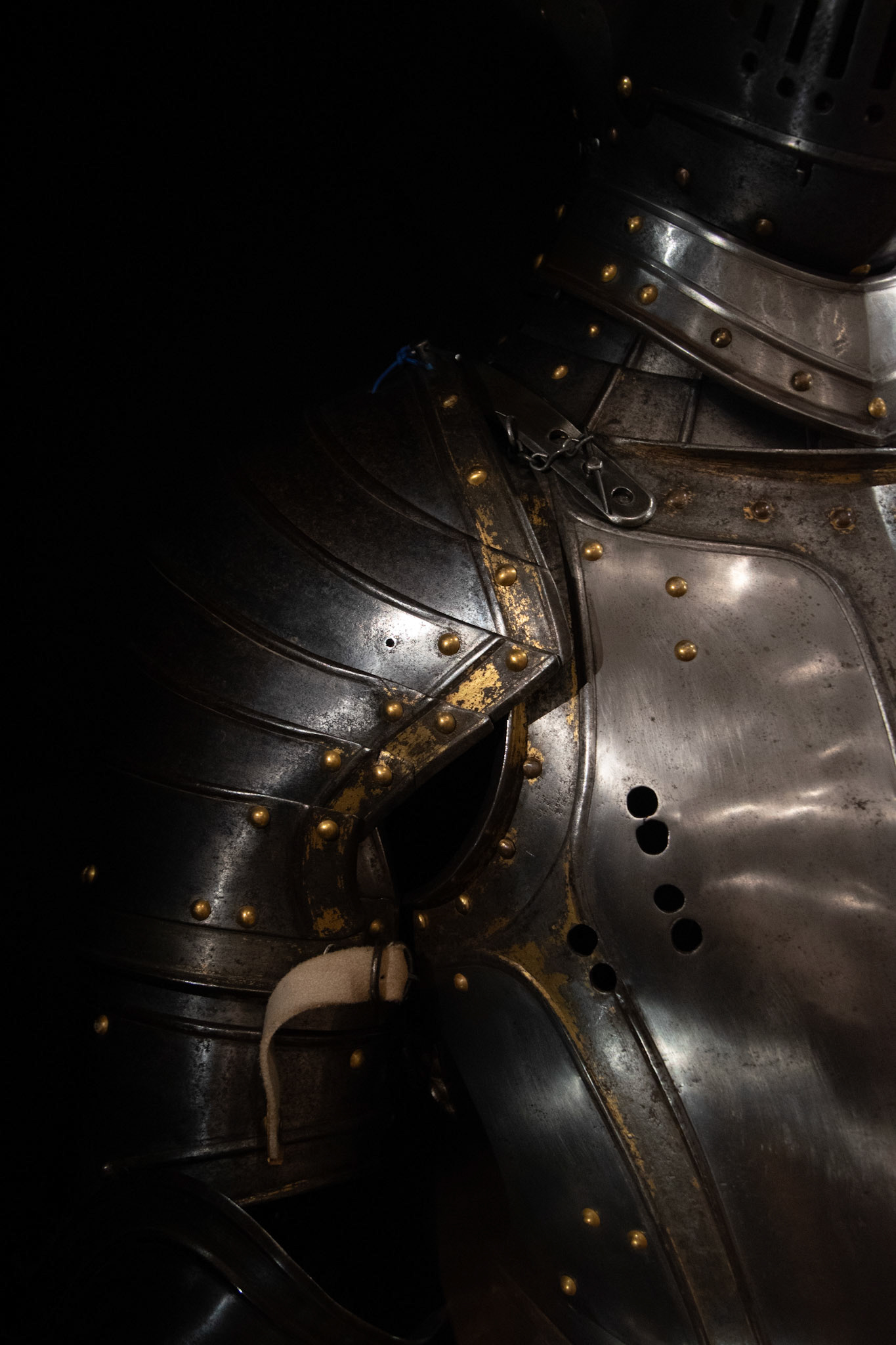
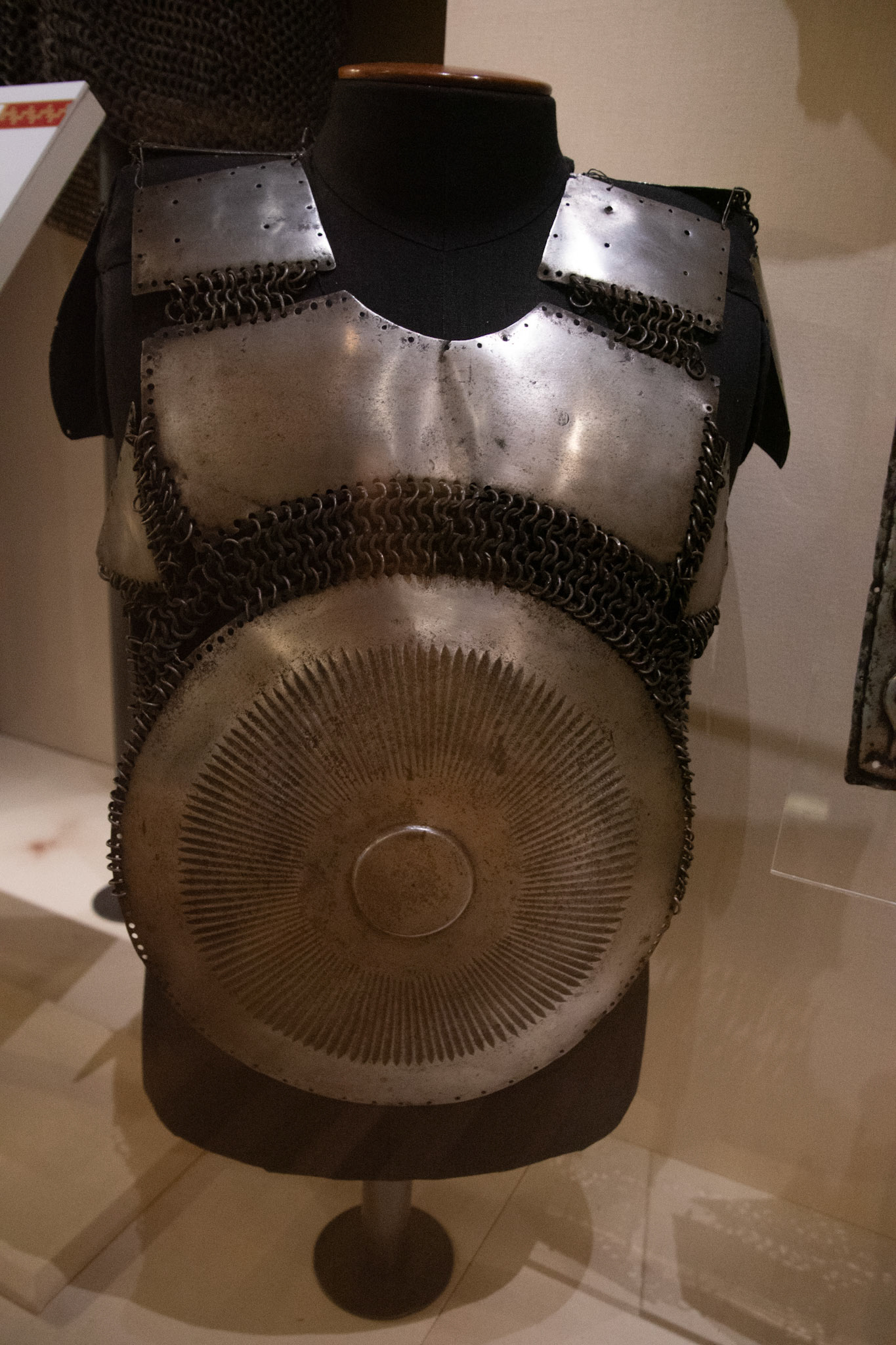
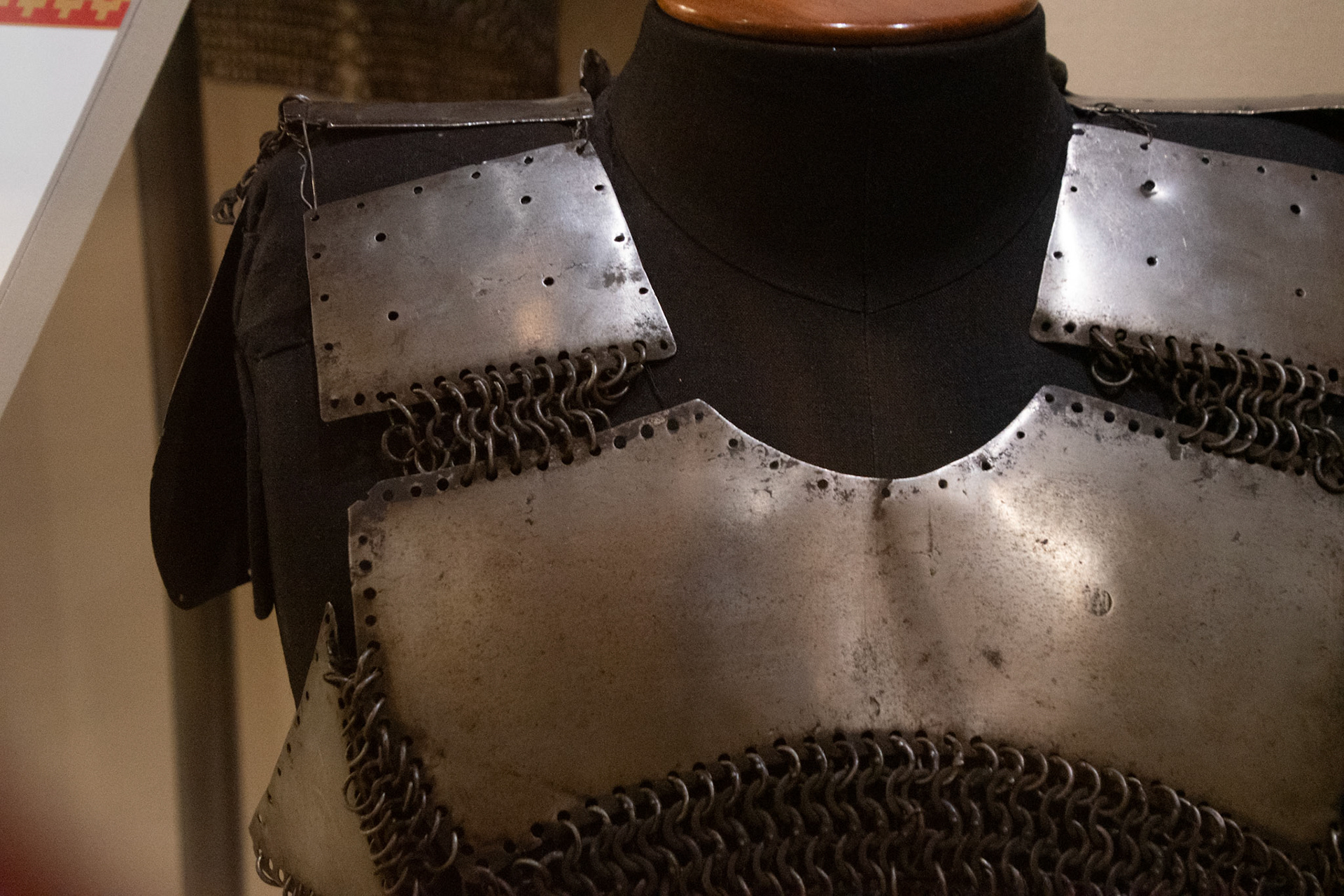
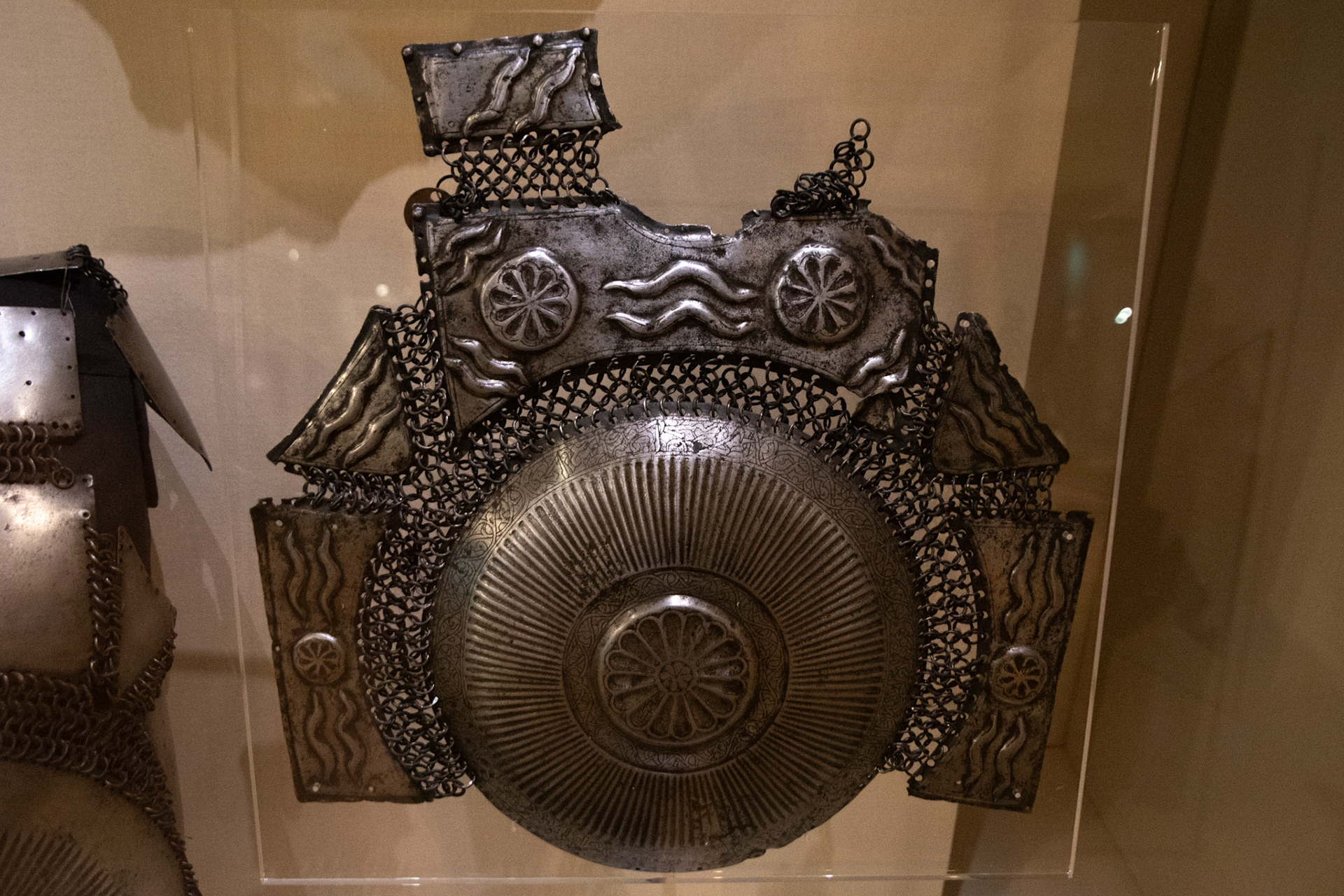

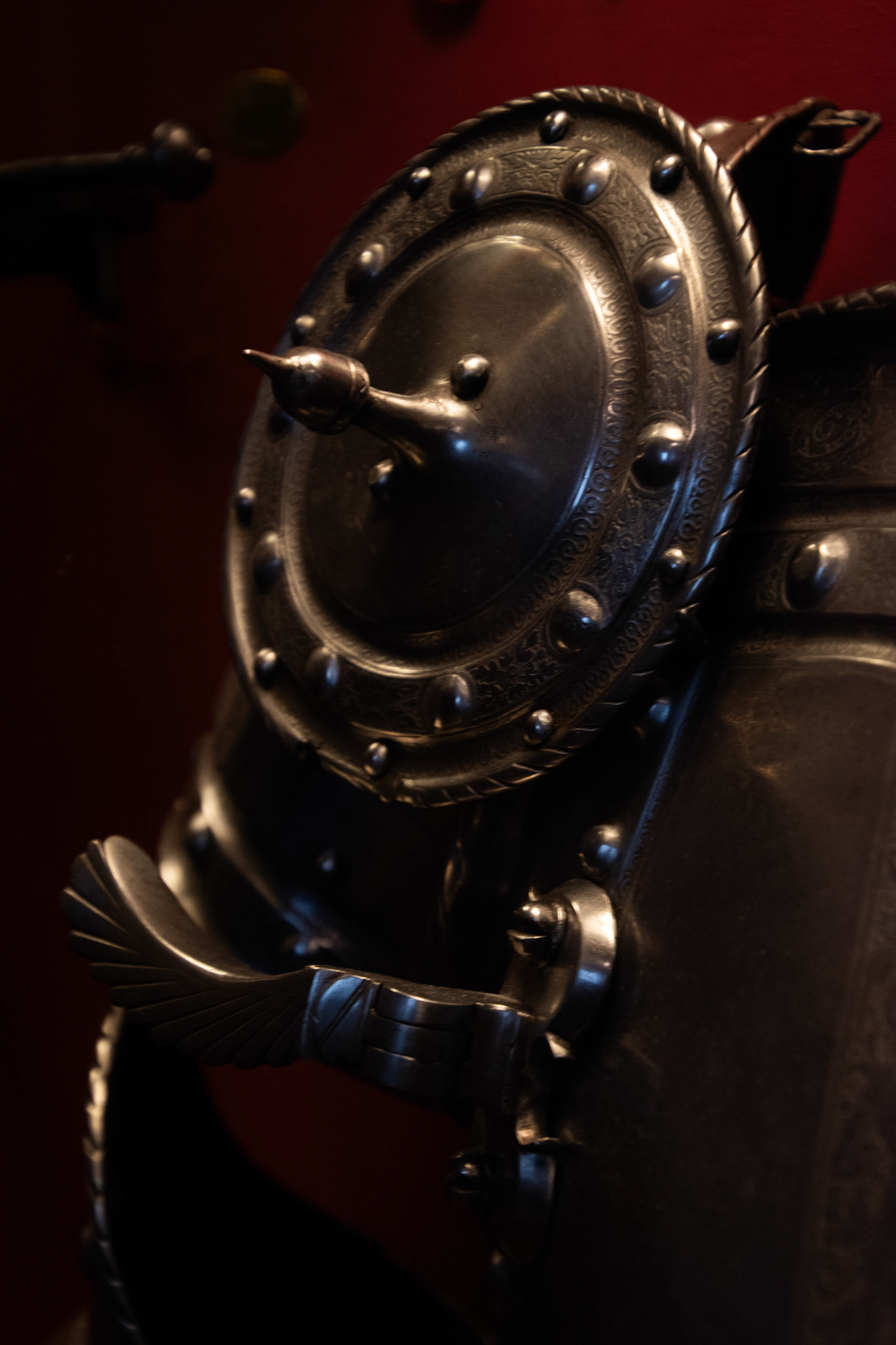
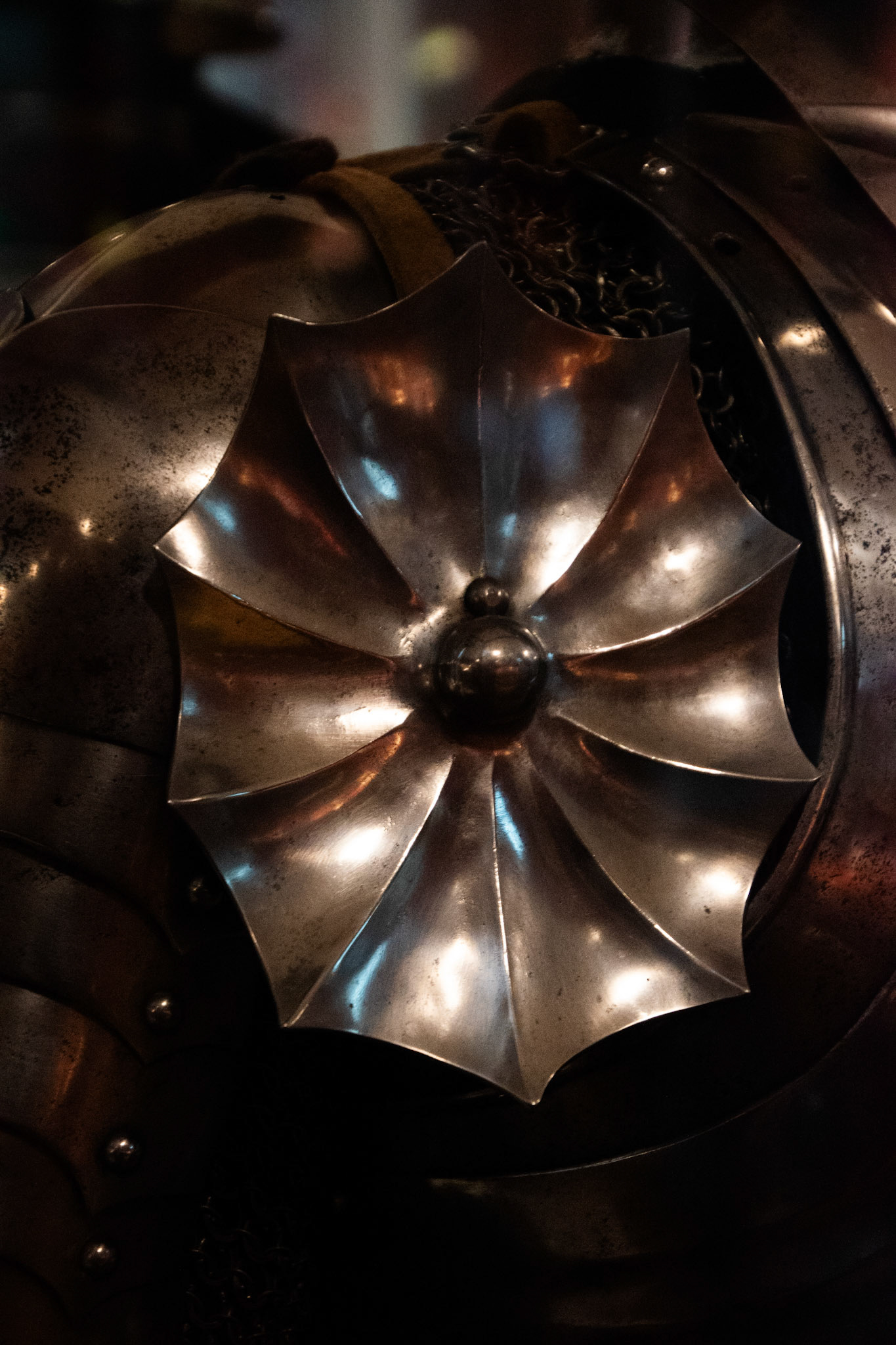
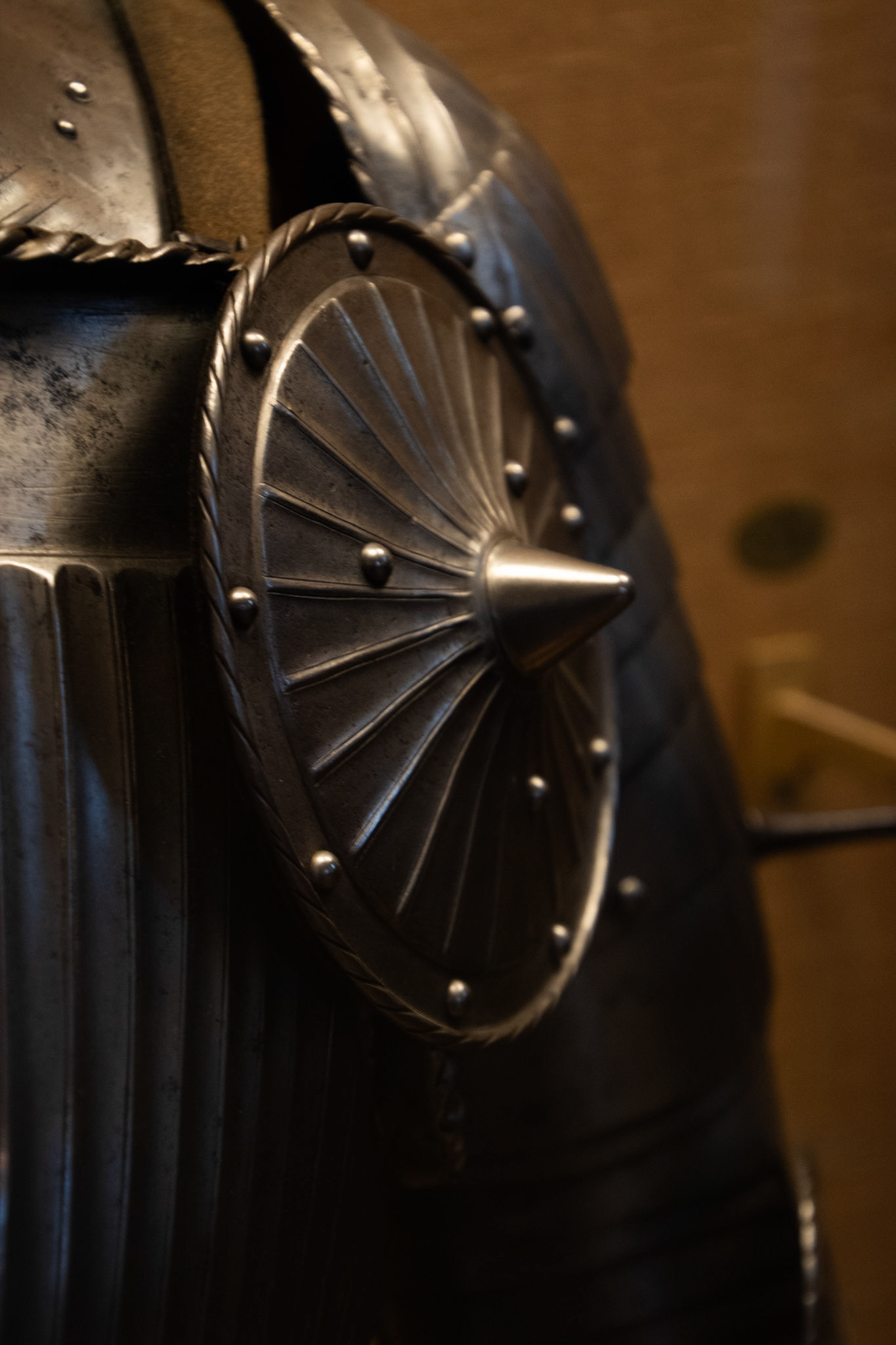
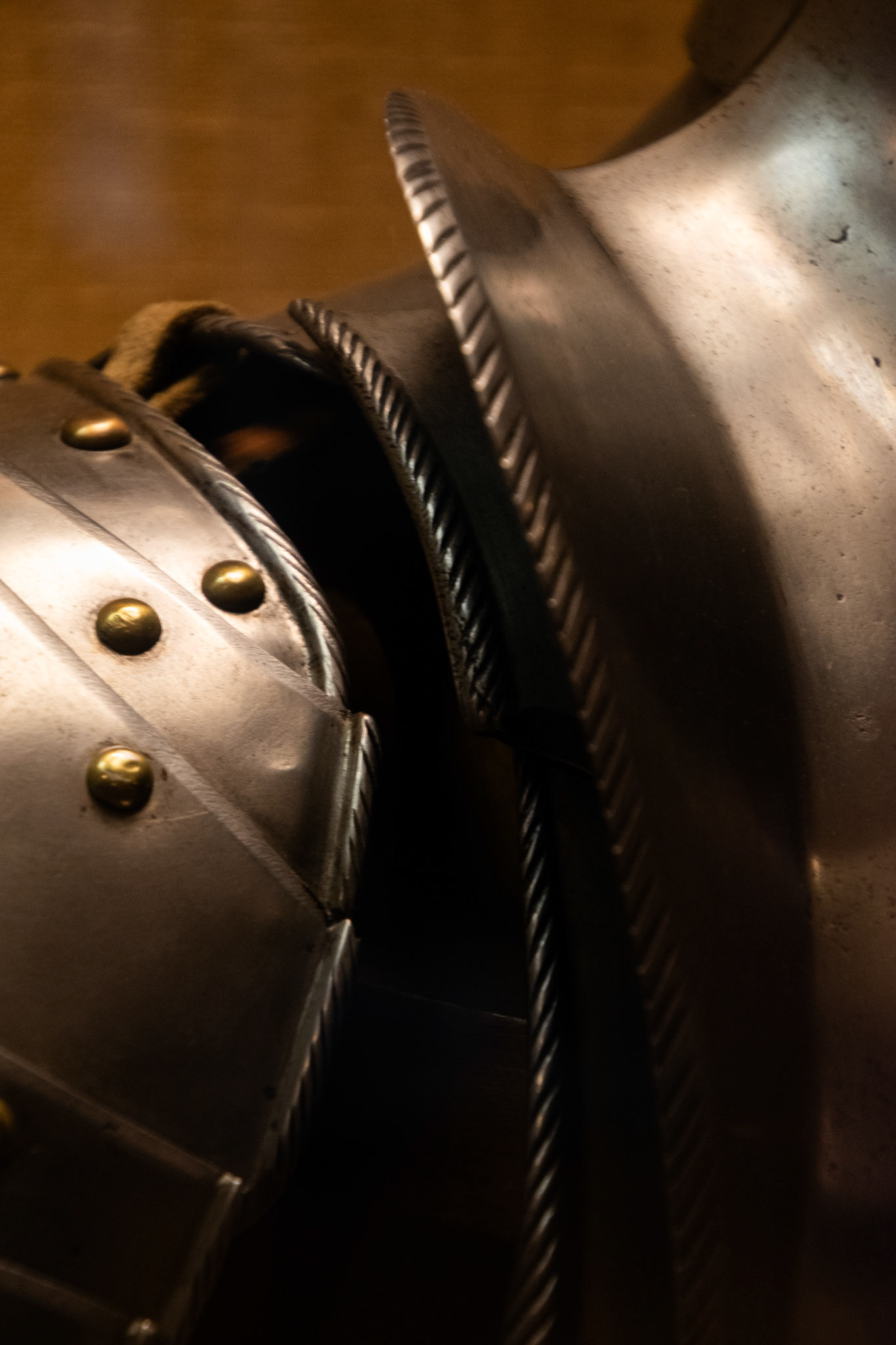
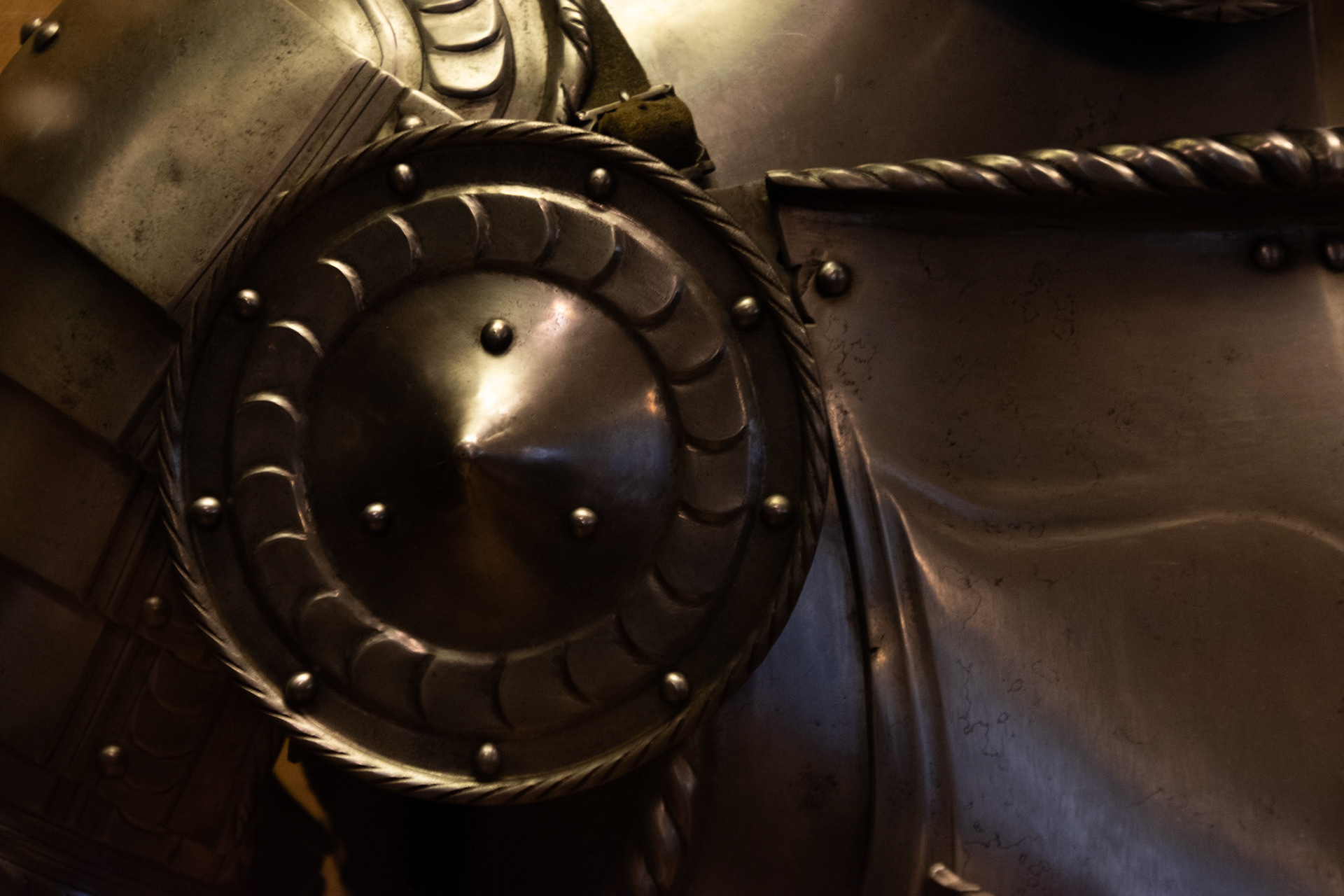

I was inspired by the stacking of sheet steel and varying textures and details that made up the torso section. All these different elements combining to create a layered impenetrable shield of defence.
Examples of Barding

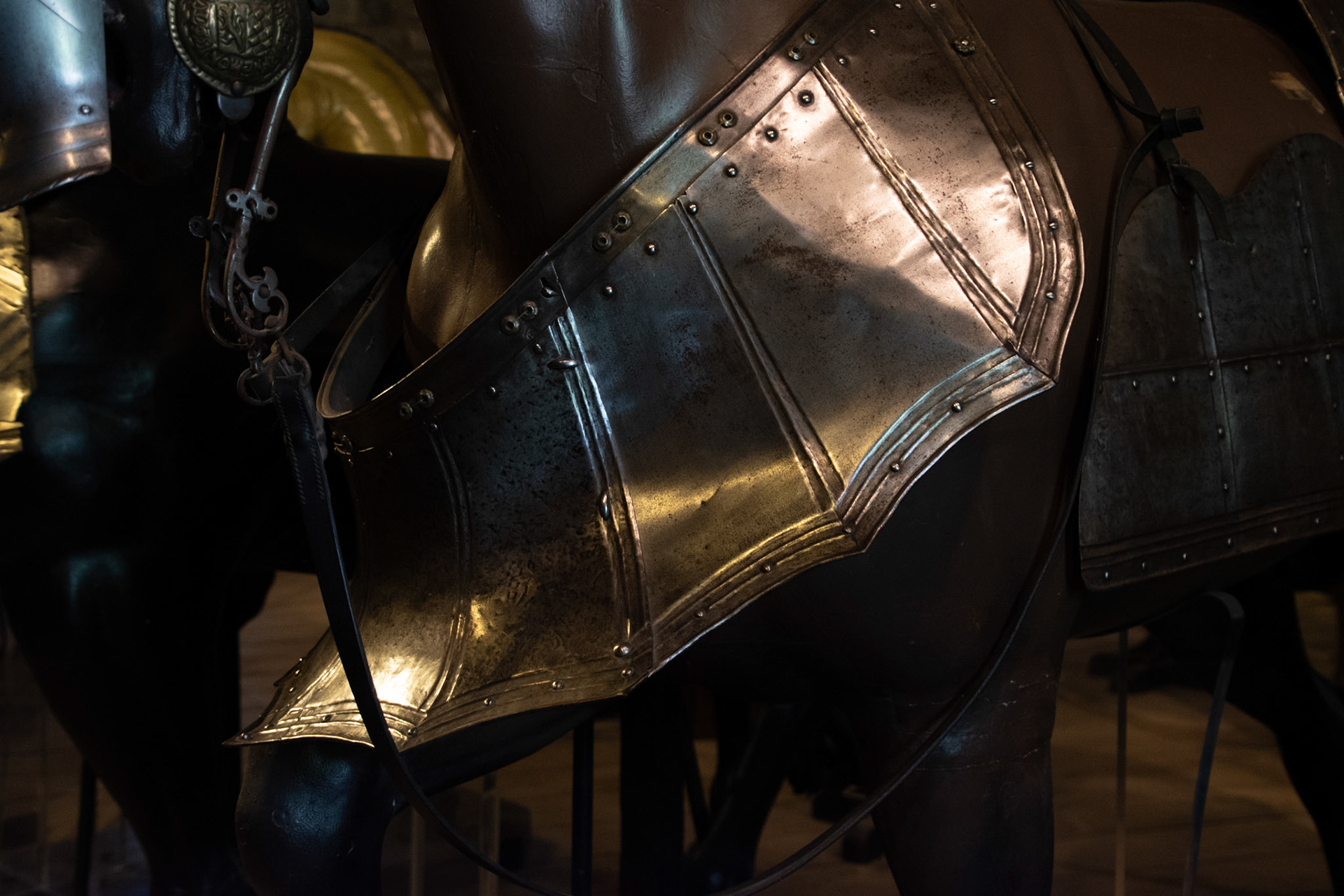
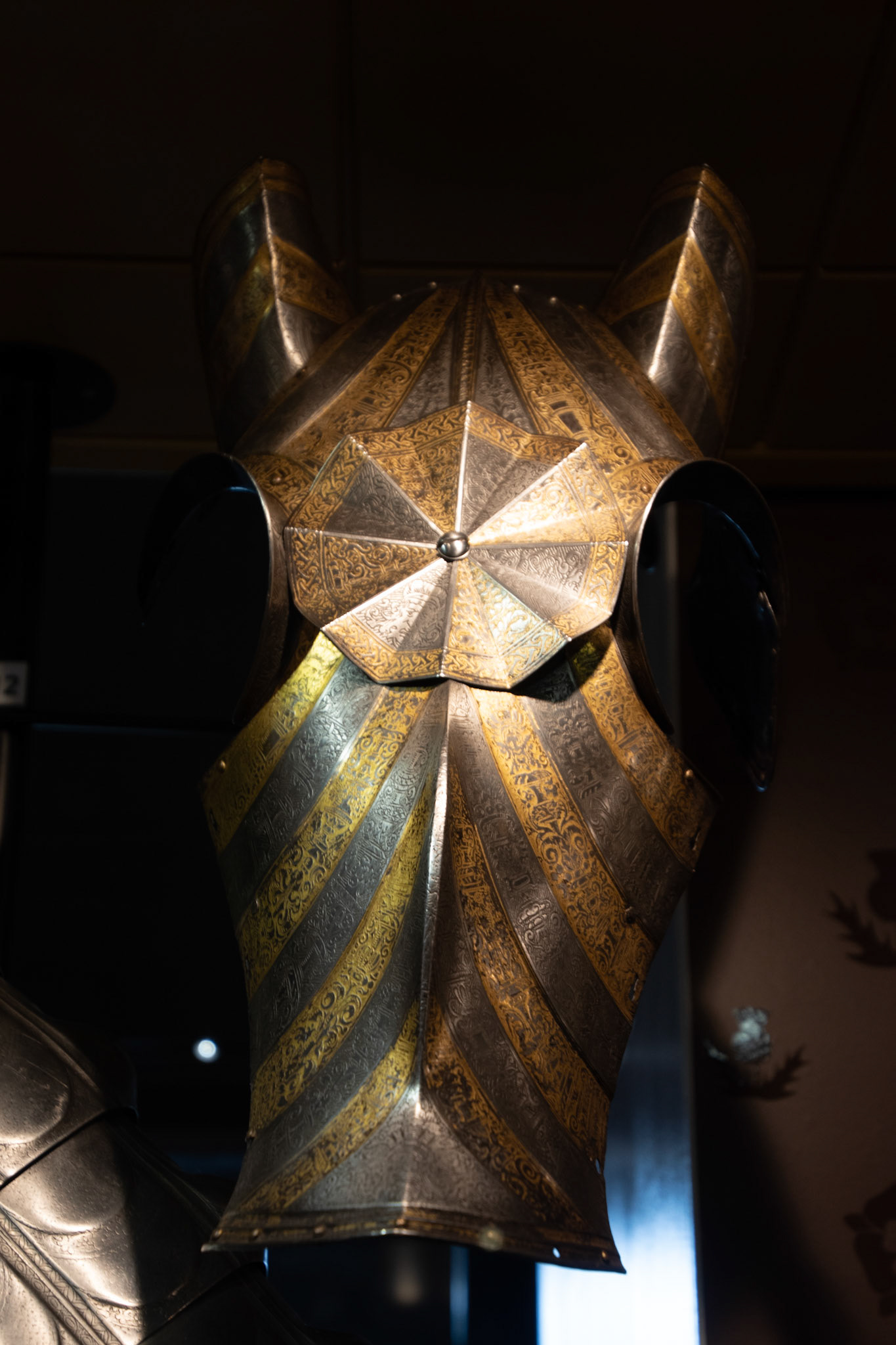

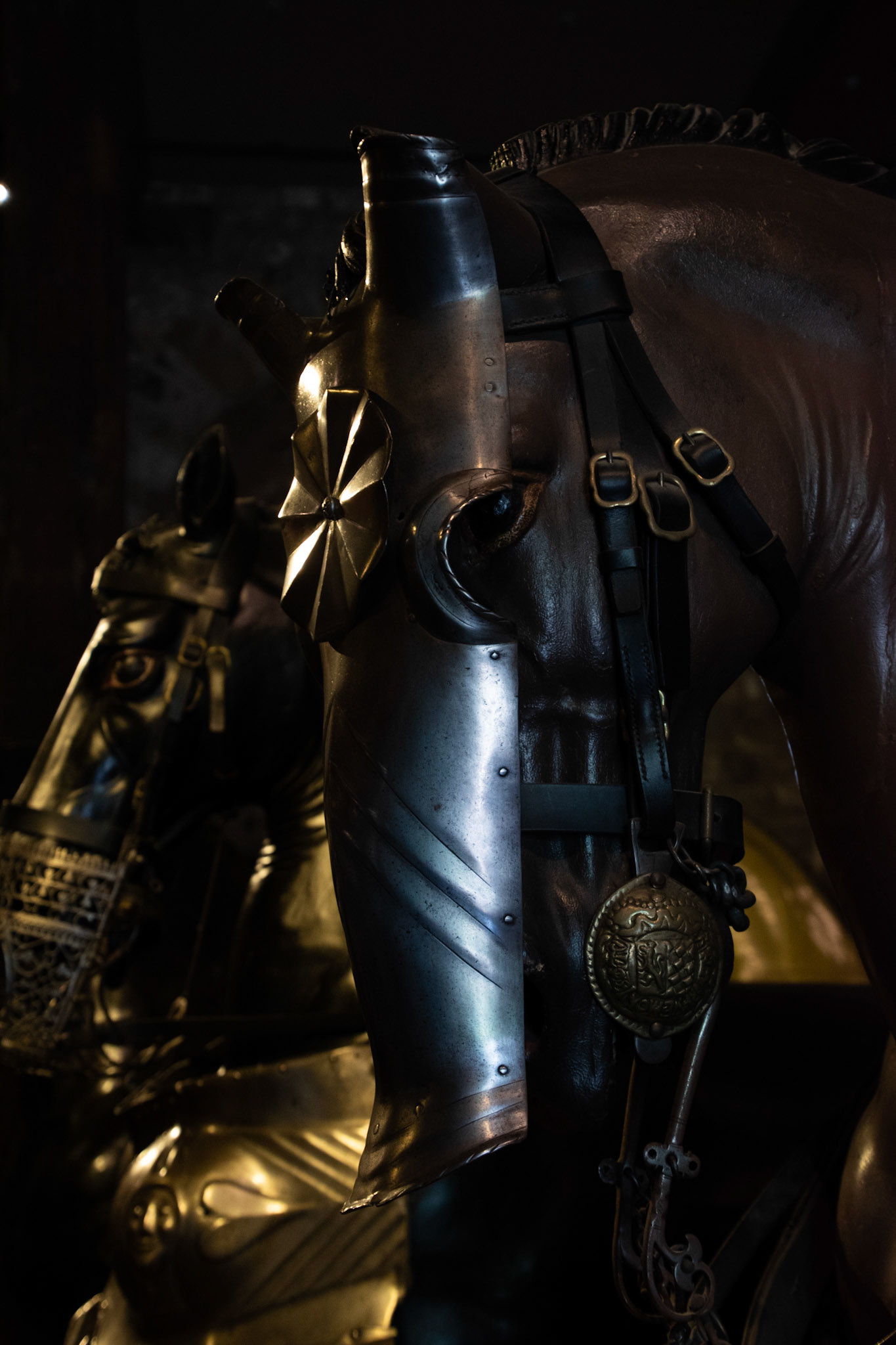
Pictures taken at the Tower of London
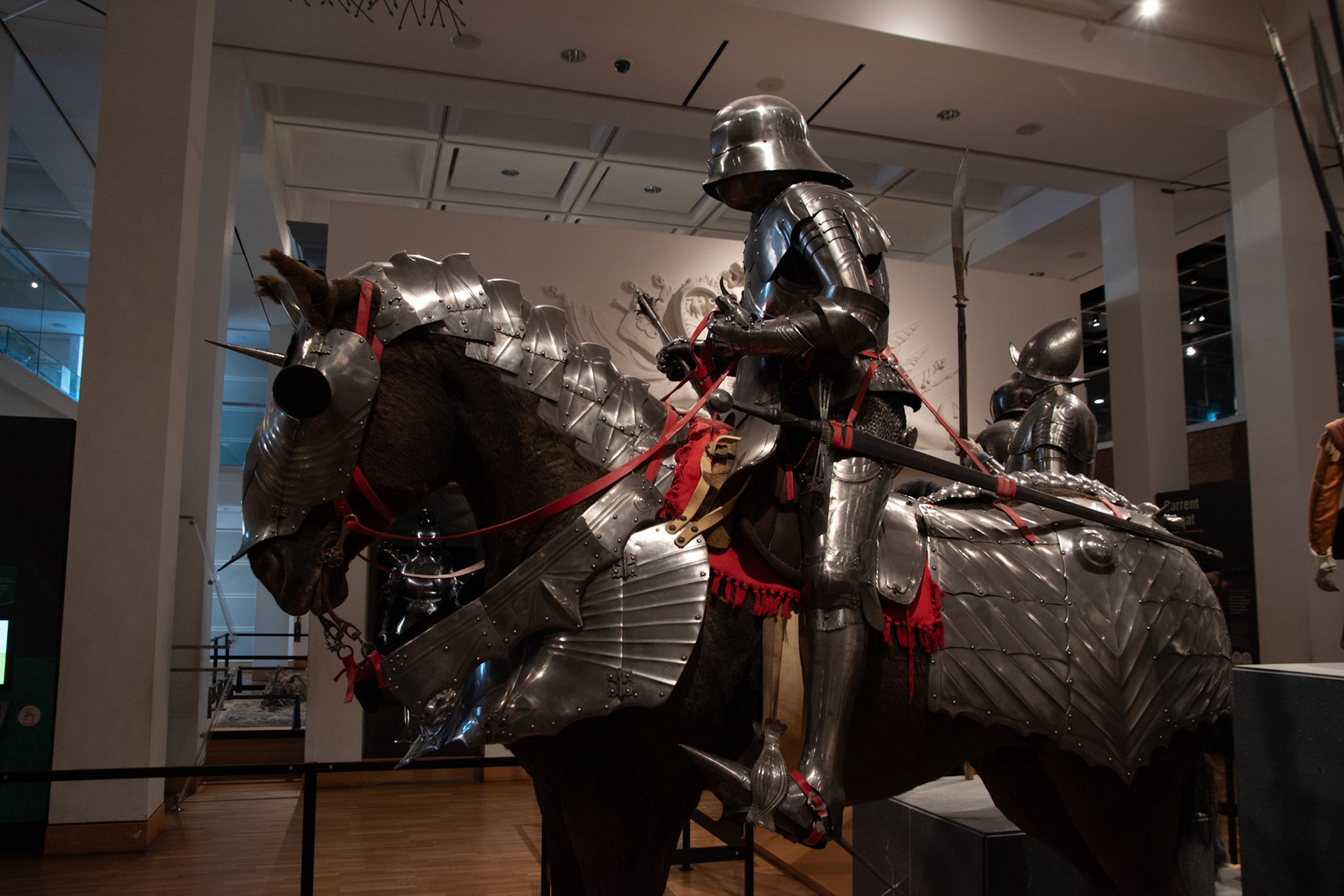
Austrian (Innsbruck) and Germanic, probably for Waldemar VI the Prince of Anhalt-Köthen, late 15th century

Austrian (Innsbruck) and Germanic, probably for Waldemar VI the Prince of Anhalt-Köthen, late 15th century
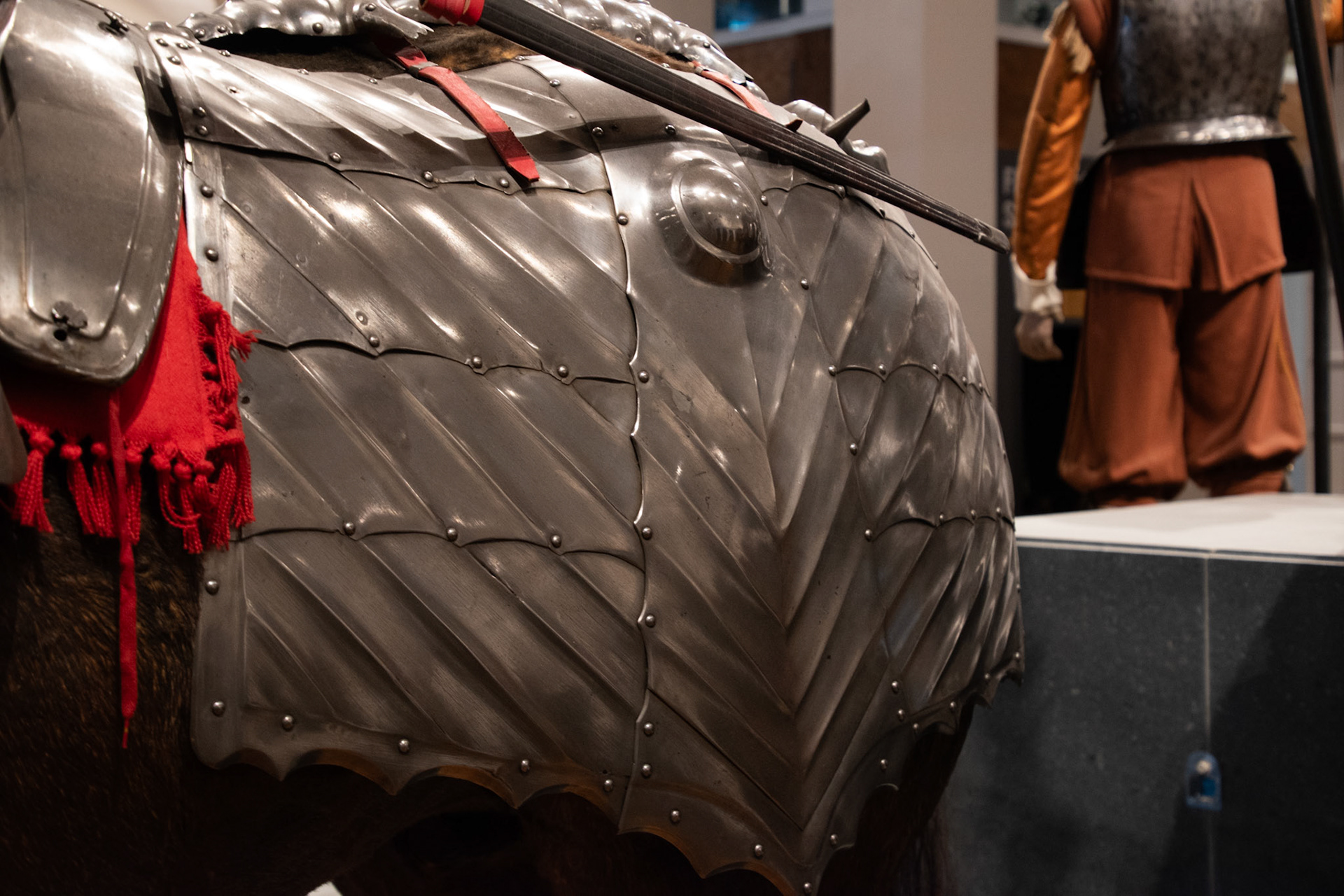
Austrian (Innsbruck) and Germanic, probably for Waldemar VI the Prince of Anhalt-Köthen, late 15th century

Austrian (Innsbruck) and Germanic, probably for Waldemar VI the Prince of Anhalt-Köthen, late 15th century

Indian, 15th-18th century
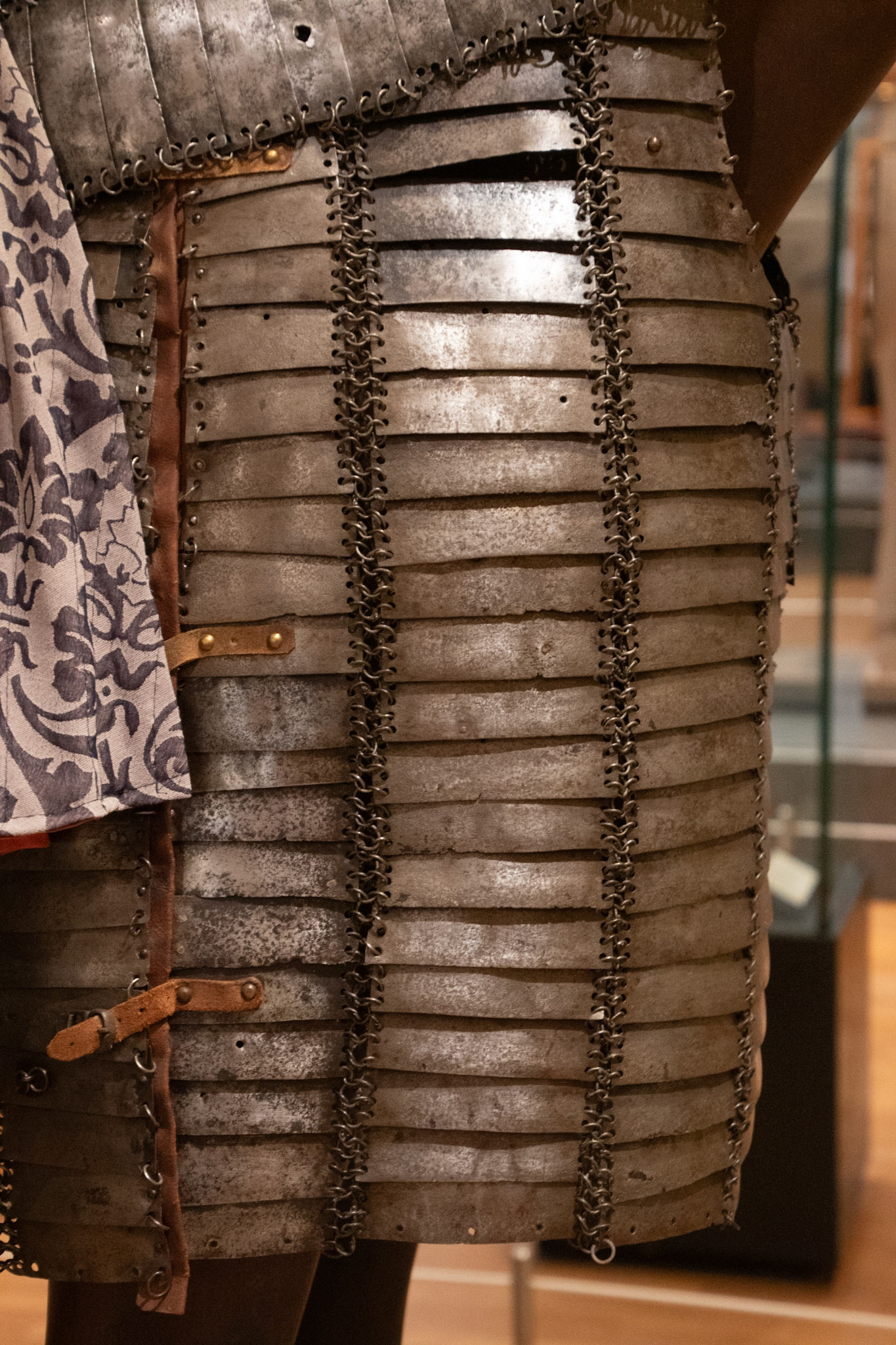
Indian, 15th-18th century
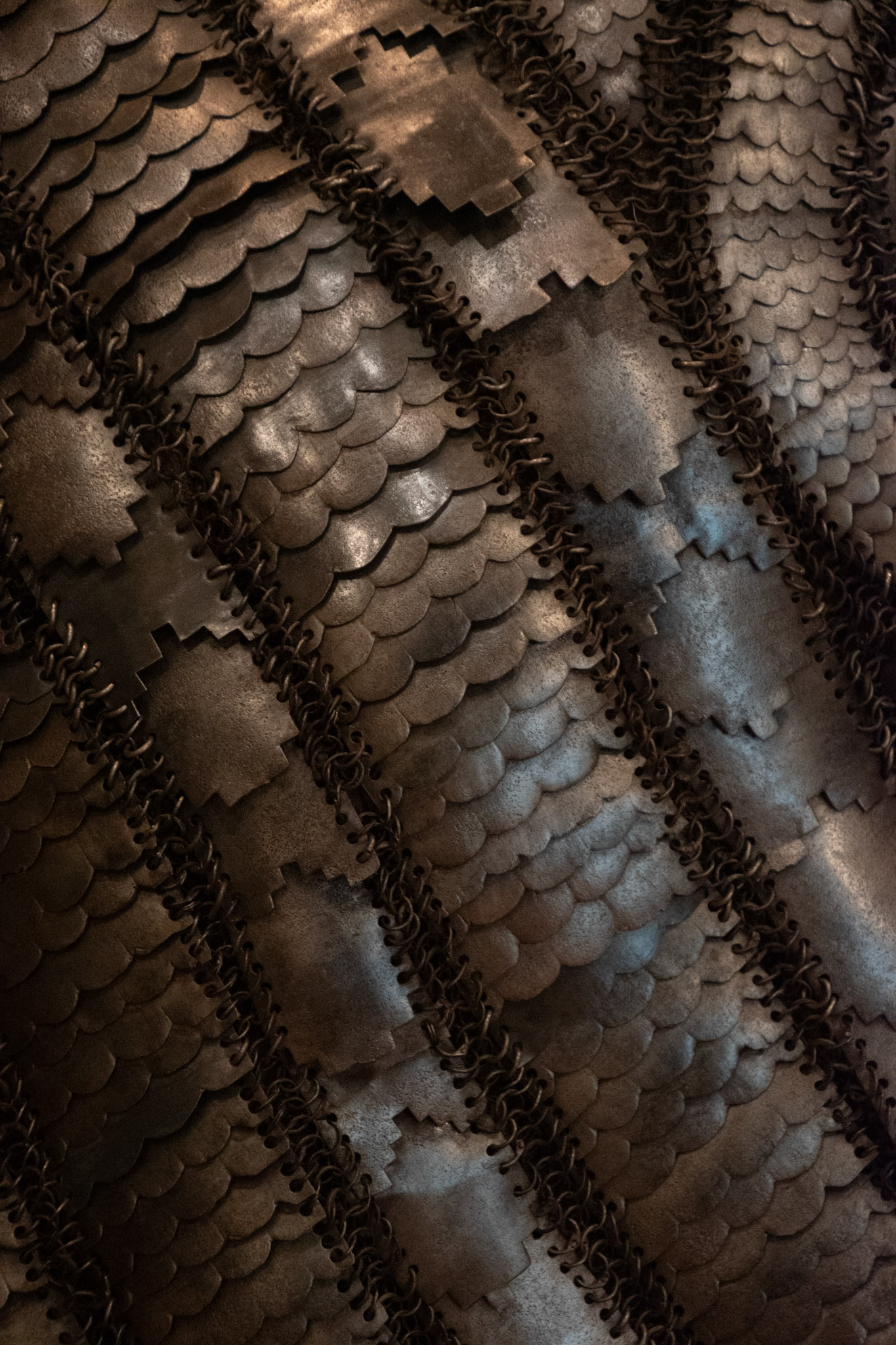
Indian, 15th-18th century
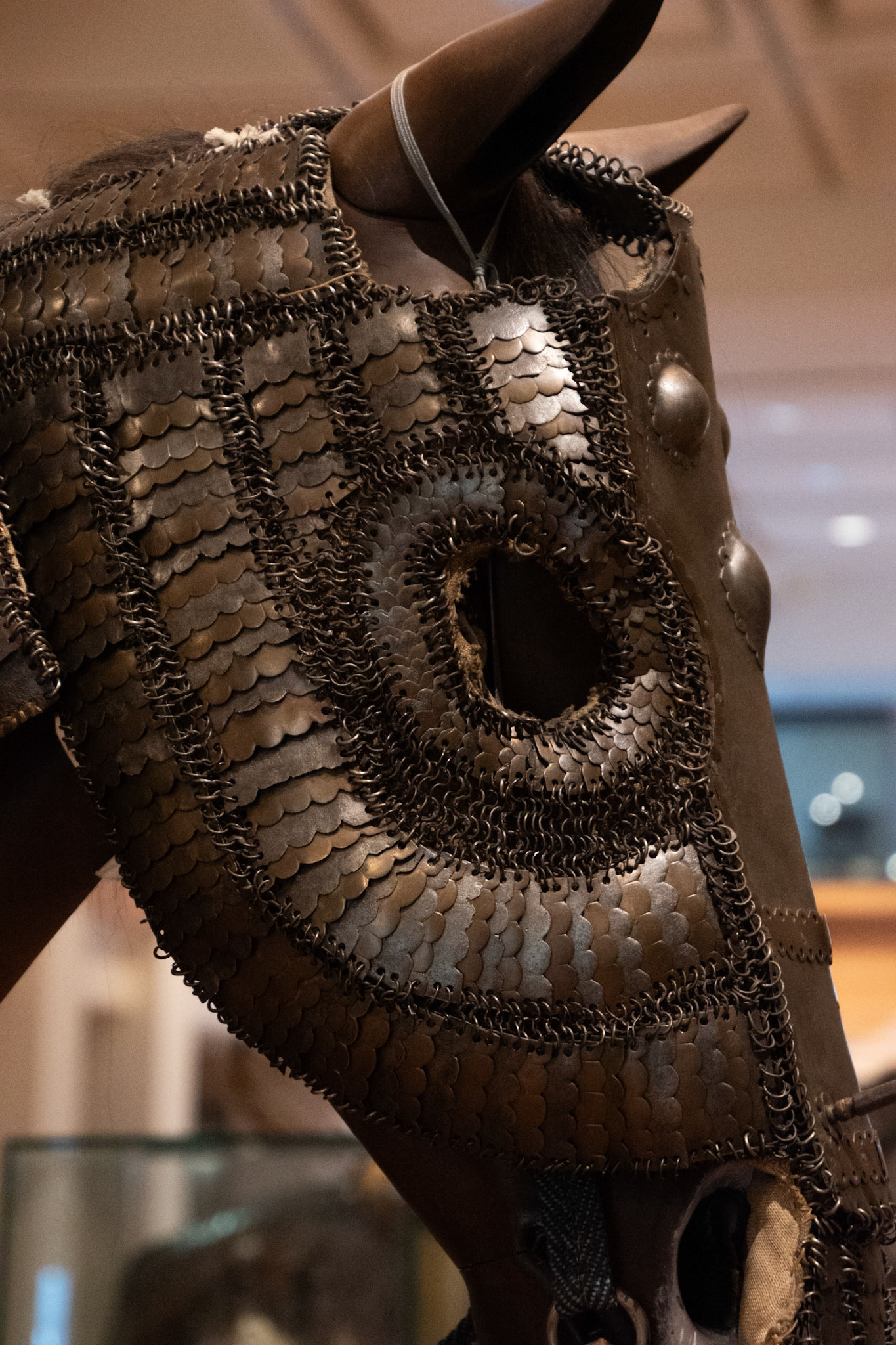
Indian, 15th-18th century
Pictures taken at Royal Armoires Leeds

Germanic, Landshut, made by Ulrich Rämbs, 1485, https://wallacelive.wallacecollection.org/eMP/eMuseumPlus?service=direct/1/ResultListView/result.t1.collection_list.$TspTitleLink.link&sp=10&sp=Scollection&sp=SfieldValue&sp=0&sp=54&sp=2&sp=SdetailList&sp=0&sp=Sdetail&sp=2&sp=F&sp=T&sp=0
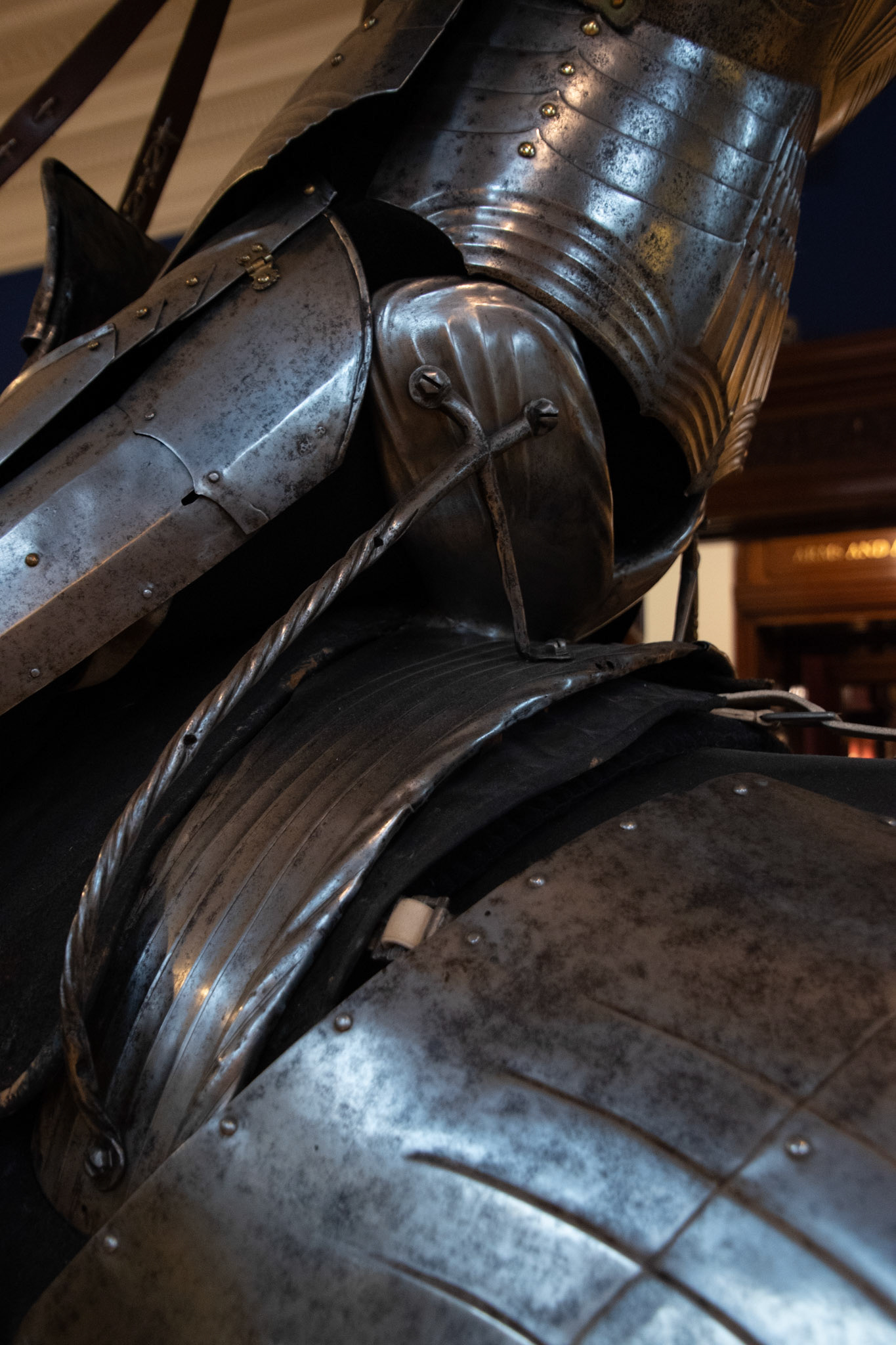
Germanic, Landshut, made by Ulrich Rämbs, 1485, https://wallacelive.wallacecollection.org/eMP/eMuseumPlus?service=direct/1/ResultListView/result.t1.collection_list.$TspTitleLink.link&sp=10&sp=Scollection&sp=SfieldValue&sp=0&sp=54&sp=2&sp=SdetailList&sp=0&sp=Sdetail&sp=2&sp=F&sp=T&sp=0

Germanic, Landshut, made by Ulrich Rämbs, 1485, https://wallacelive.wallacecollection.org/eMP/eMuseumPlus?service=direct/1/ResultListView/result.t1.collection_list.$TspTitleLink.link&sp=10&sp=Scollection&sp=SfieldValue&sp=0&sp=54&sp=2&sp=SdetailList&sp=0&sp=Sdetail&sp=2&sp=F&sp=T&sp=0
Photos taken at Wallace Collection
I was drawn to the Branding due to the use of riveting multiple raised sheets to form a larger structure. This also helps overcome the limitations of stretching a singular sheet in multiple directions. This is one solution to my previous struggles in last year’s work where I failed to raise sheet into complex shapes.
I was also drawn to the combination of plate and chain to form a mix mail pattern. I think that this could be a bridge between rigid and flexible armour.
Examples of War Elephant

Indian, 16th-17th century

Indian, 16th-17th century
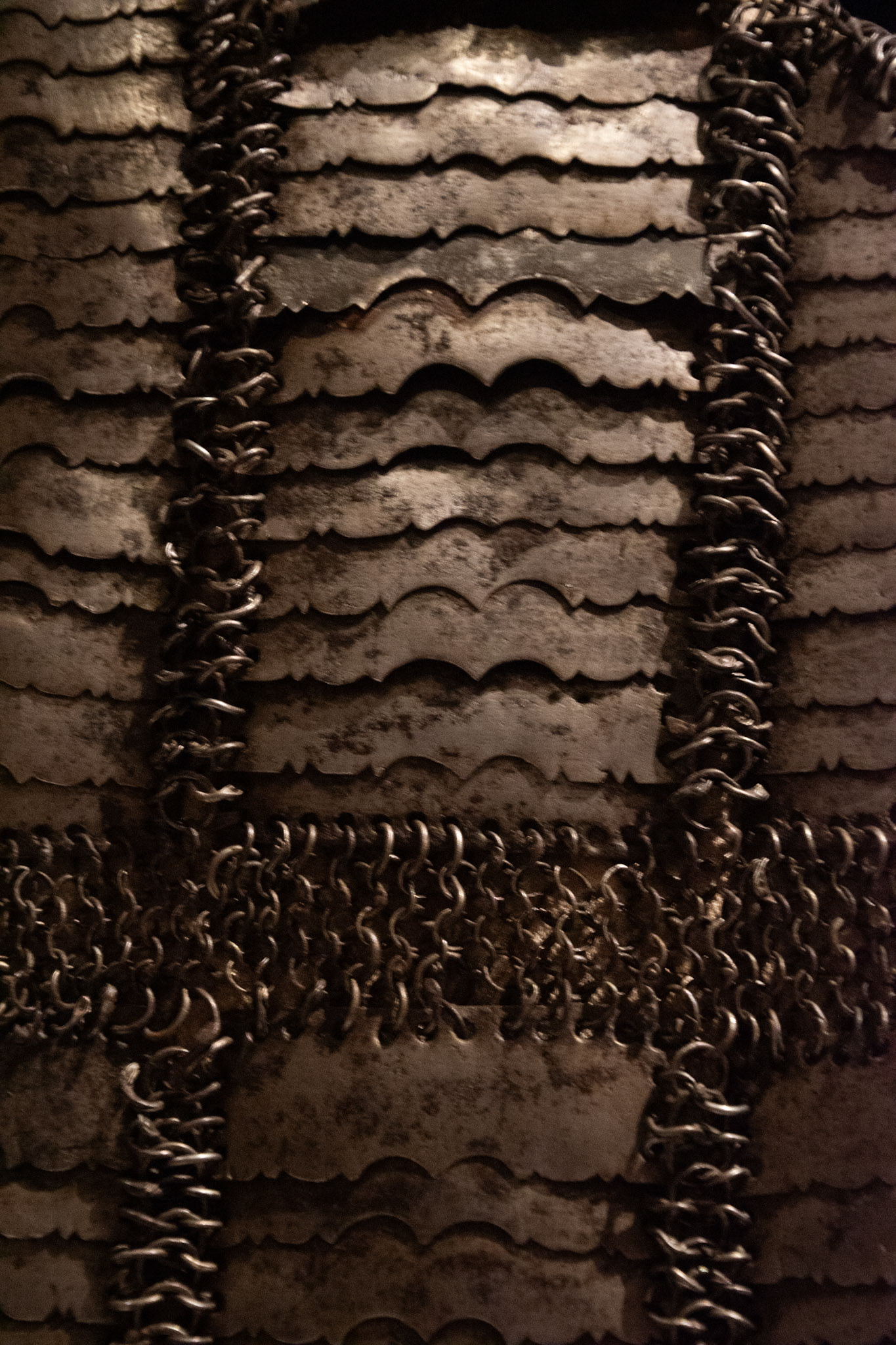
Indian, 16th-17th century
Pictures taken at Royal Armoires Leeds
Similarly to the mix plate and chain mail of the Branding I was drawn to the way the pattern was formed through differing directions and shapes.
Examples of Mail

Germanic, Nuremberg, 15th century
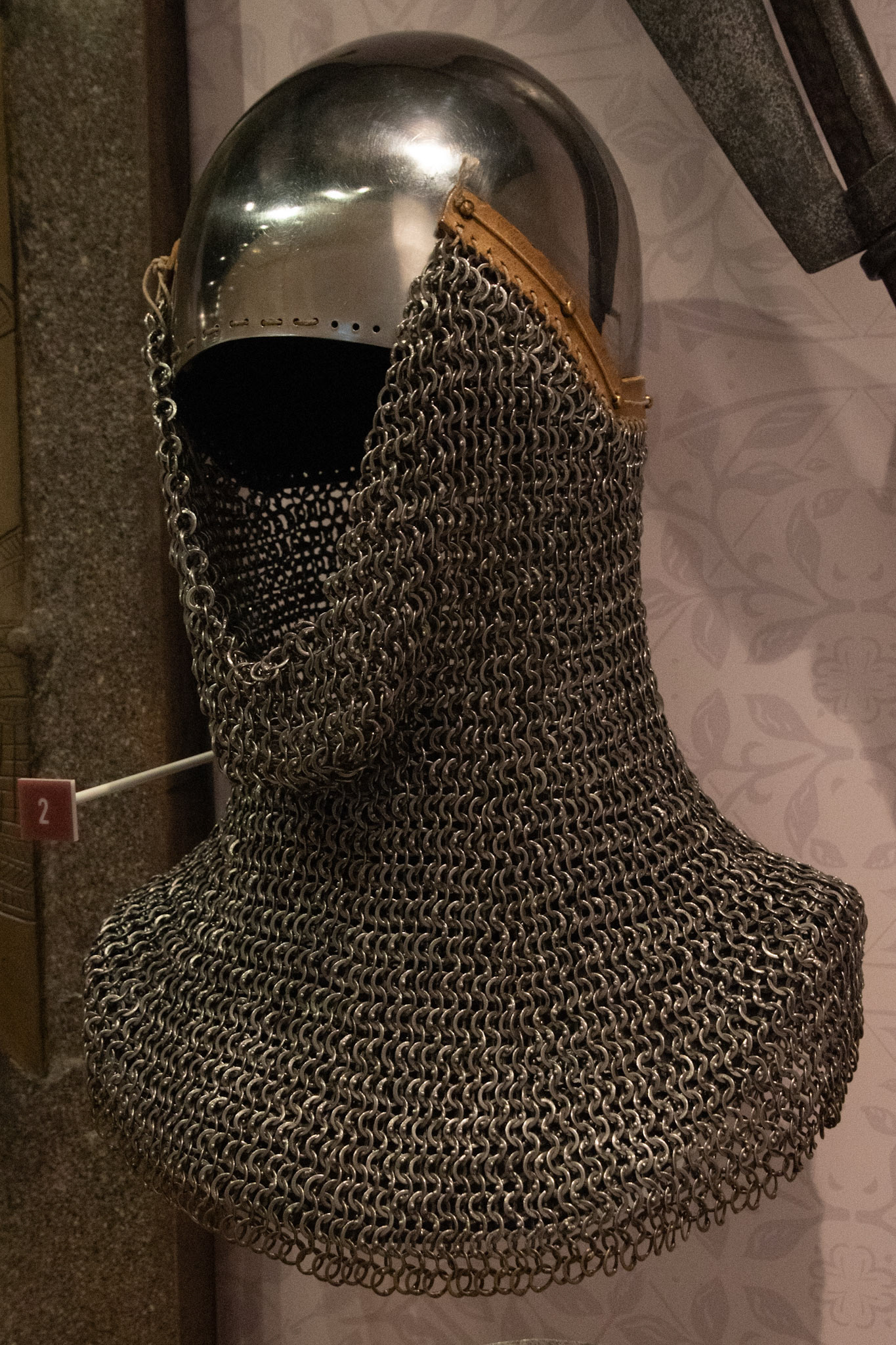
Probably Germanic, mid 14th century
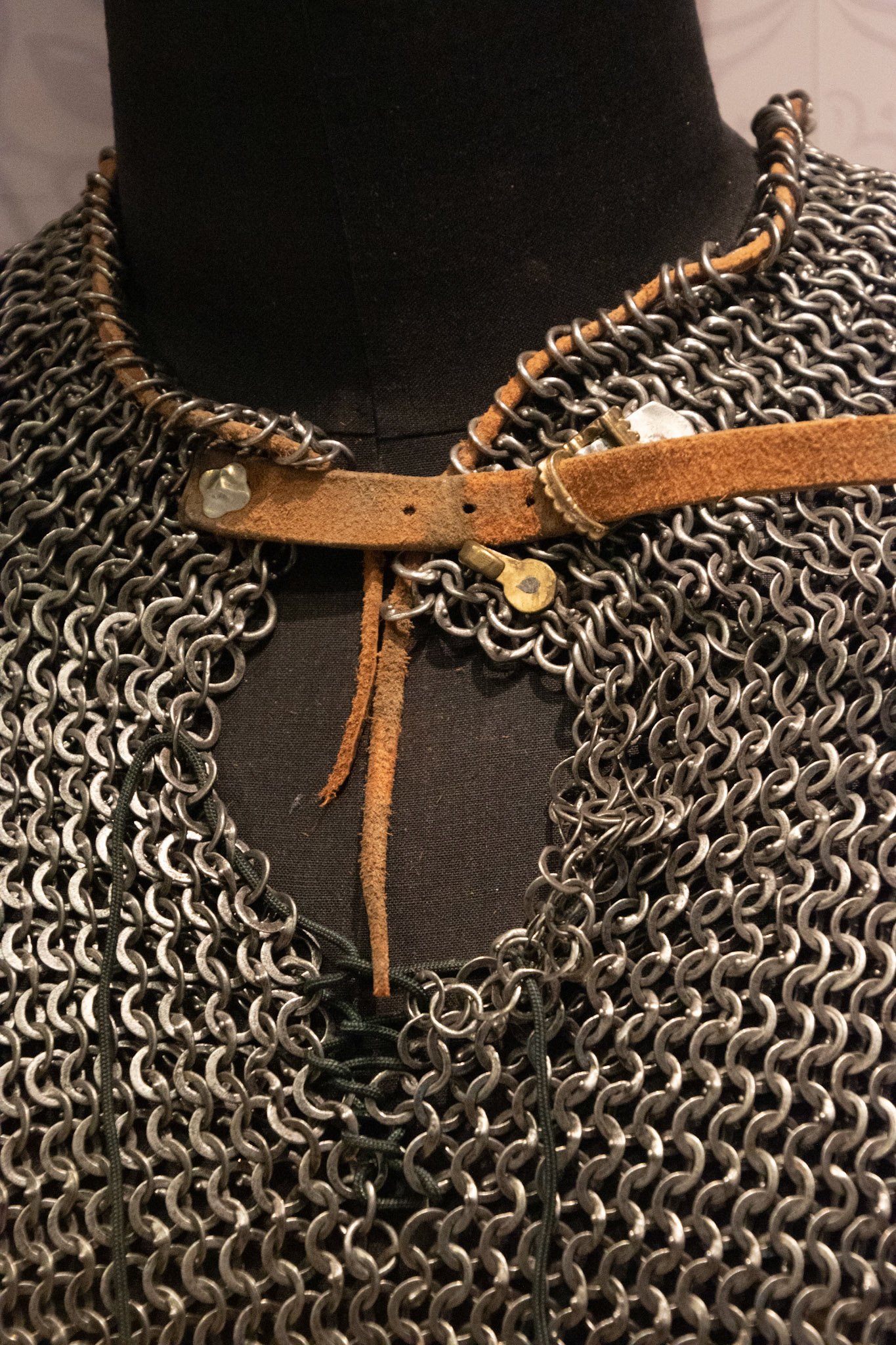
Probably Germanic, mid 14th century
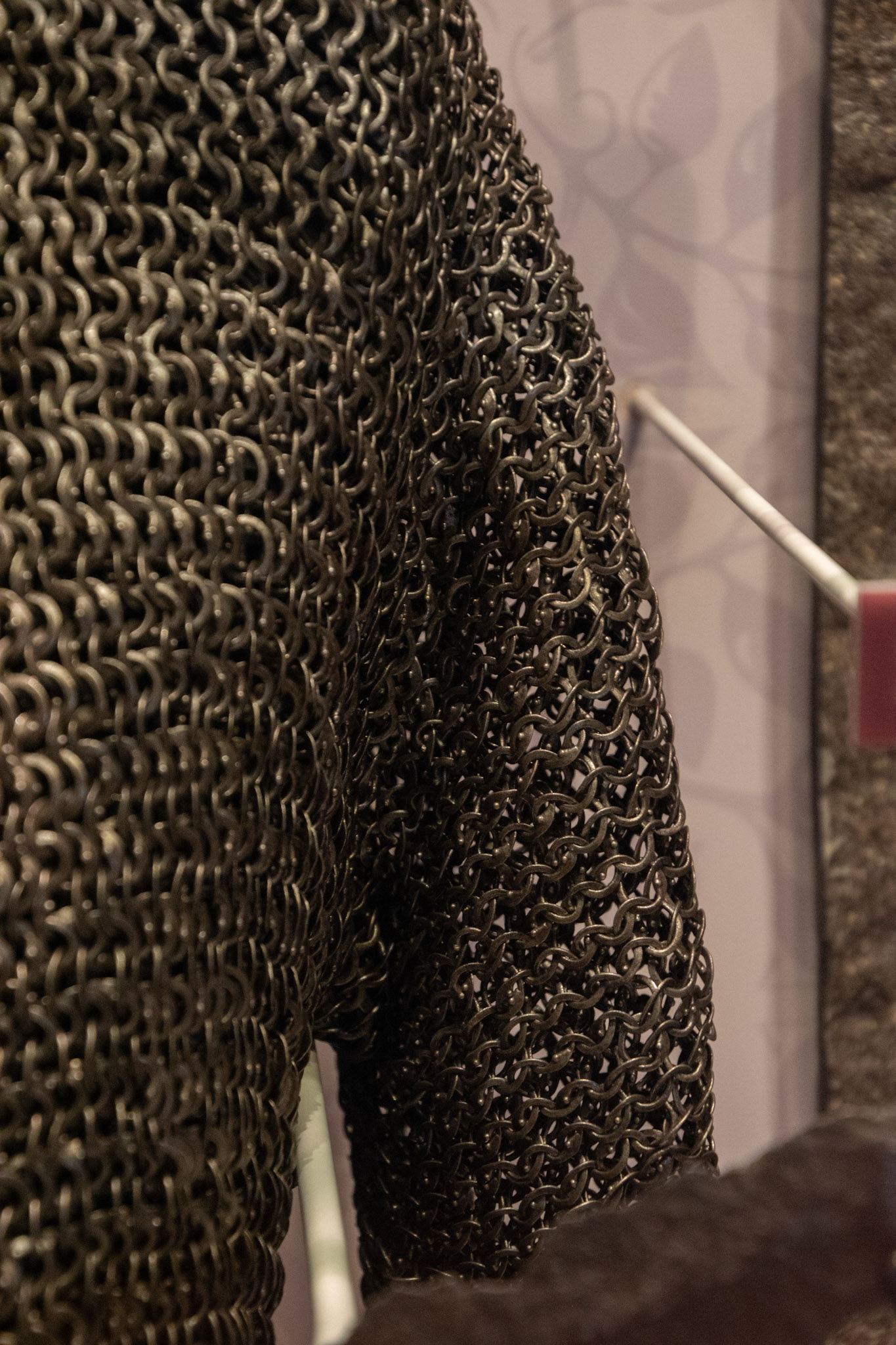
Germanic, Isernleon, early 15th century

Indian, 16th-18th century
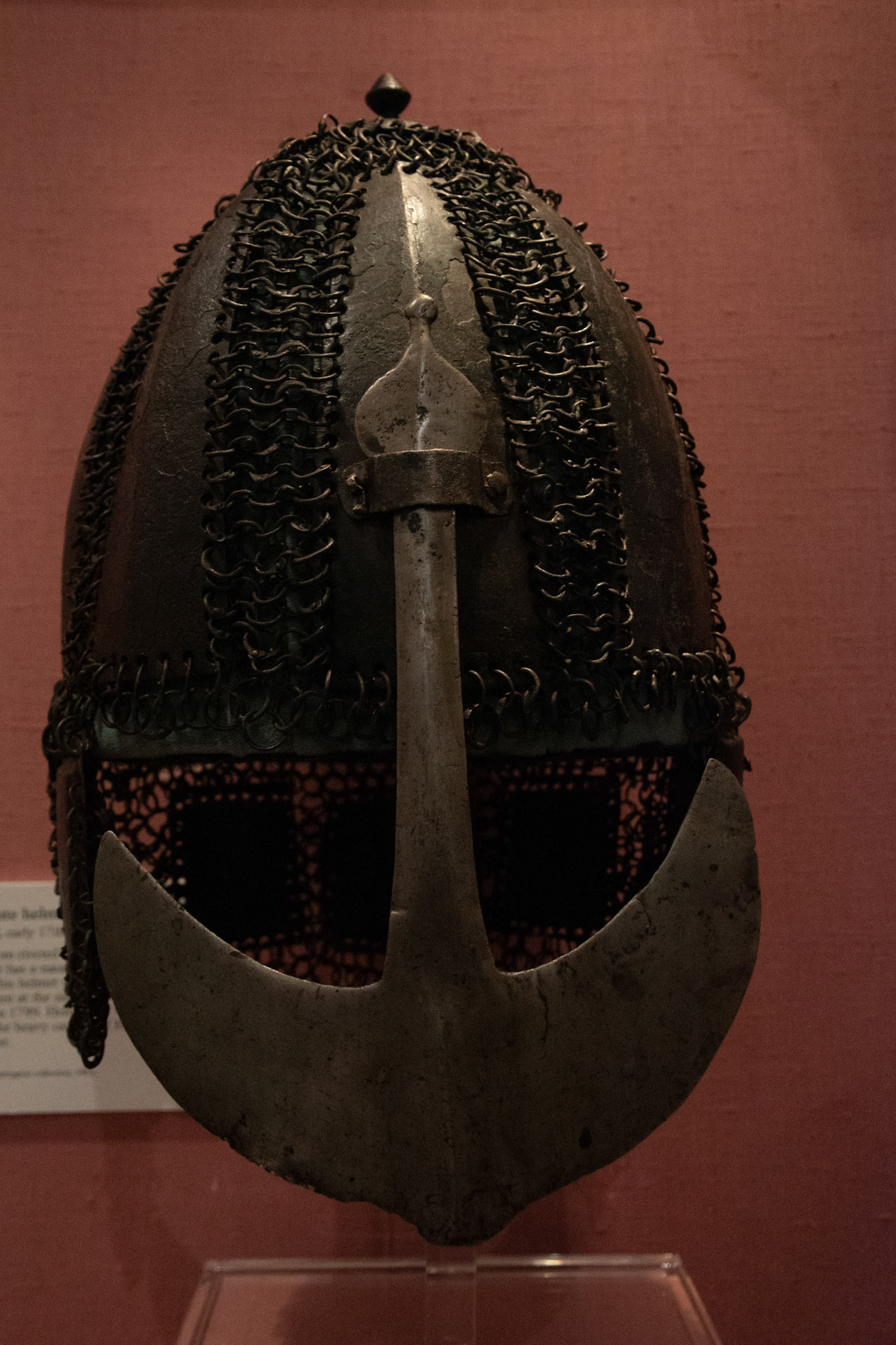
Indian, Mughal, early 17th century
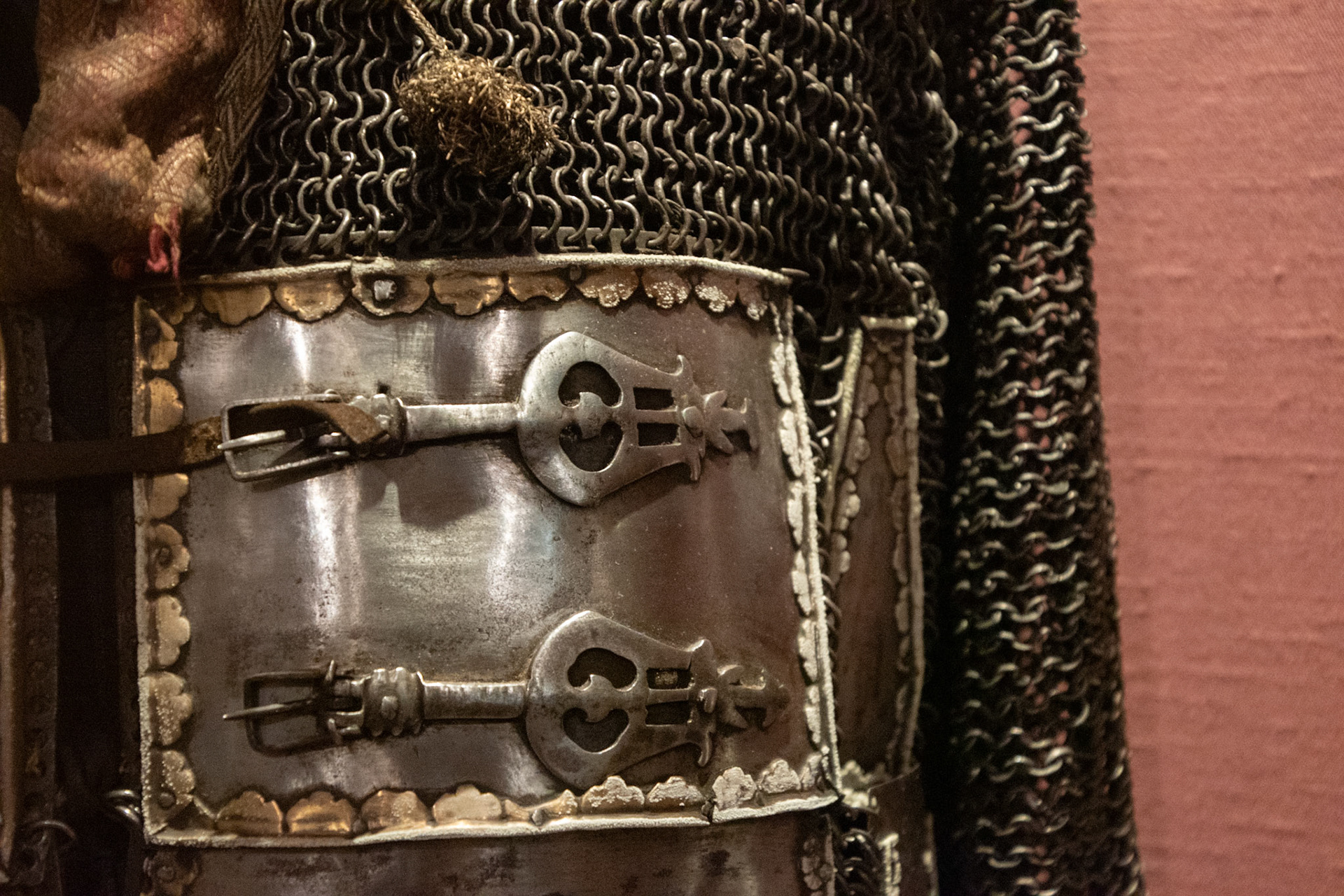
Indian, Mughal, early 17th century

Indian, Sind, 18th century
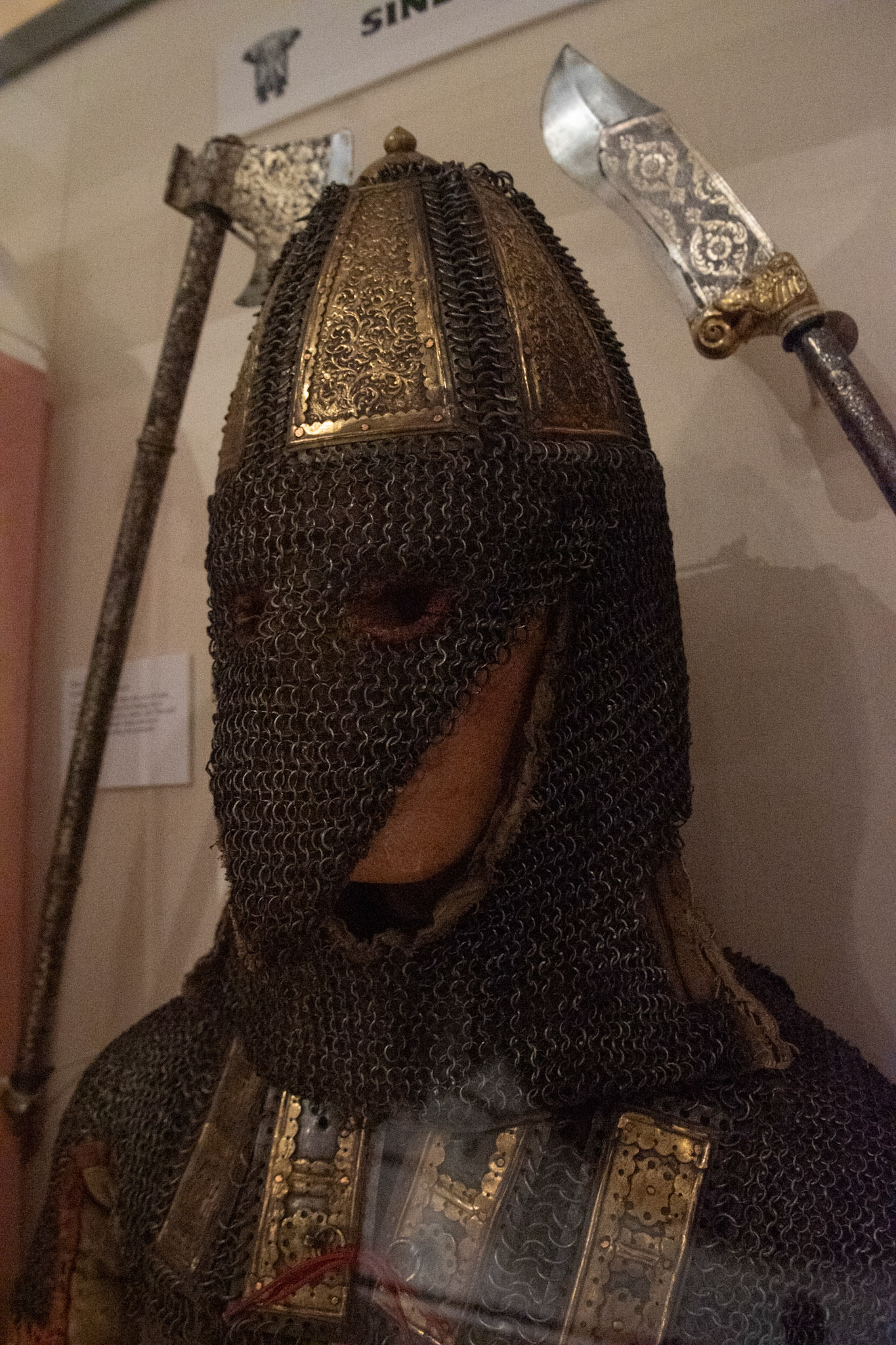
Indian, Sind, 18th century

Indian, Sind, 18th century

Indian, Rajasthan, 18th century
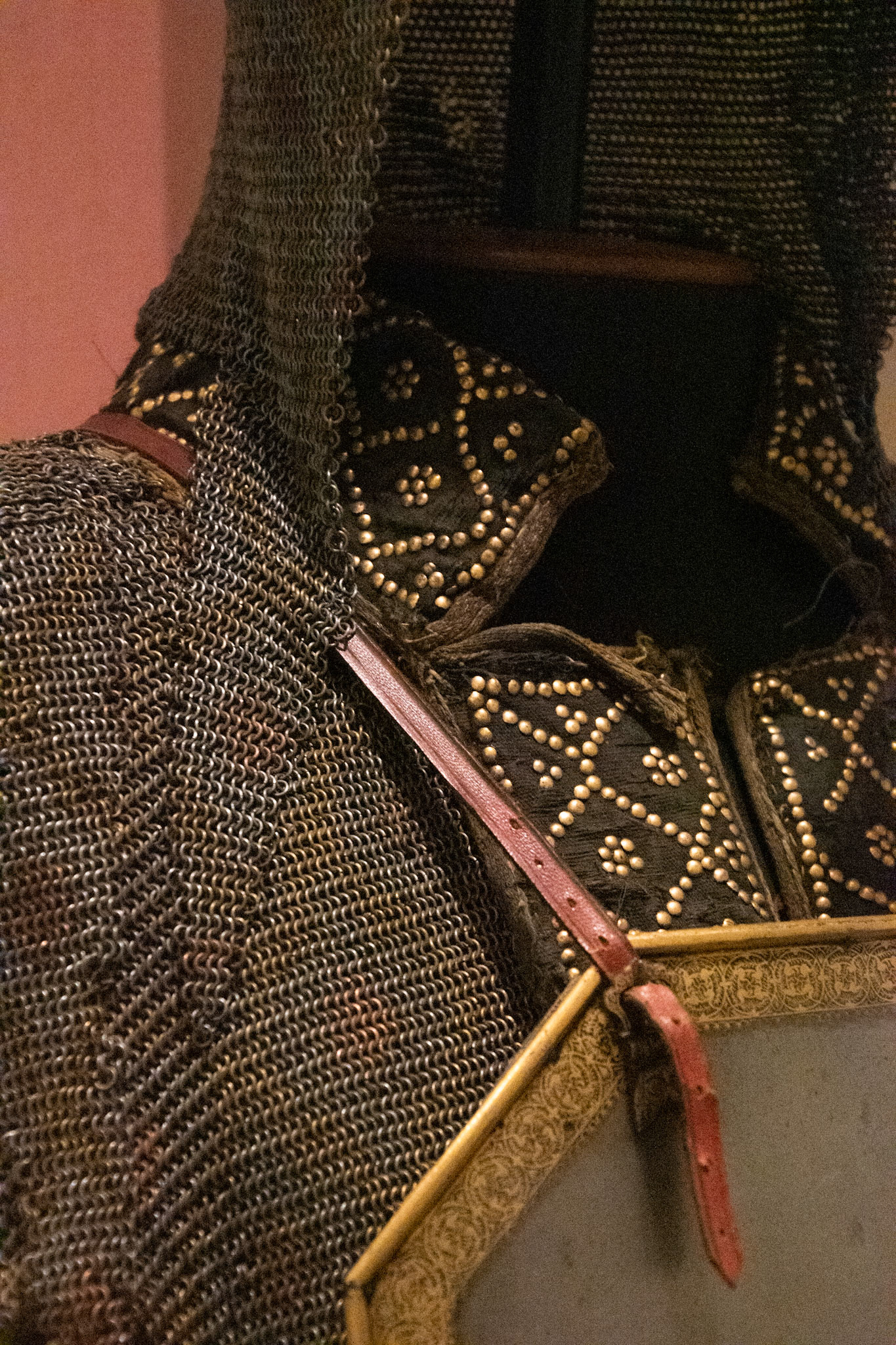
Indian, Rajasthan, 18th century


Pictures taken at Royal Armoires Leeds

Germanic, mid 15th century, https://wallacelive.wallacecollection.org/eMP/eMuseumPlus?service=direct/1/ResultListView/result.t1.collection_list.$TspTitleImageLink.link&sp=10&sp=Scollection&sp=SfieldValue&sp=0&sp=56&sp=2&sp=SdetailList&sp=0&sp=Sdetail&sp=2&sp=F&sp=T&sp=0
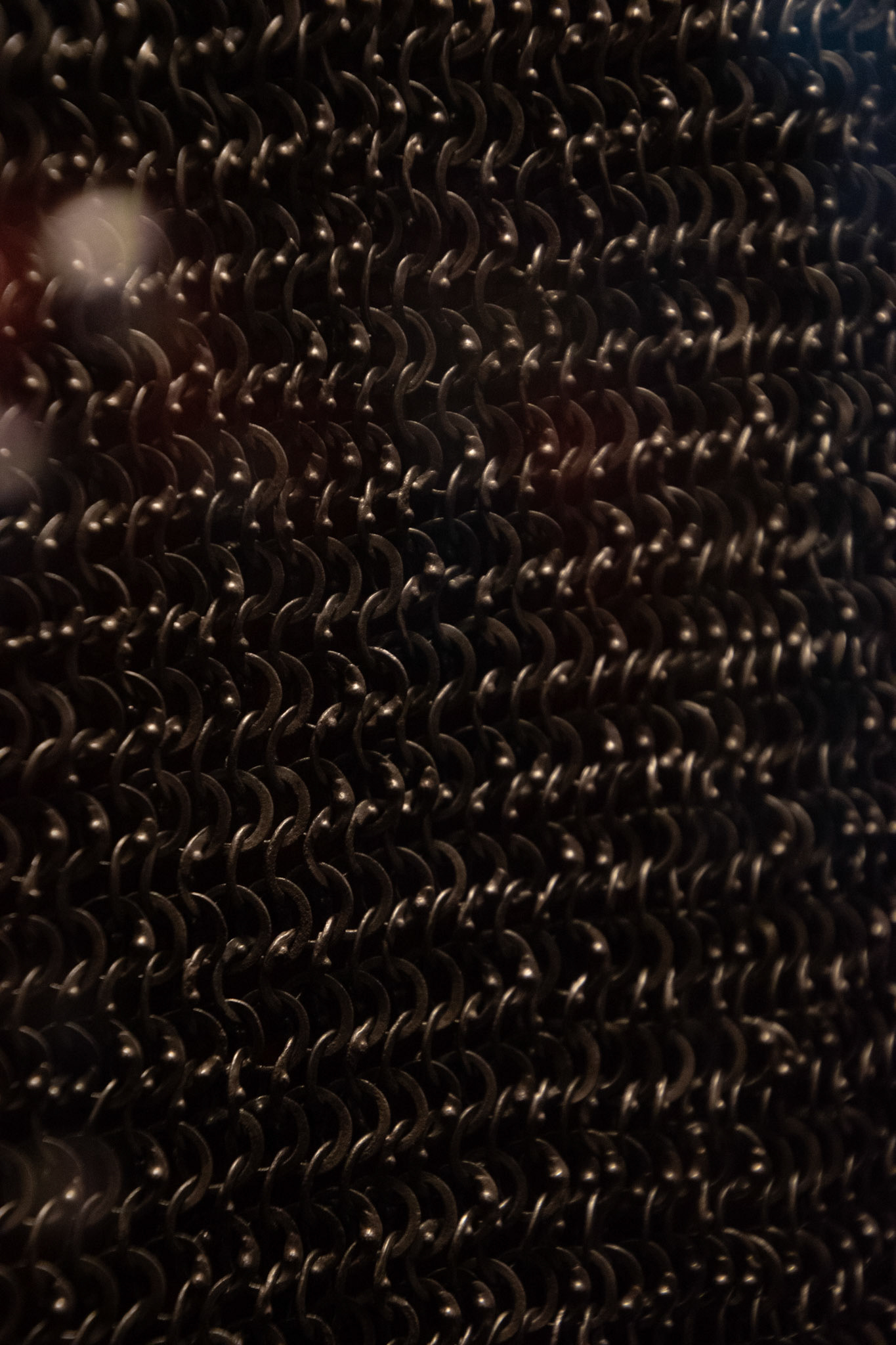
Germanic, mid 15th century, https://wallacelive.wallacecollection.org/eMP/eMuseumPlus?service=direct/1/ResultListView/result.t1.collection_list.$TspTitleImageLink.link&sp=10&sp=Scollection&sp=SfieldValue&sp=0&sp=56&sp=2&sp=SdetailList&sp=0&sp=Sdetail&sp=2&sp=F&sp=T&sp=0
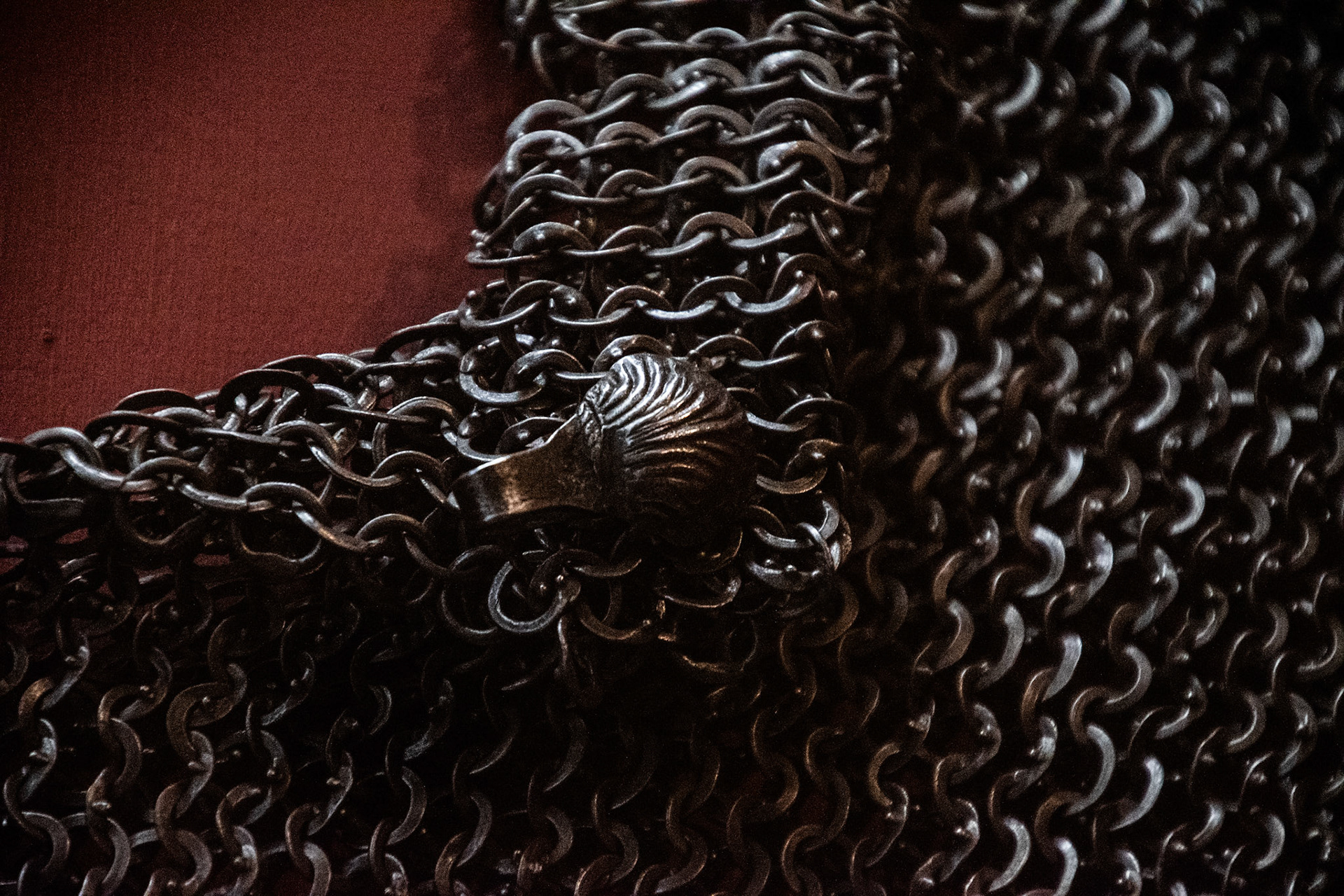
Germanic, 1450 - 1600, https://wallacelive.wallacecollection.org/eMP/eMuseumPlus?service=direct/1/ResultListView/result.t1.collection_list.$TspTitleImageLink.link&sp=10&sp=Scollection&sp=SfieldValue&sp=0&sp=58&sp=2&sp=SdetailList&sp=0&sp=Sdetail&sp=2&sp=F&sp=T&sp=0
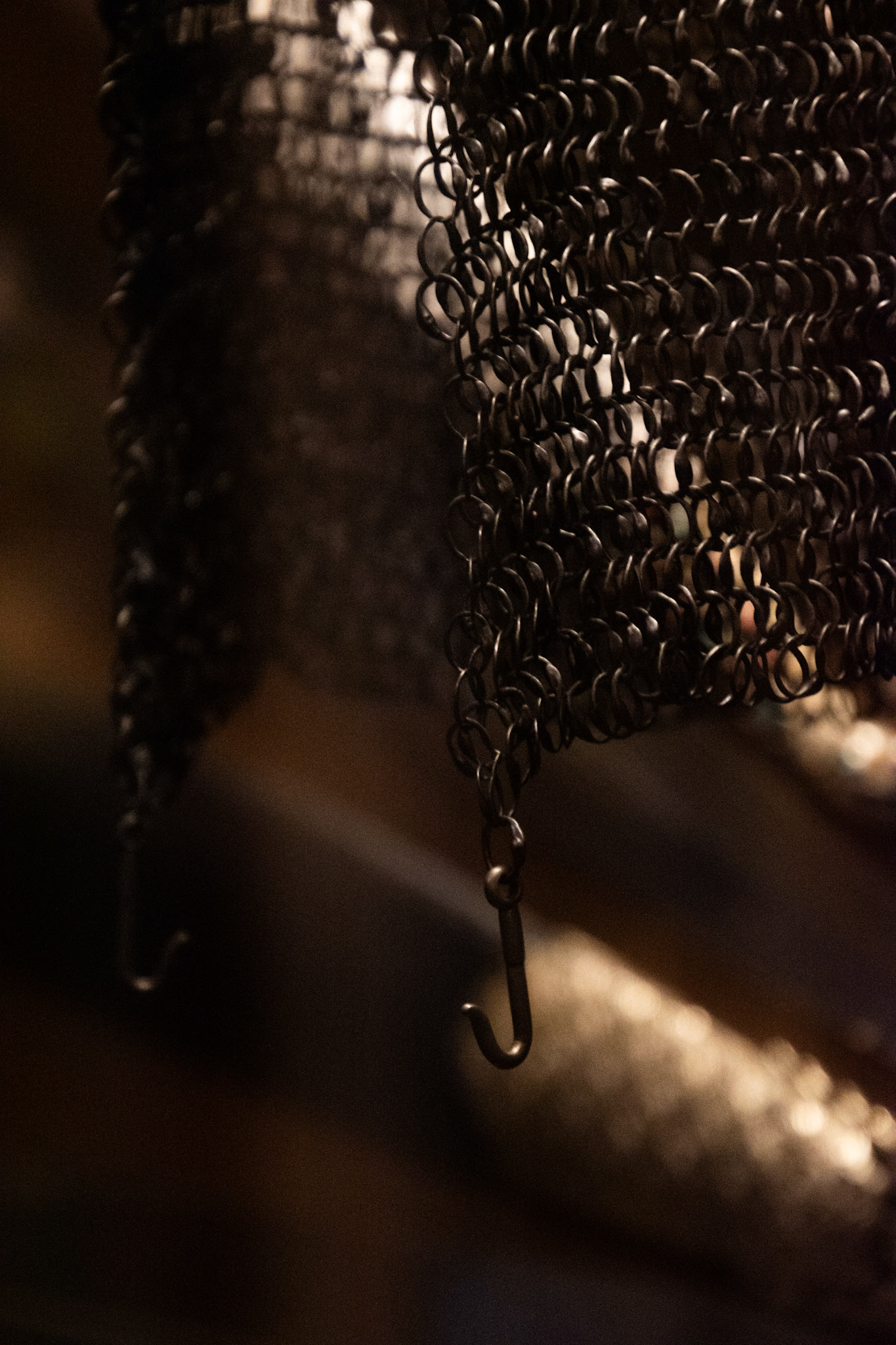
Southeastern Europe, possibly 1767 https://wallacelive.wallacecollection.org/eMP/eMuseumPlus?service=direct/1/ResultListView/result.t1.collection_list.$TspTitleLink.link&sp=10&sp=Scollection&sp=SfieldValue&sp=0&sp=12&sp=2&sp=SdetailList&sp=378&sp=Sdetail&sp=0&sp=F&sp=T&sp=390
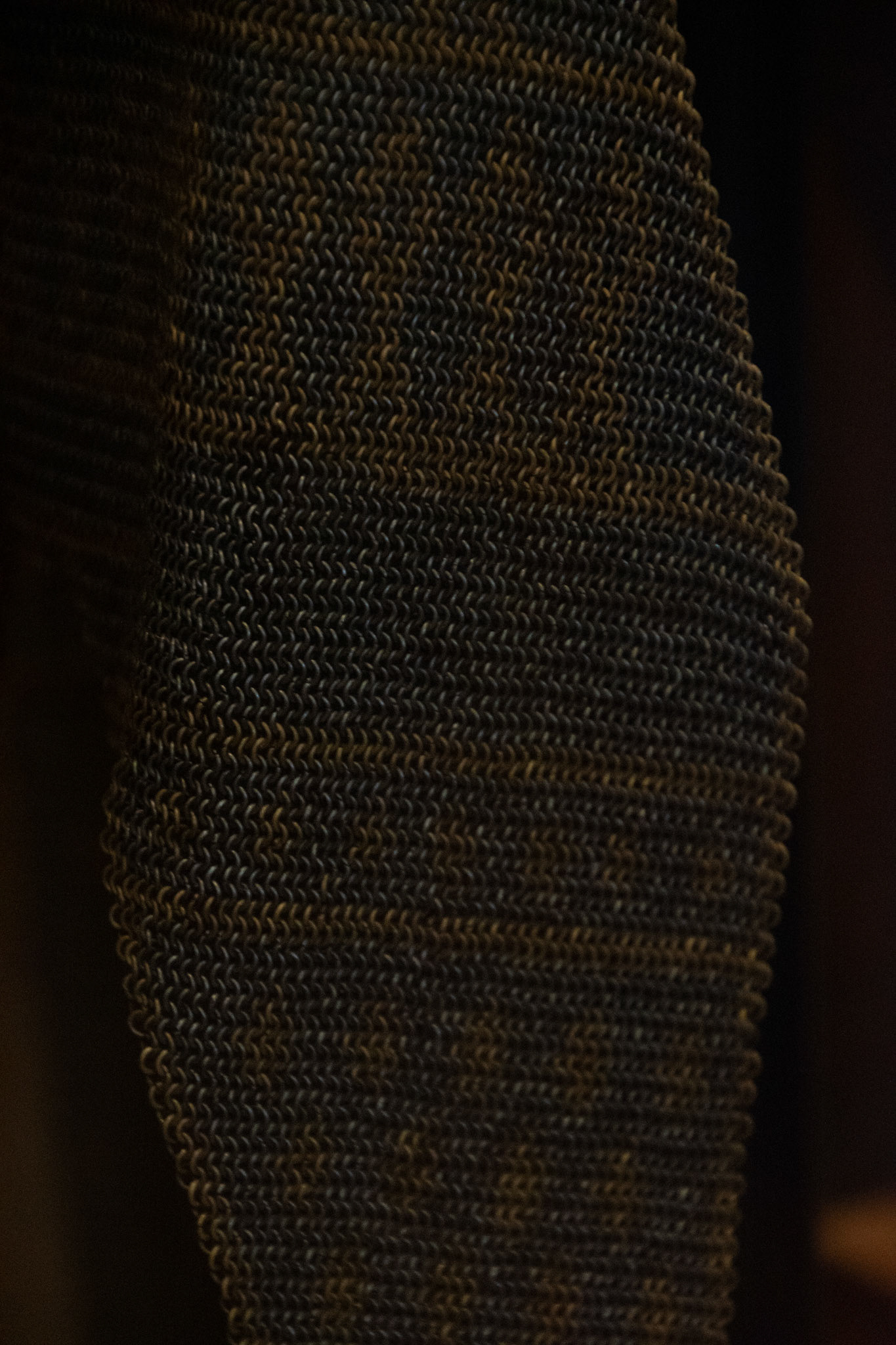
Iranian, 19th century, https://wallacelive.wallacecollection.org/eMP/eMuseumPlus?service=direct/1/ResultListView/result.t1.collection_list.$TspTitleLink$0.link&sp=10&sp=Scollection&sp=SfieldValue&sp=0&sp=20&sp=2&sp=SdetailList&sp=0&sp=Sdetail&sp=2&sp=F&sp=T&sp=0

Indian, Sind, 19th century, https://wallacelive.wallacecollection.org/eMP/eMuseumPlus?service=direct/1/ResultListView/result.t1.collection_list.$TspTitleLink.link&sp=10&sp=Scollection&sp=SfieldValue&sp=0&sp=21&sp=2&sp=SdetailList&sp=378&sp=Sdetail&sp=2&sp=F&sp=T&sp=383
Photos taken at Wallace Collection
I was drawn to the versatility of mail to fully cover and protect the body whilst still allowing free movement. I also discovered the variation of its application through different link sizes and the incorporation of sheet into its design. Furthermore, the use of differing metals creates patterns and design to an otherwise uniform sheet structure. Finally, I like the permeability of the structure, once seen as its flaw, I believe there are narratives of vulnerability and exposure to be explored through a contemporary lens.
Details

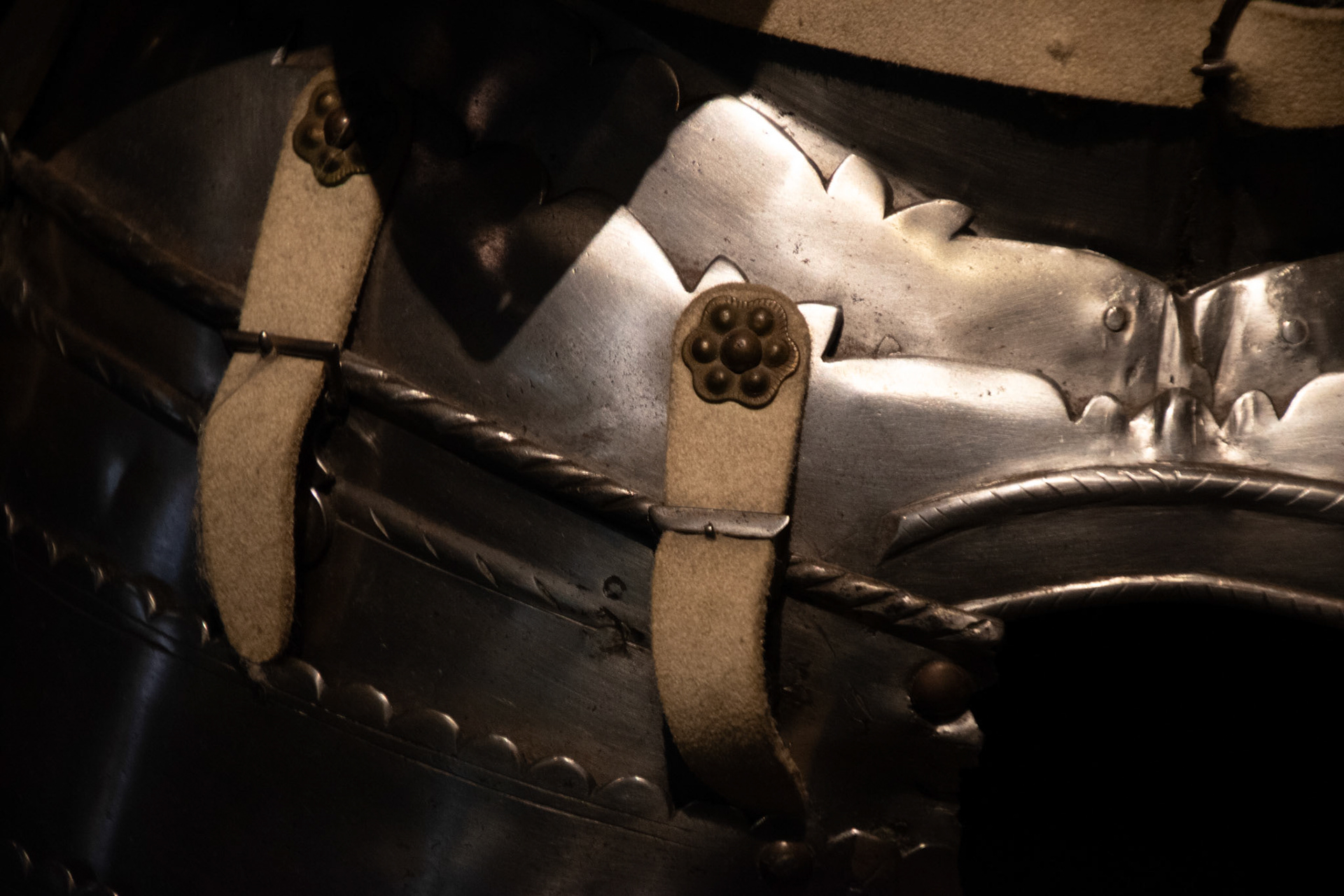

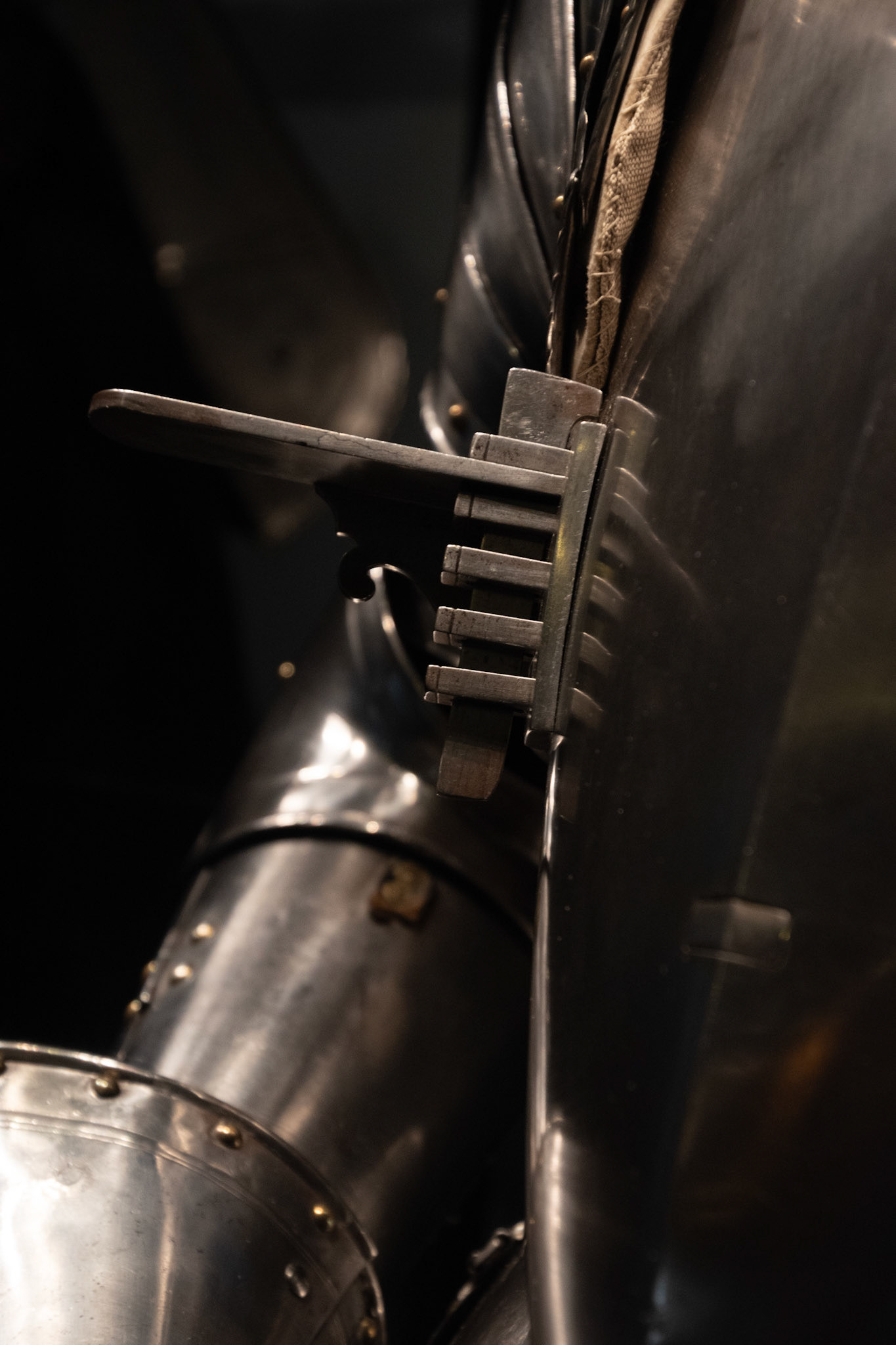
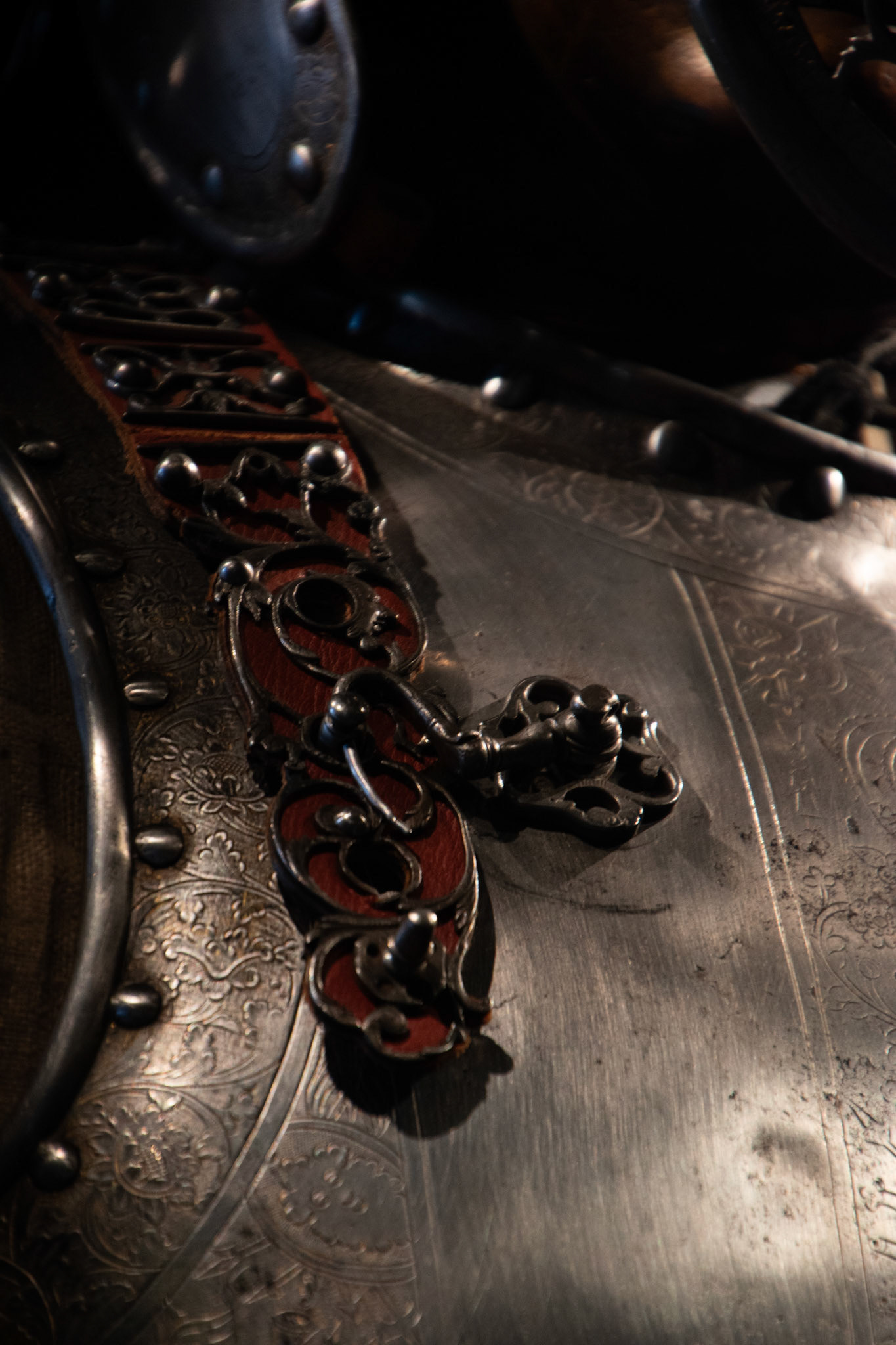
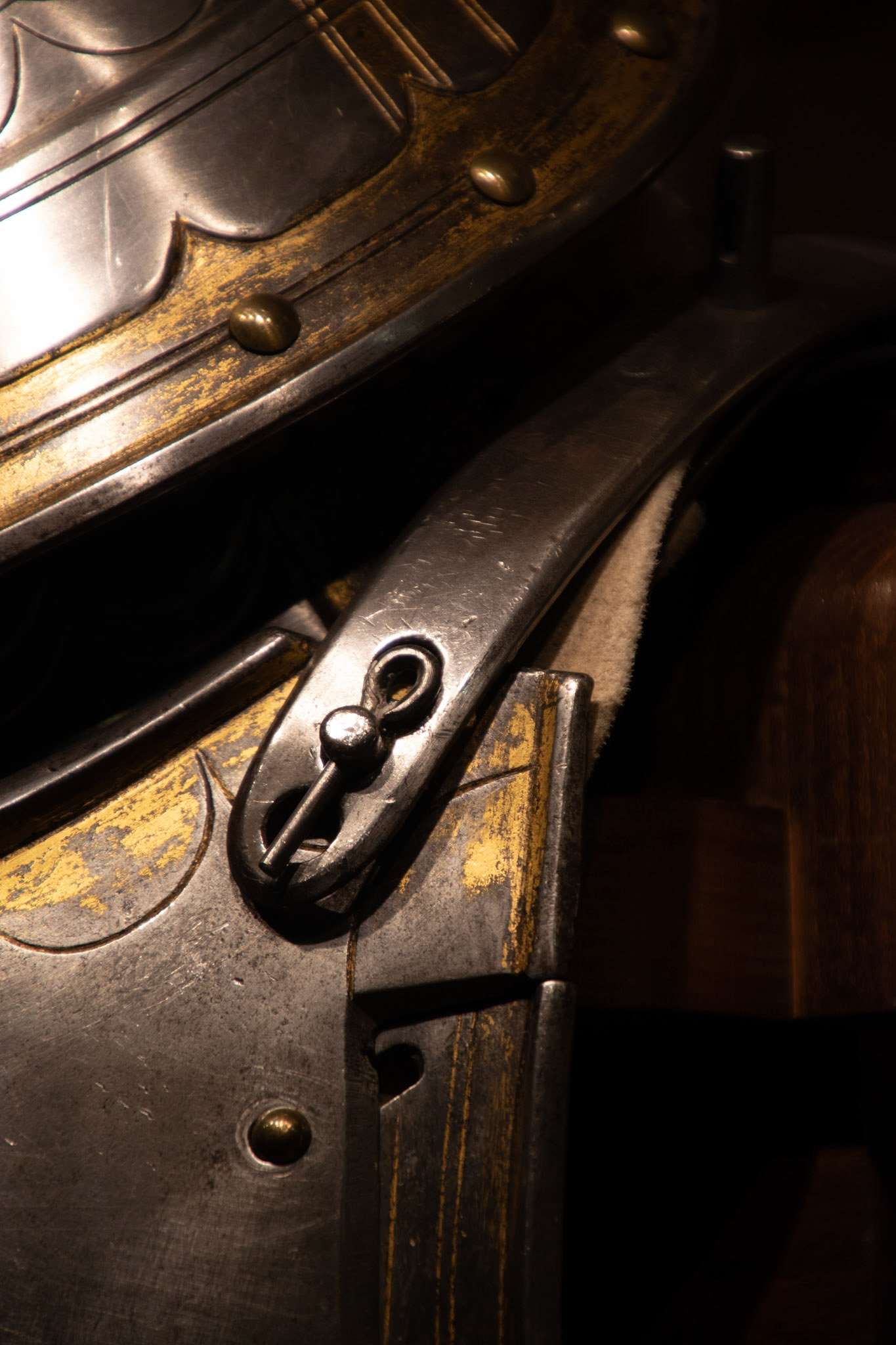
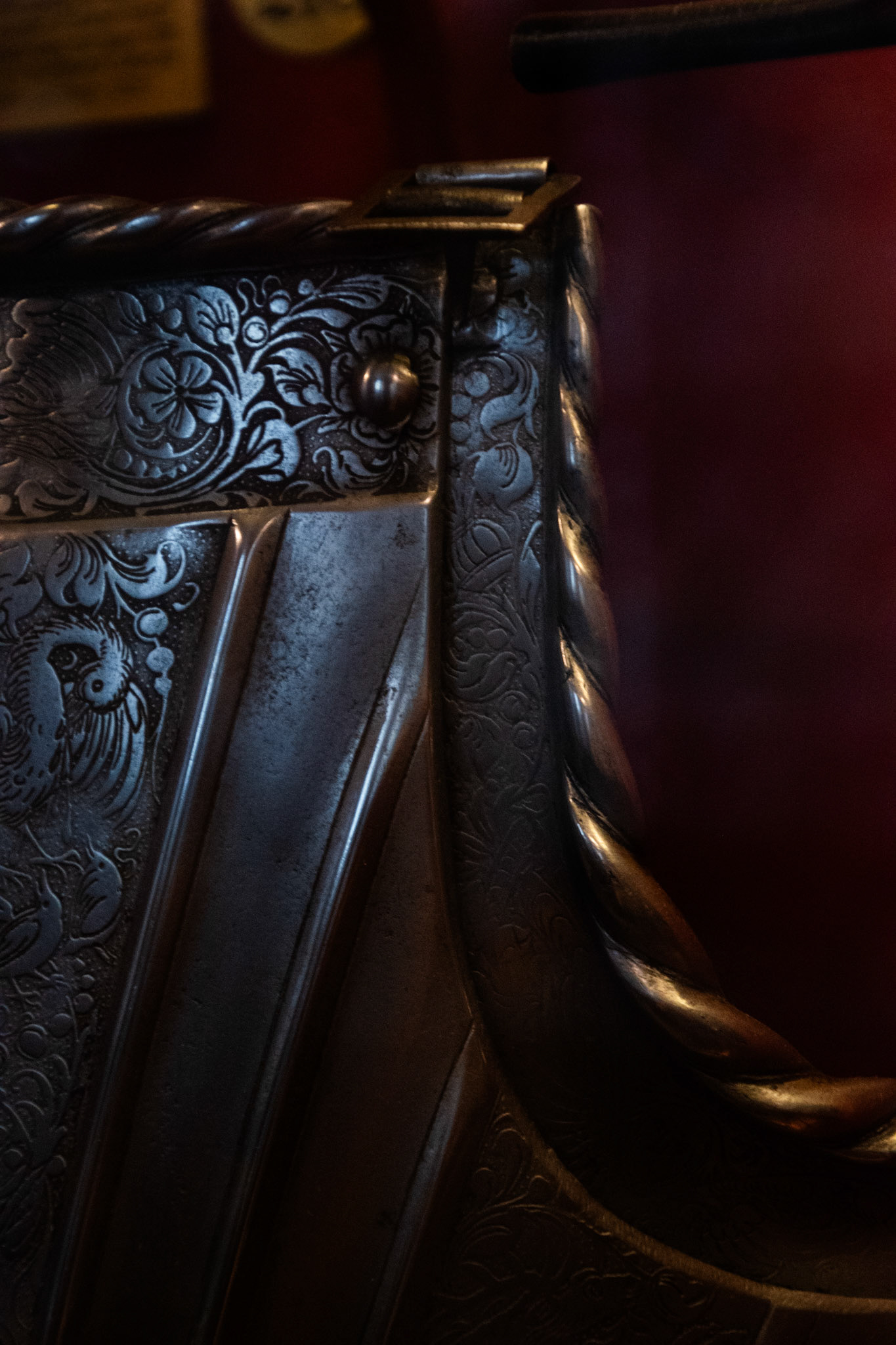

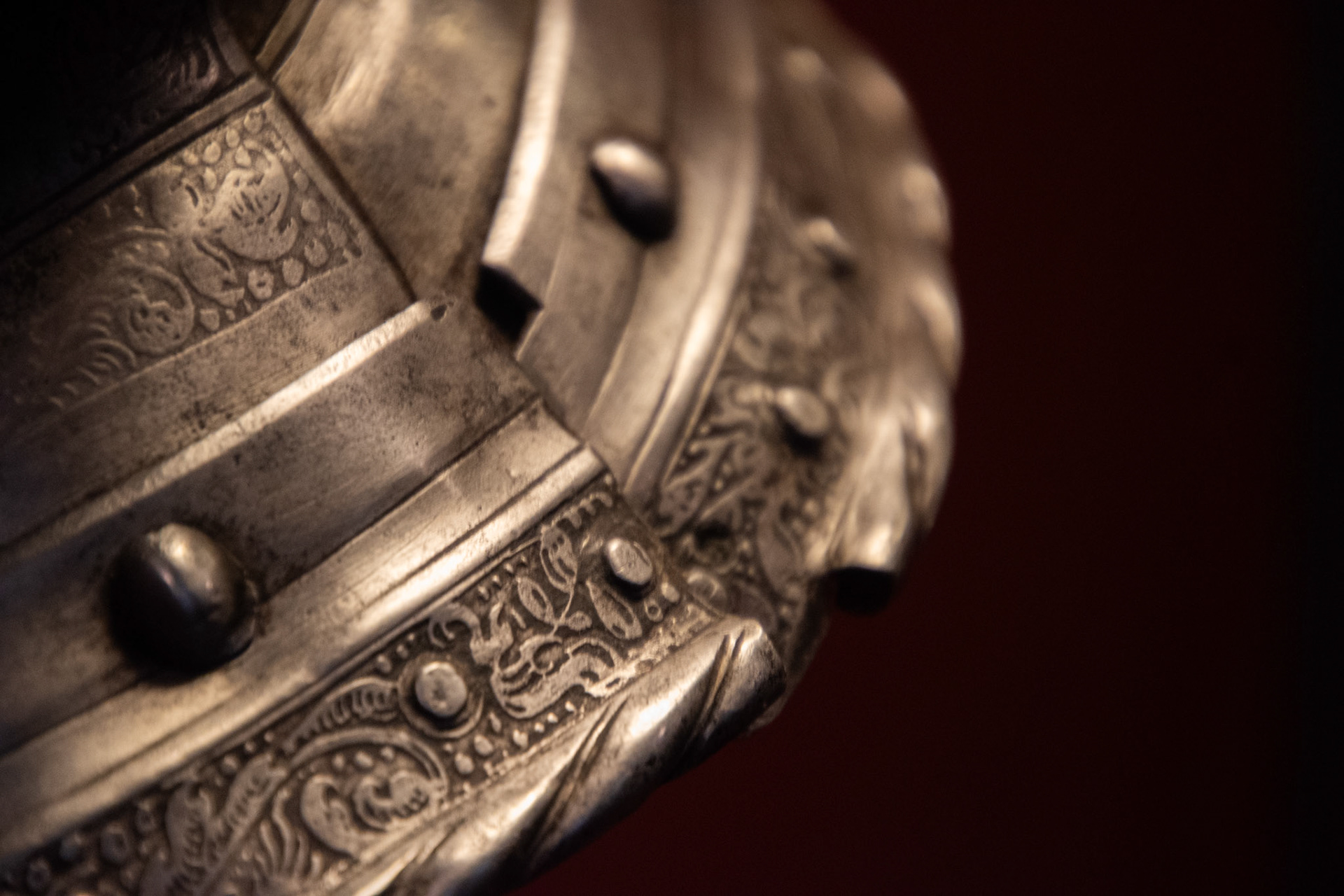
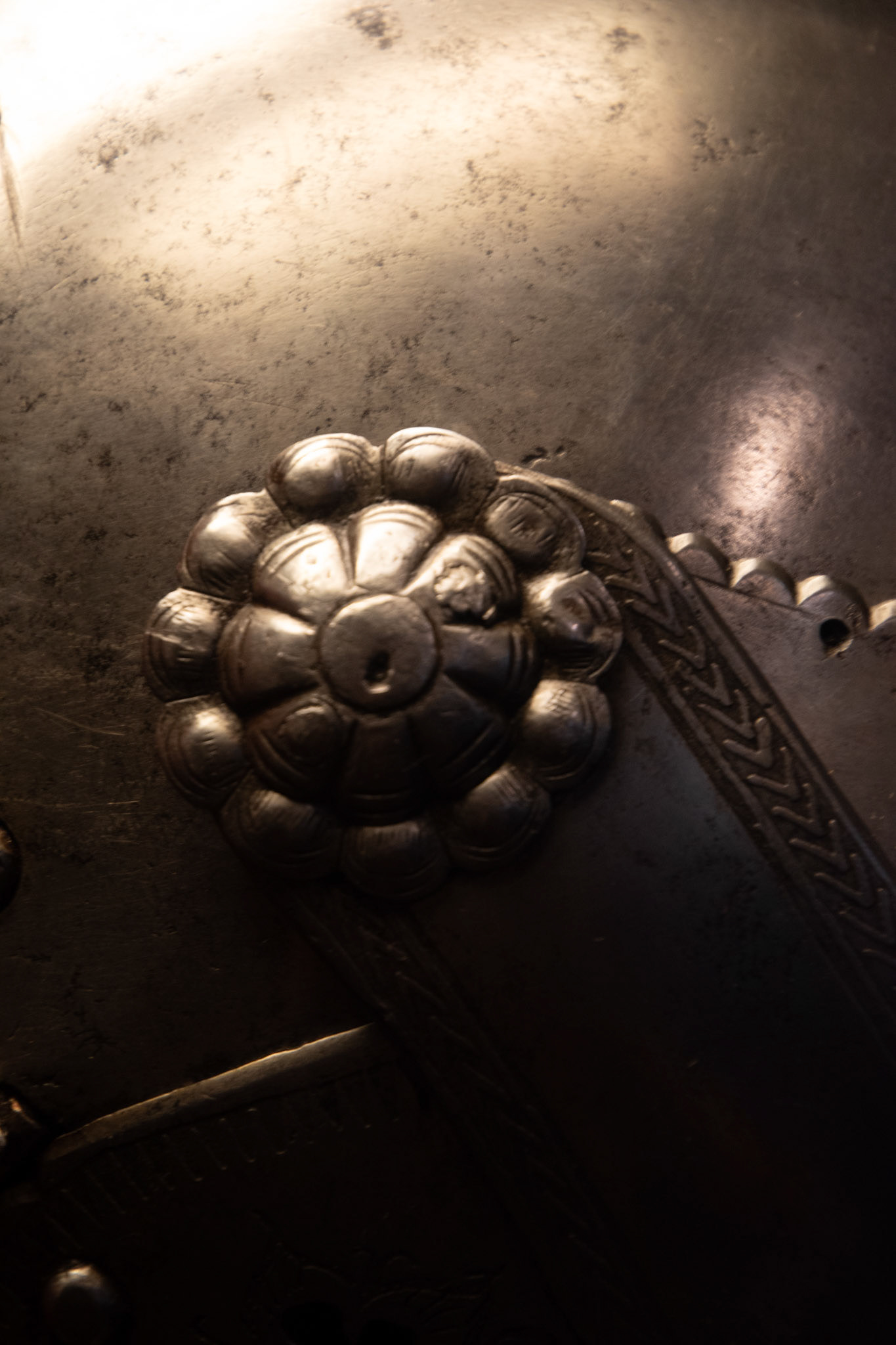

I focused on capturing the different attachment mechanisms and holding across different pieces of armour. I wanted to explore how historically these pieces were held together and put onto the body so that I can take inspirations in my own work.

